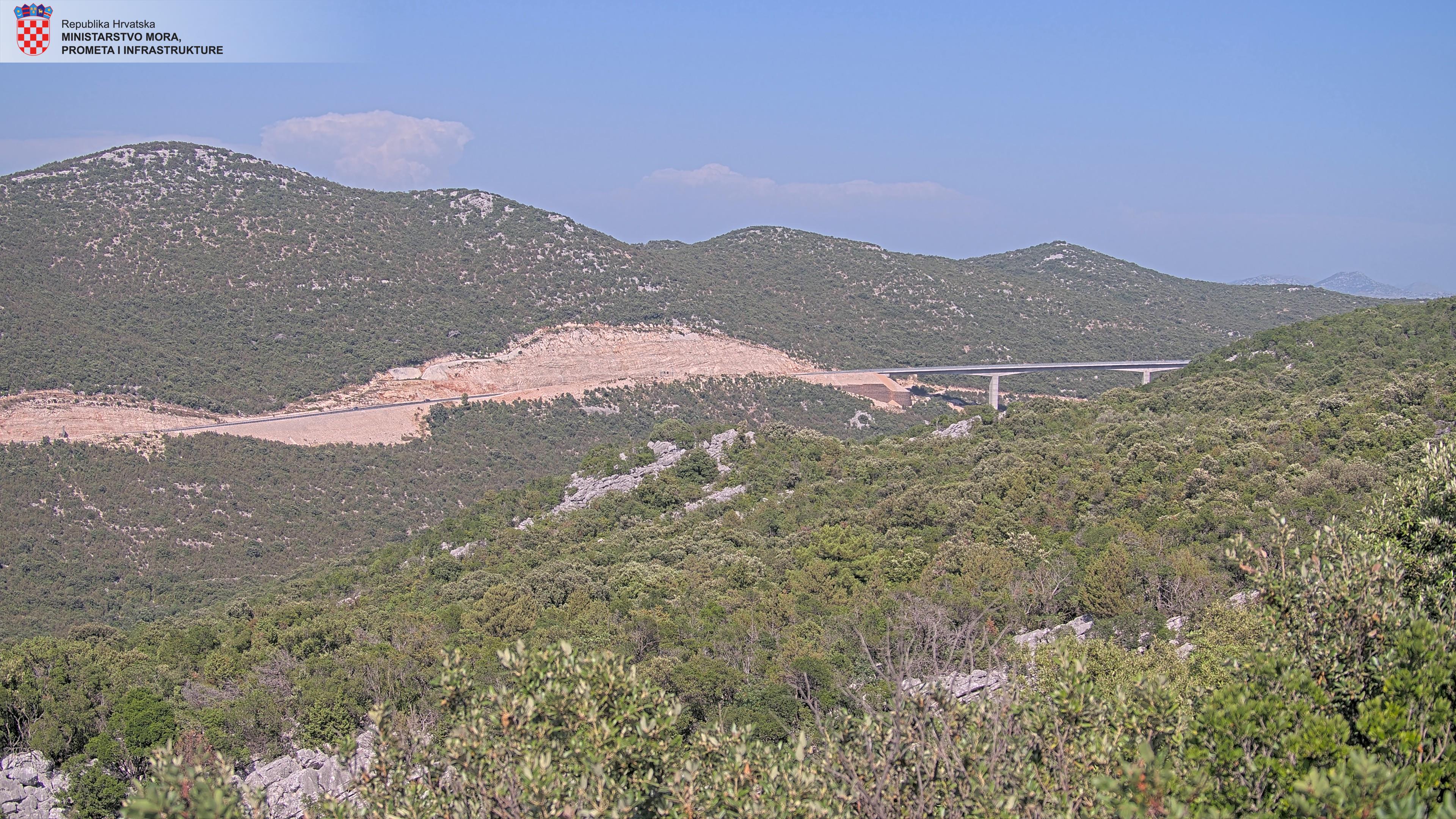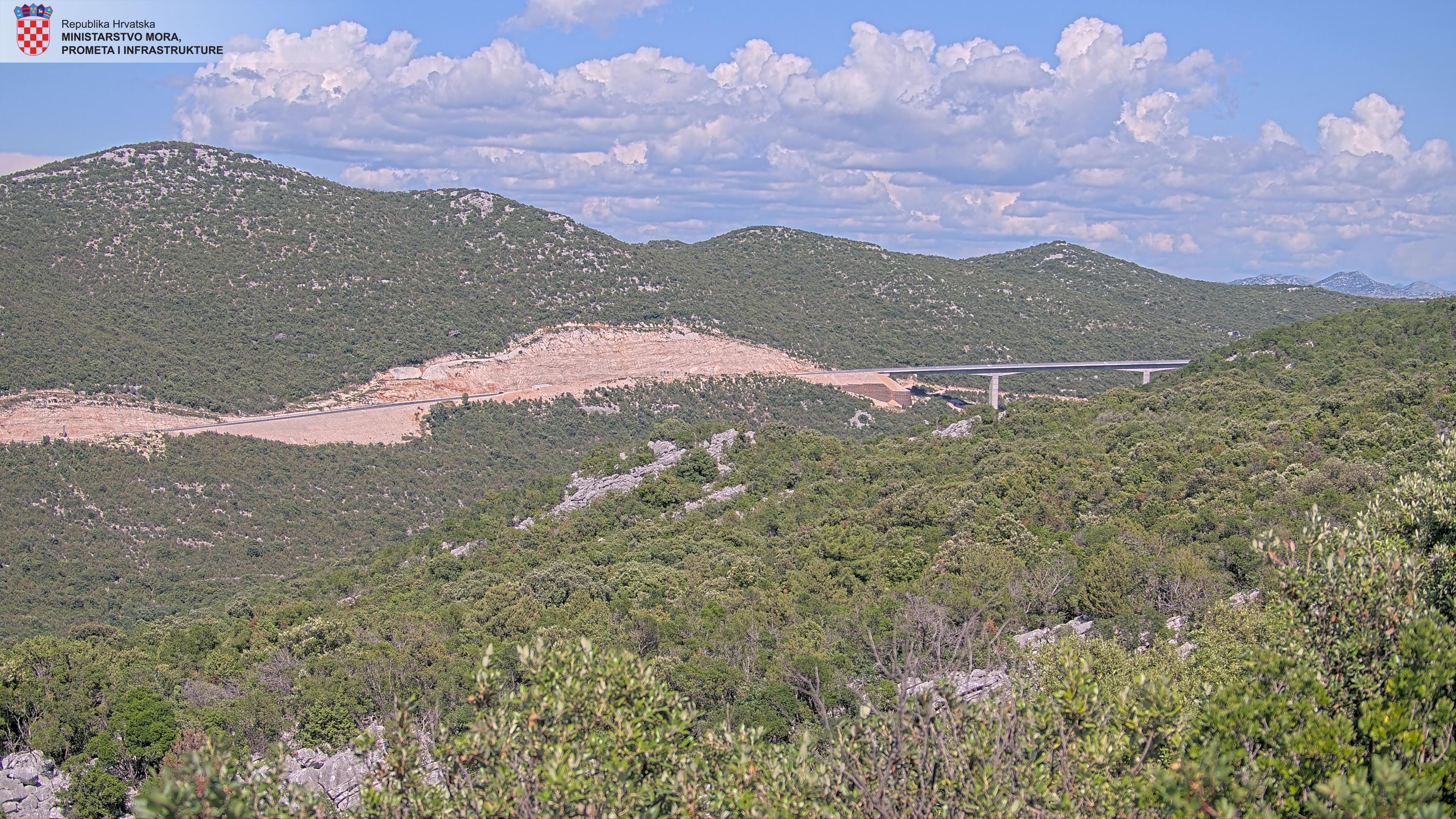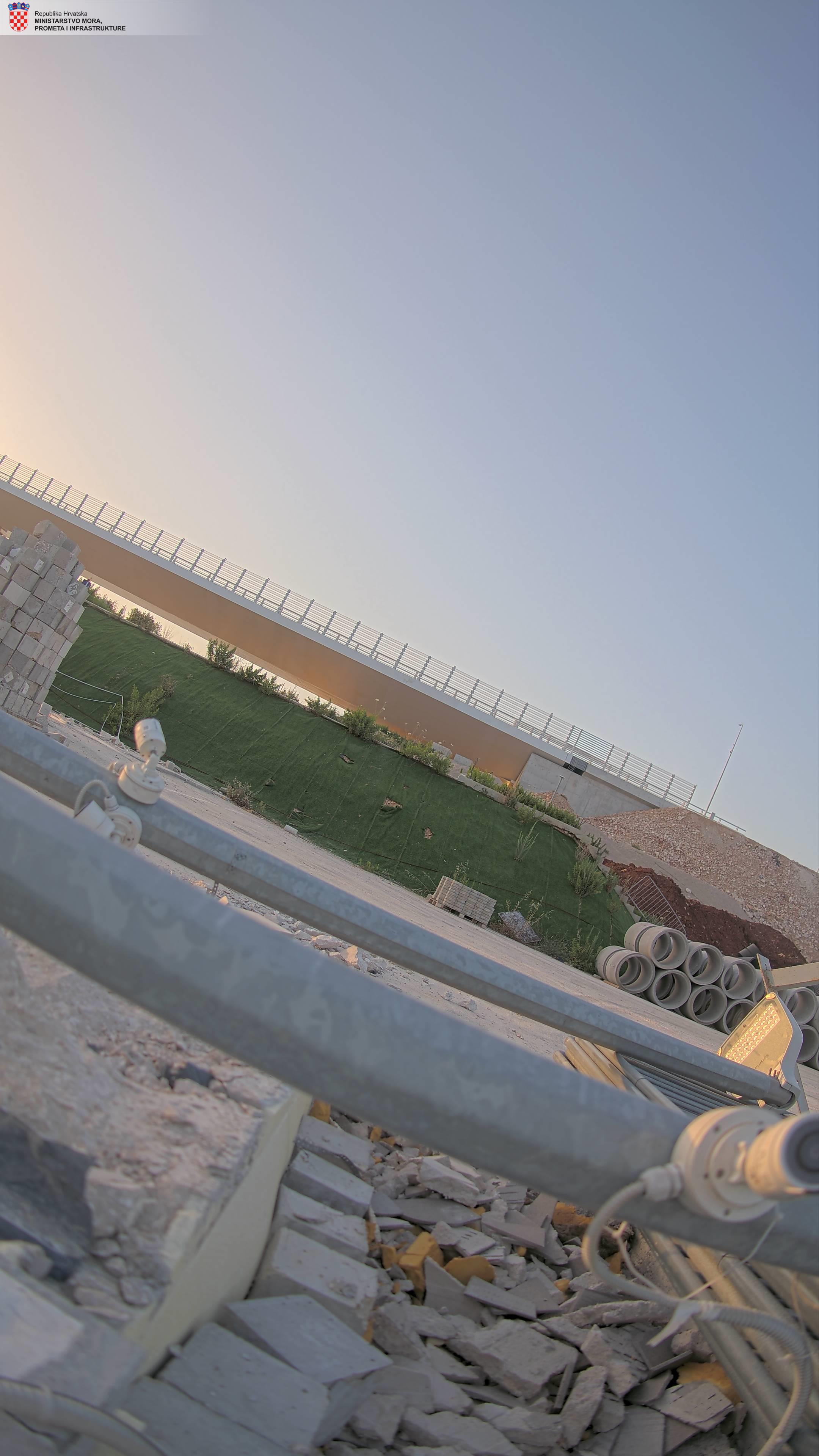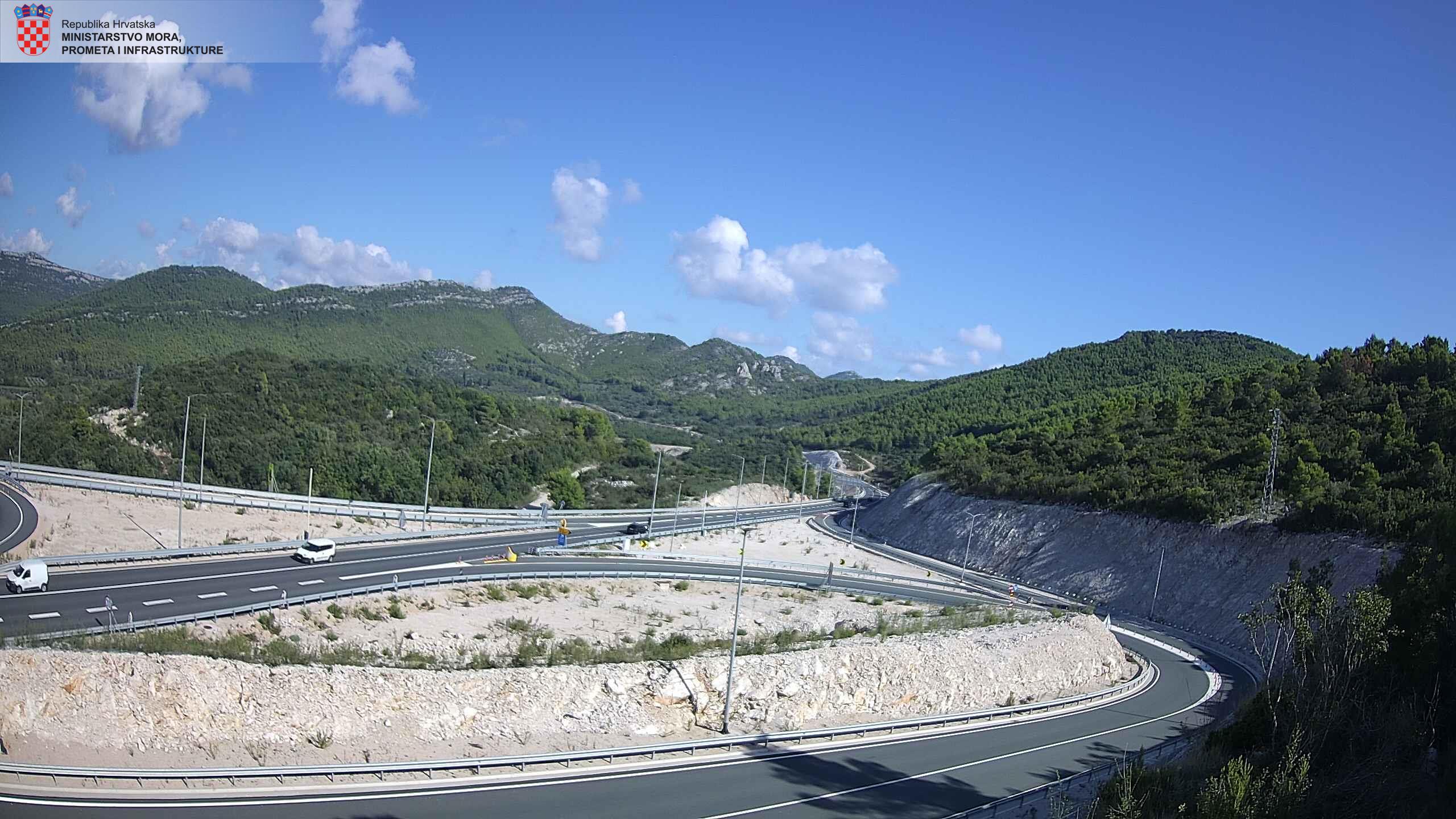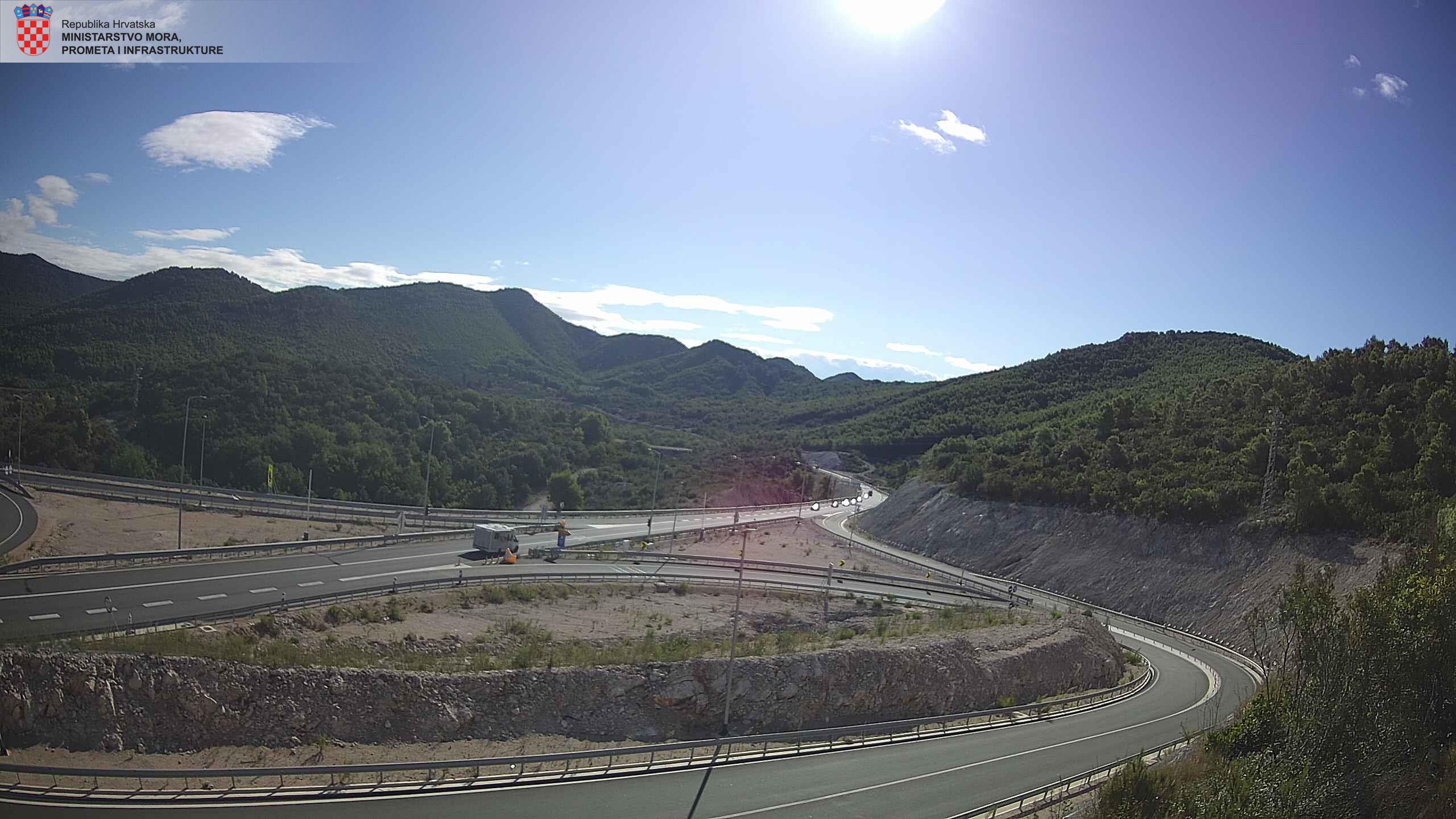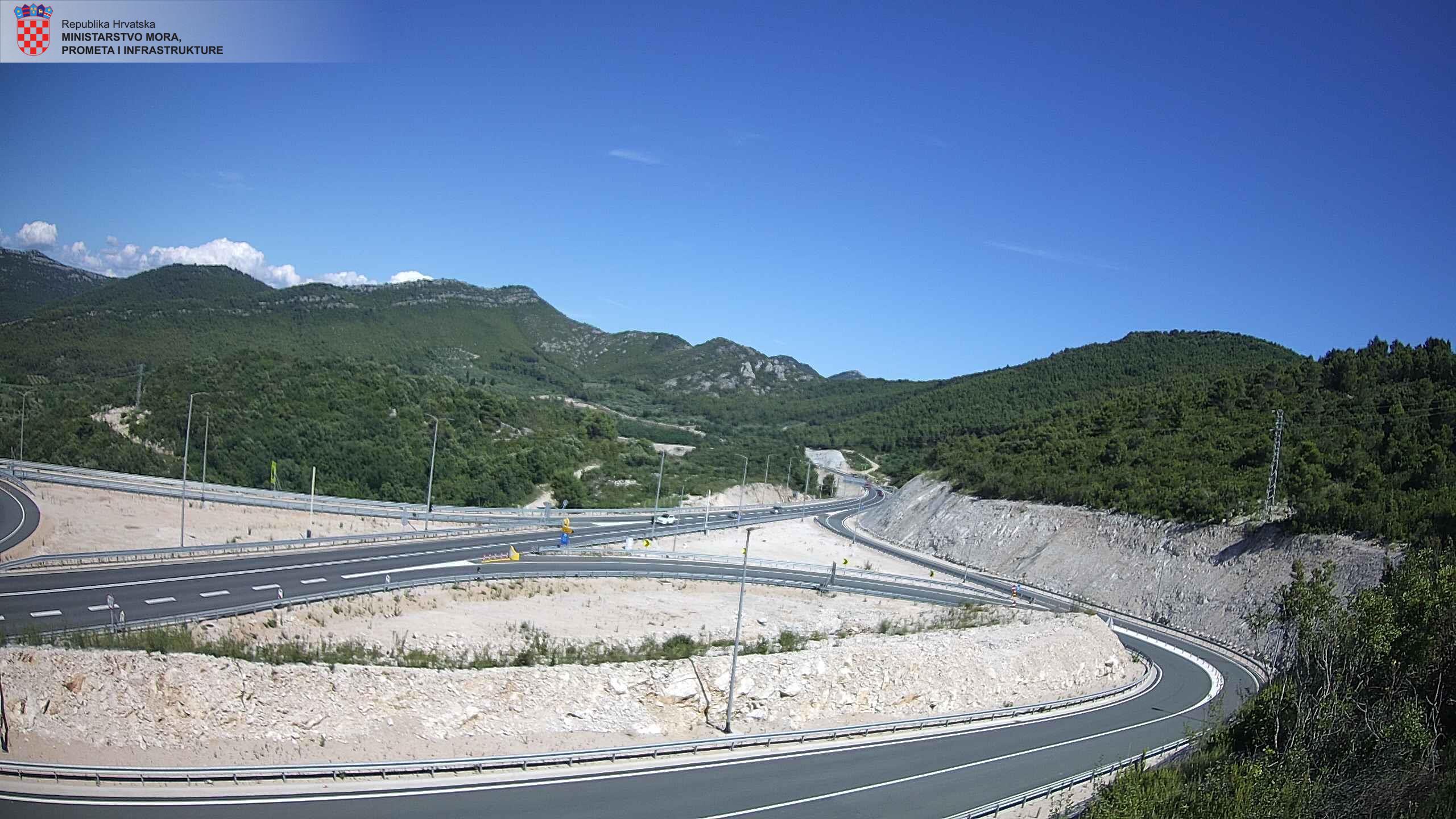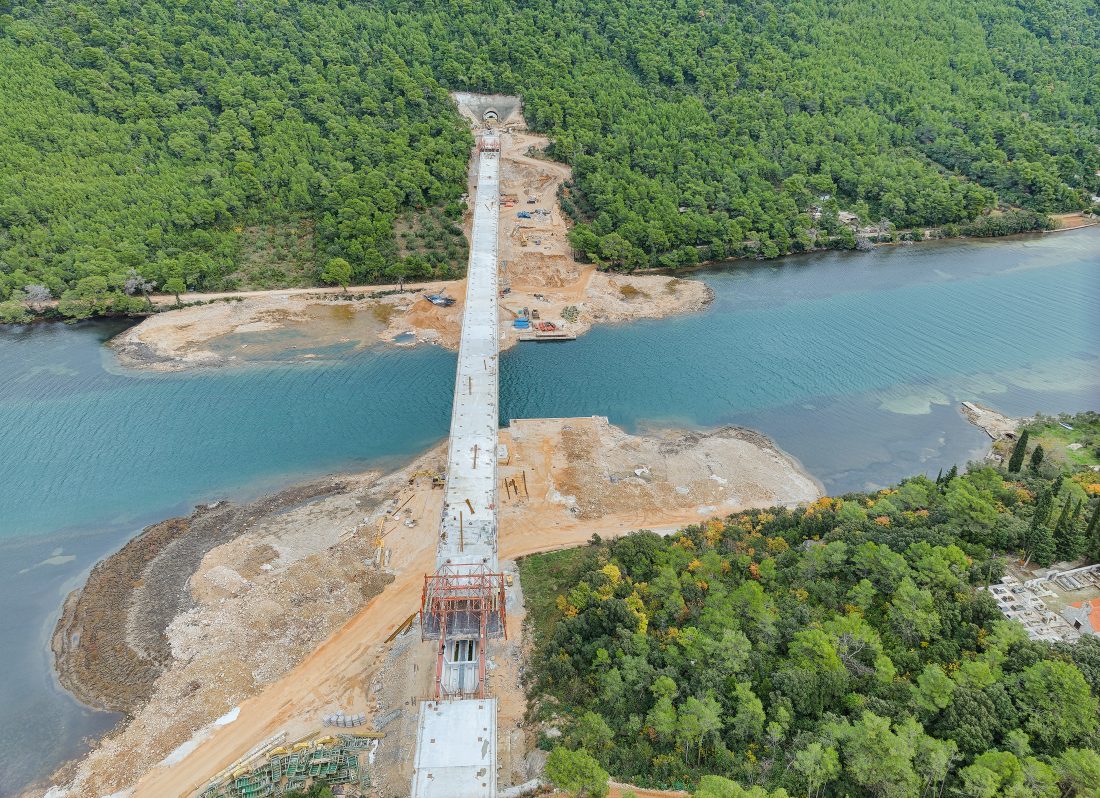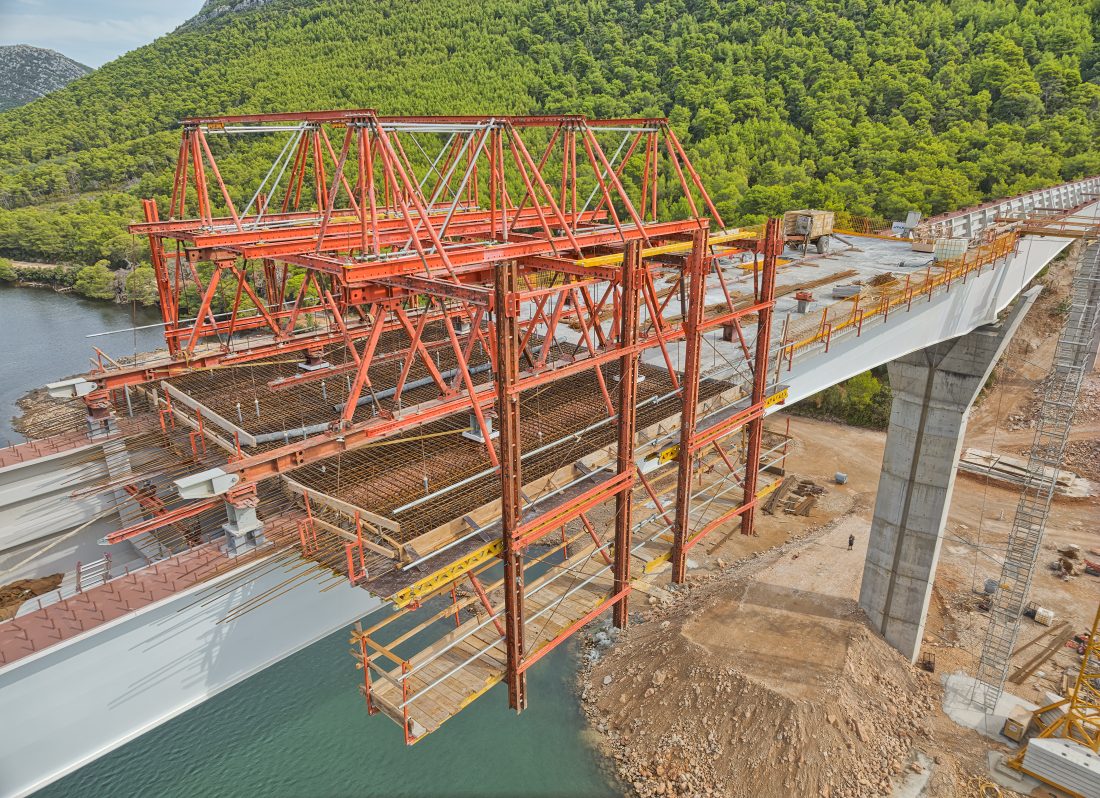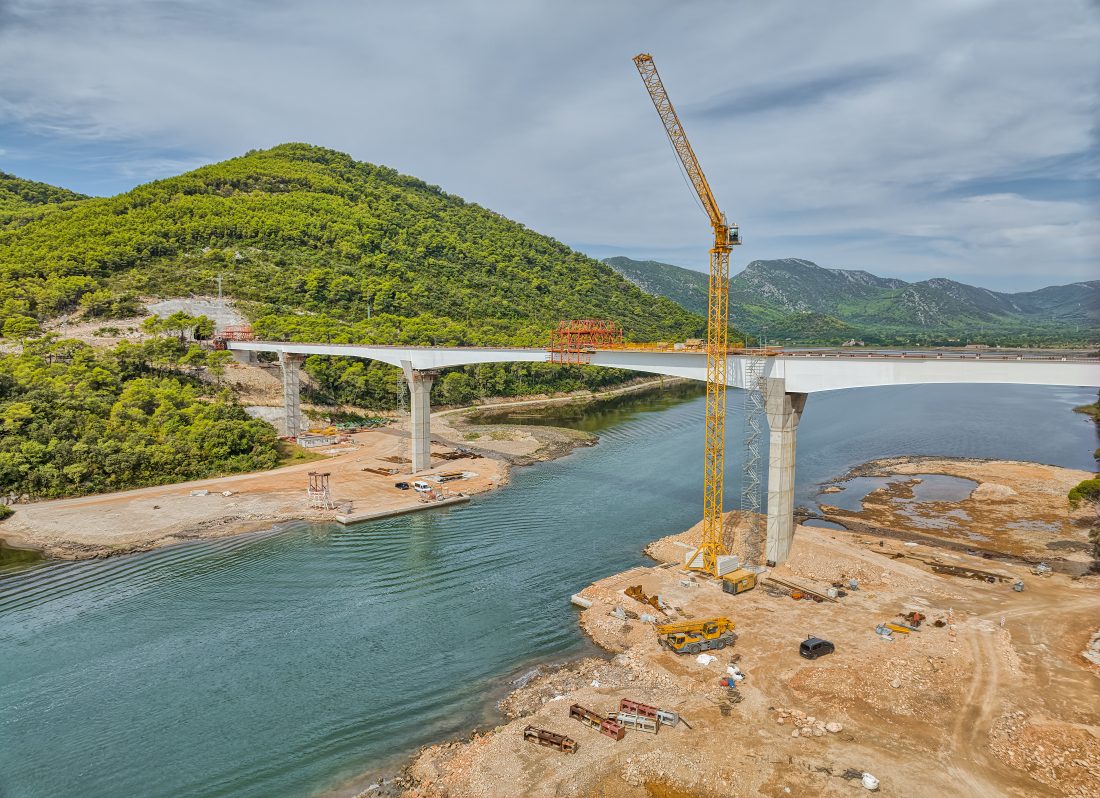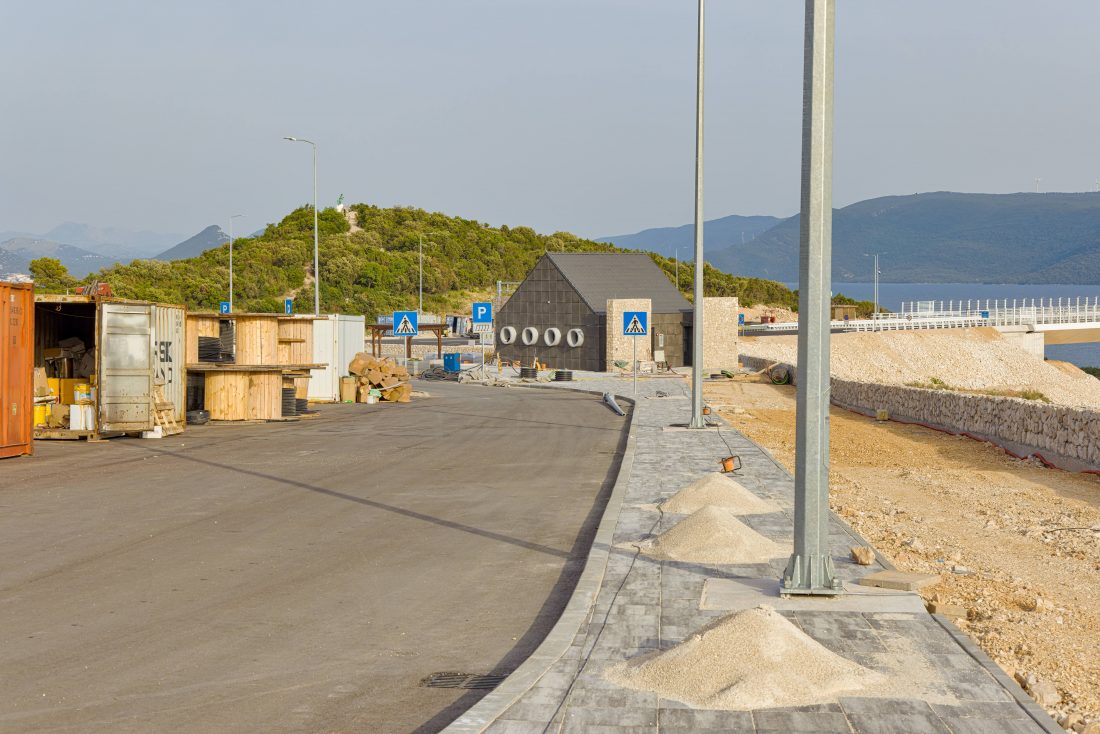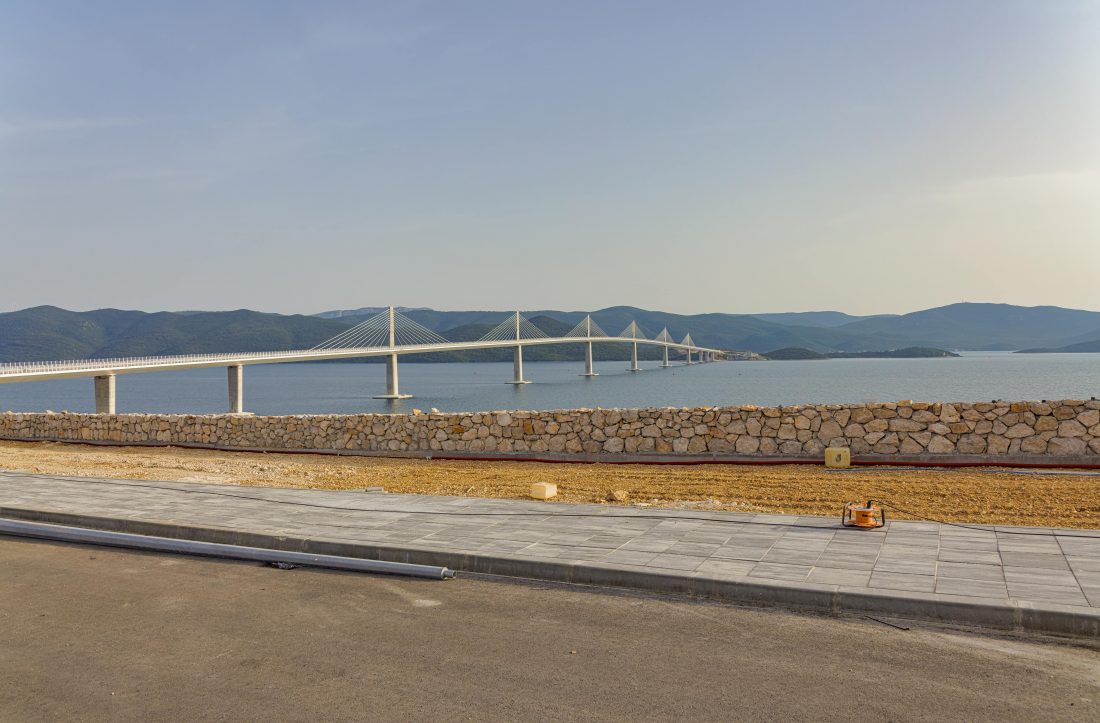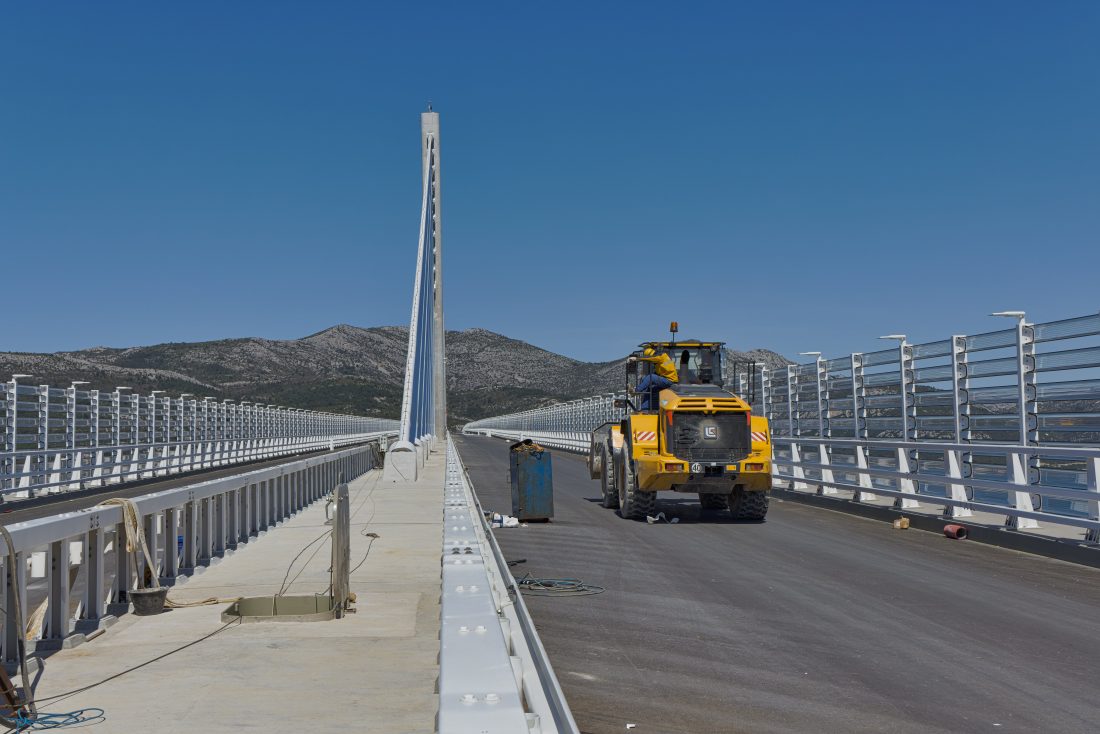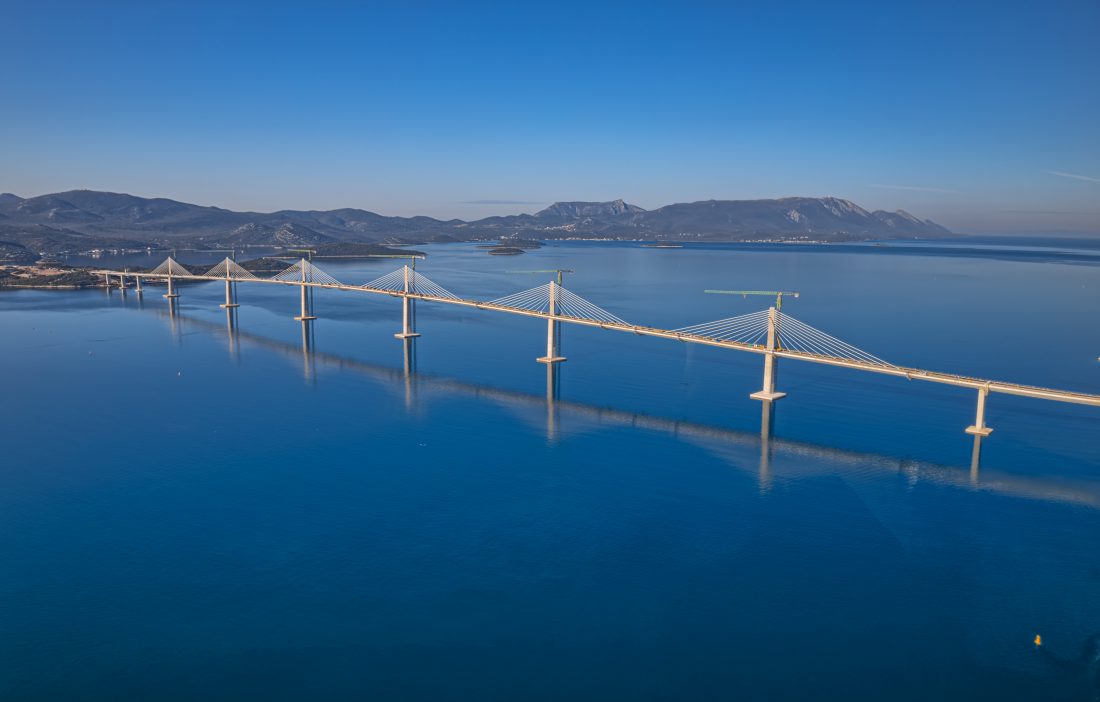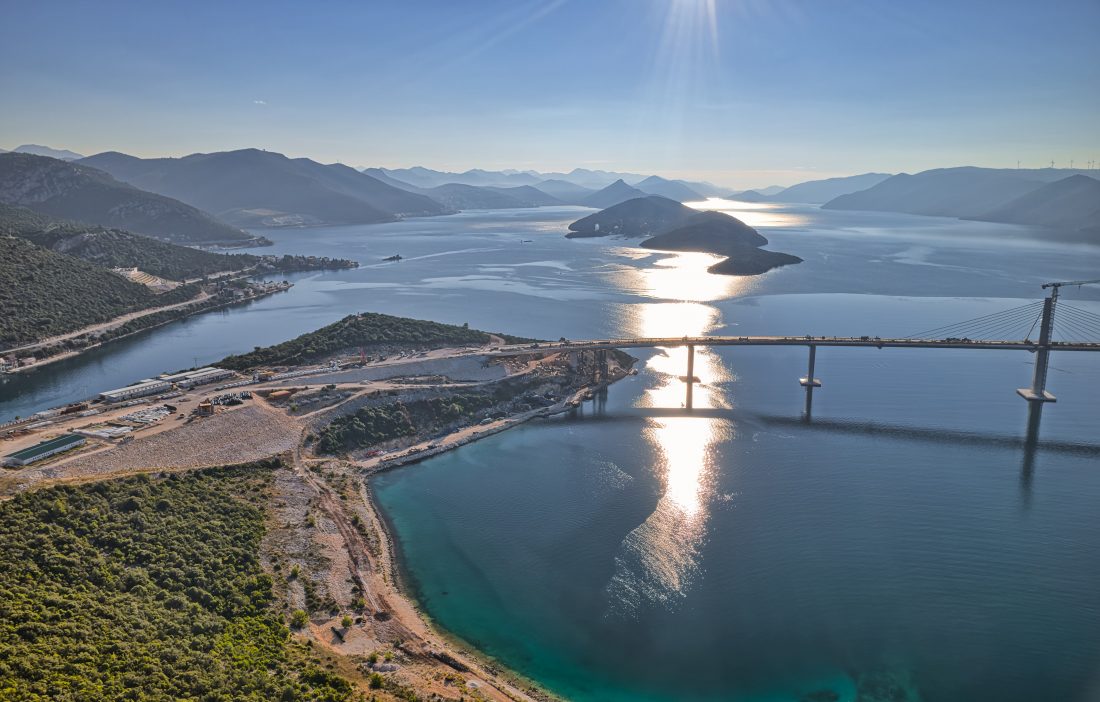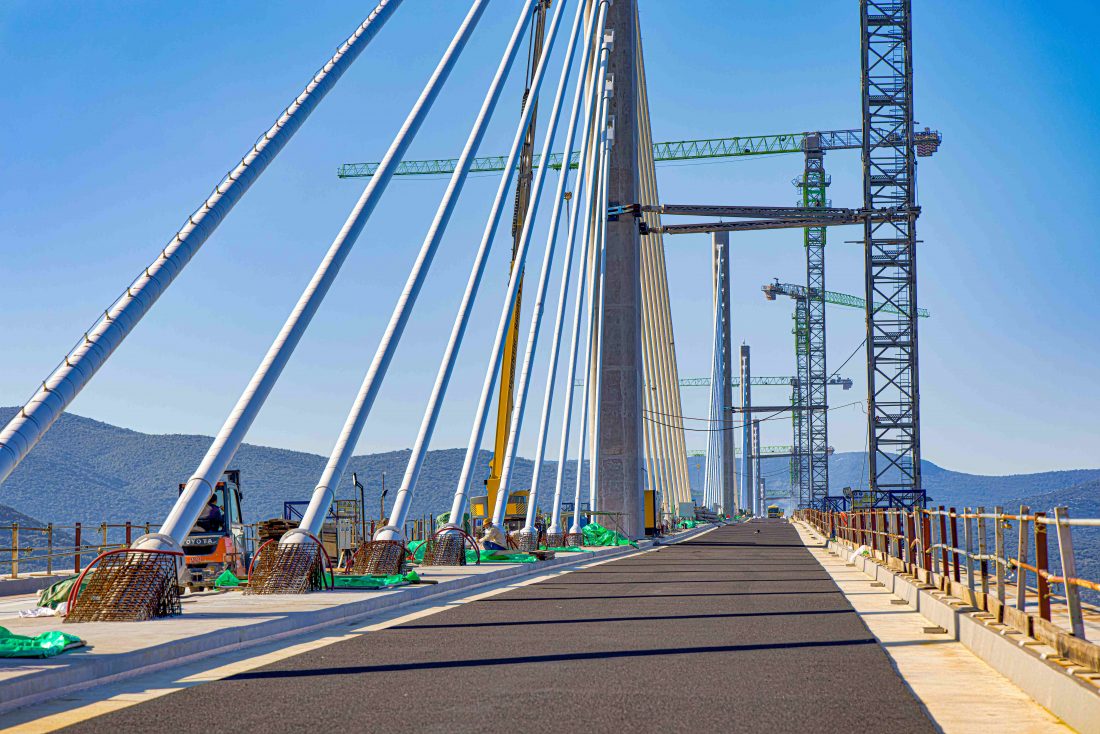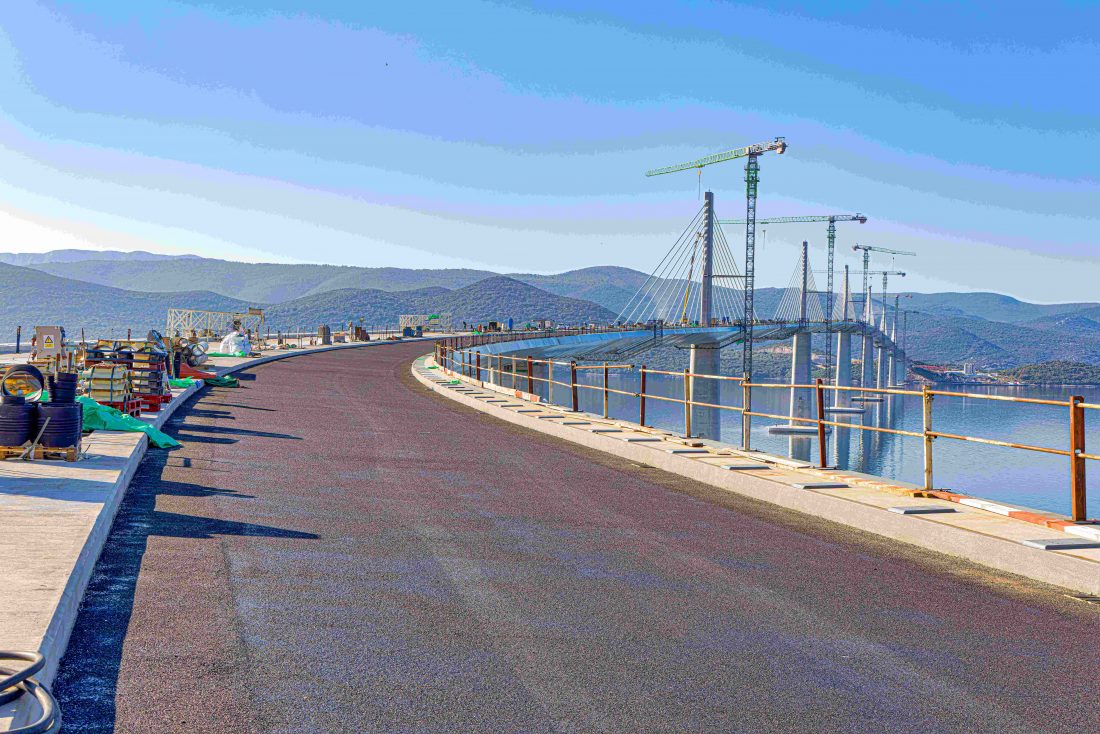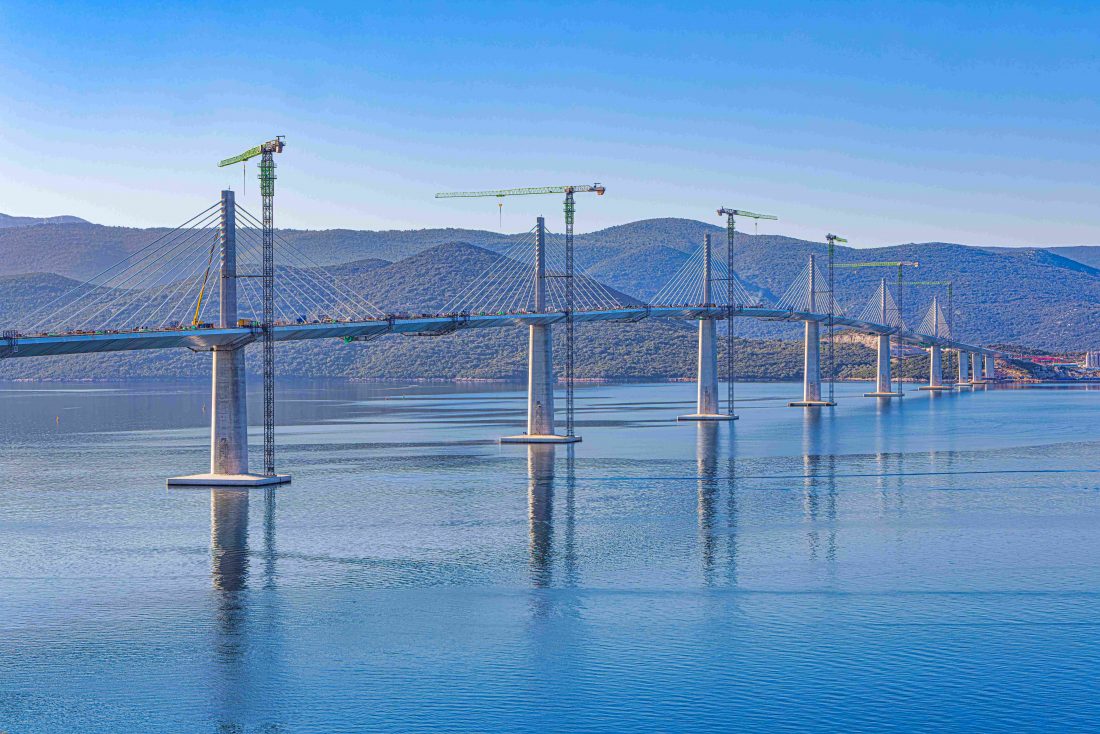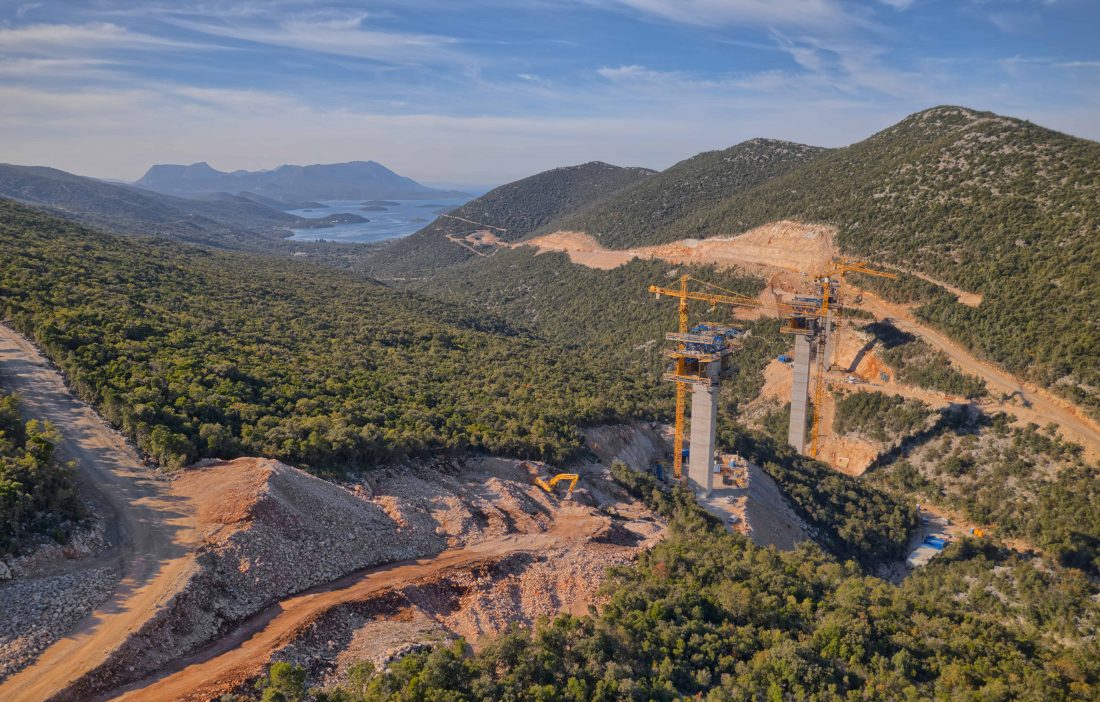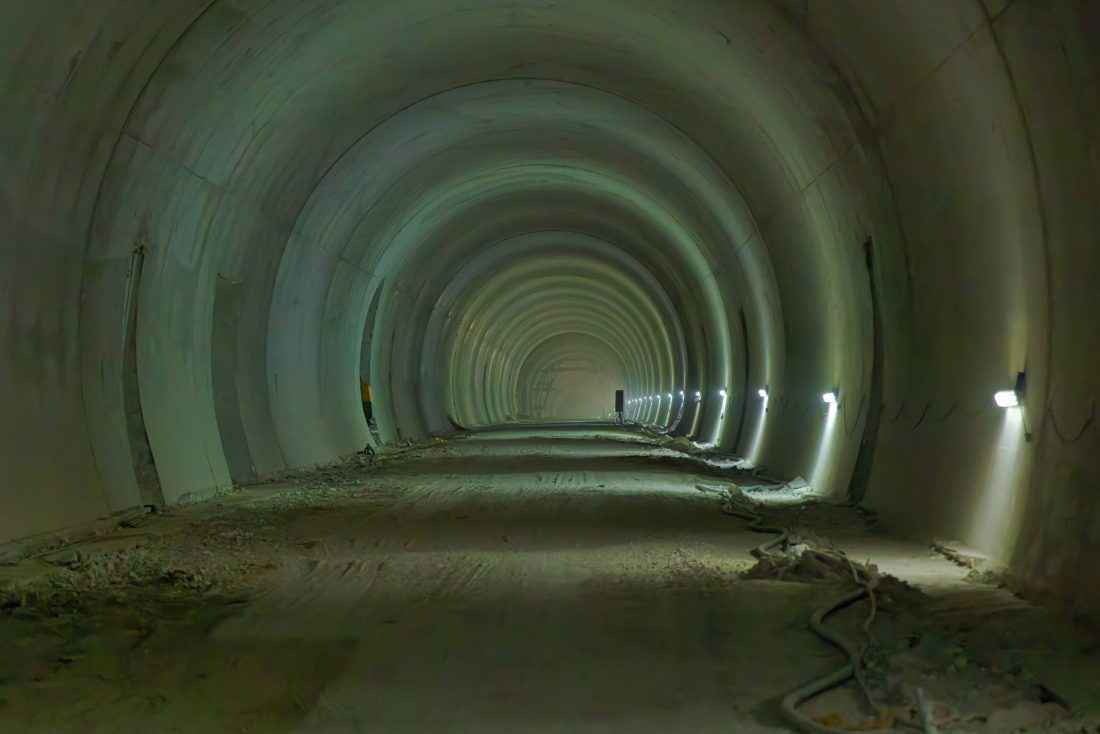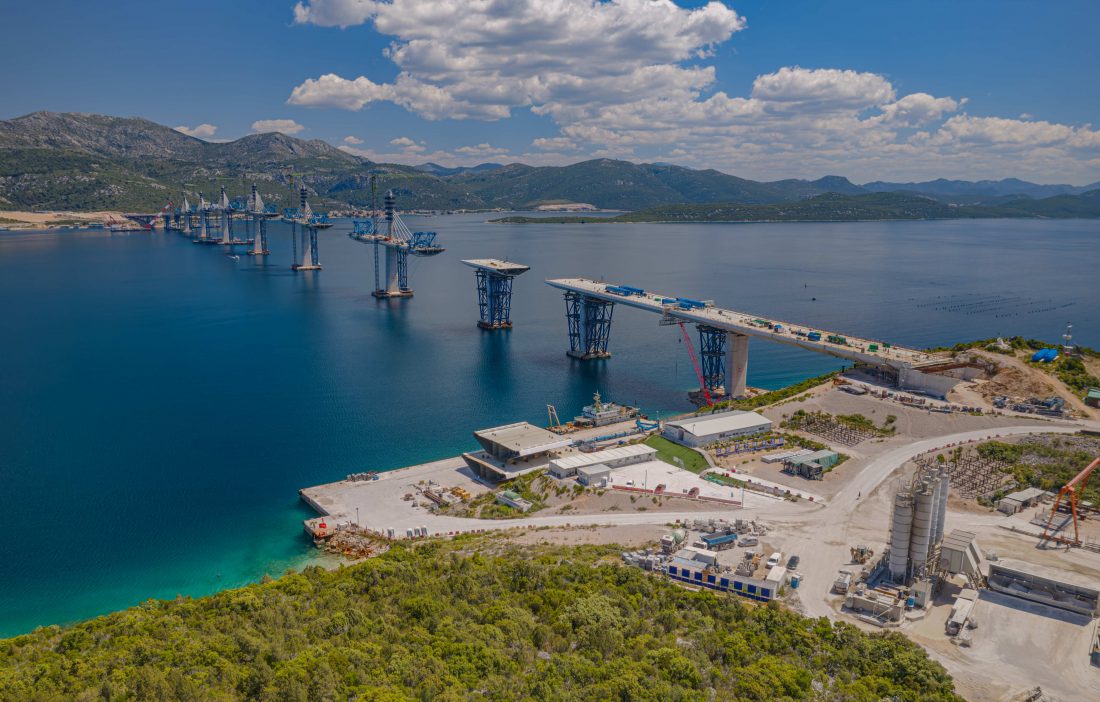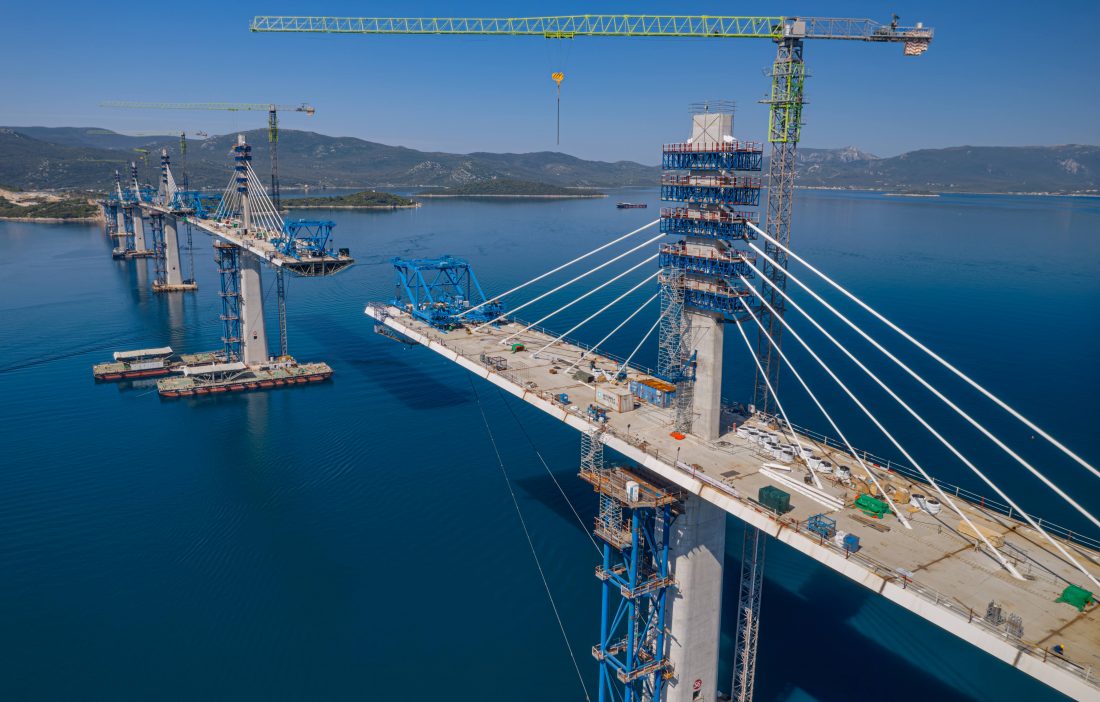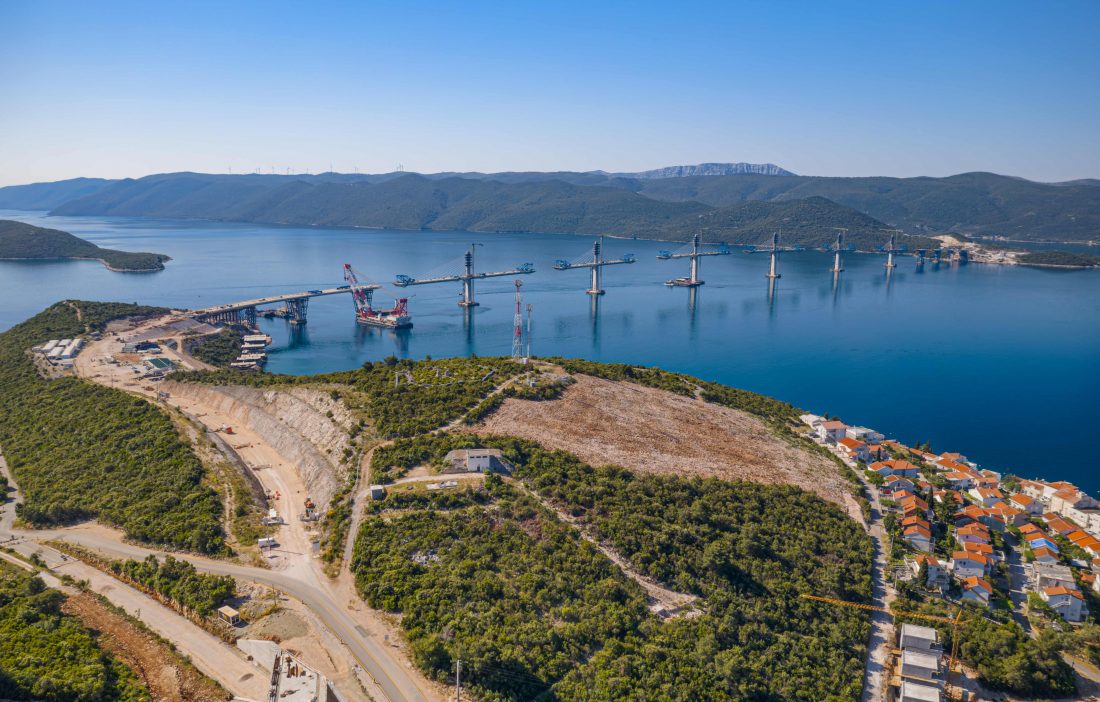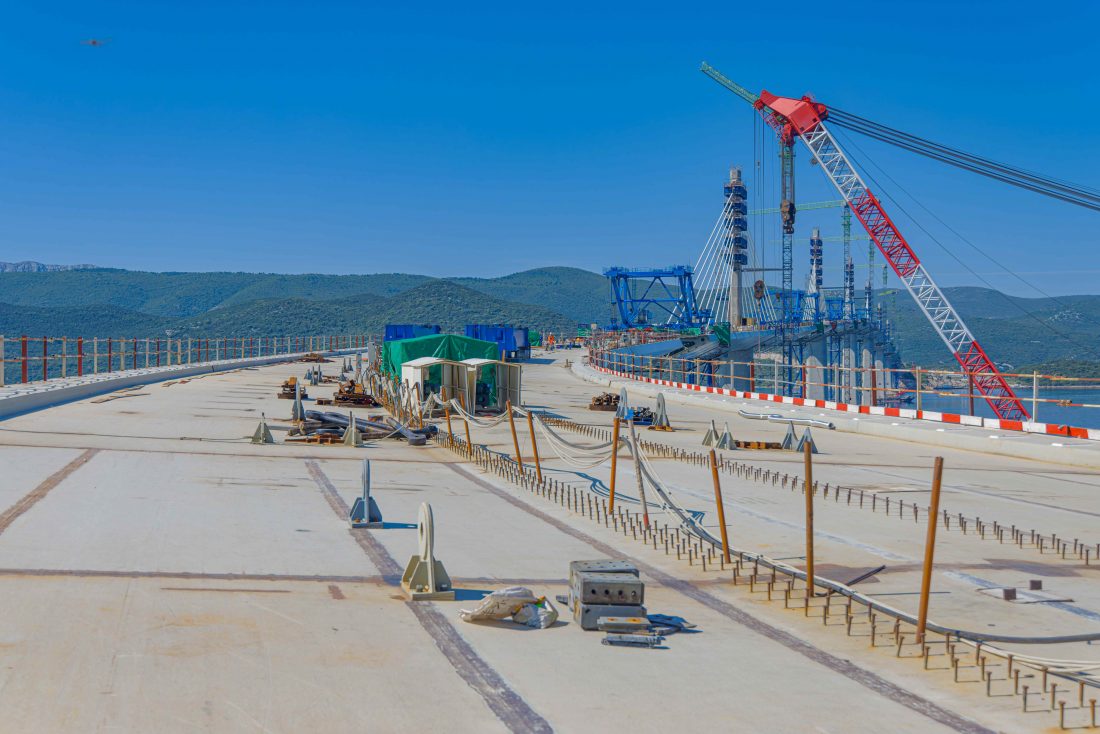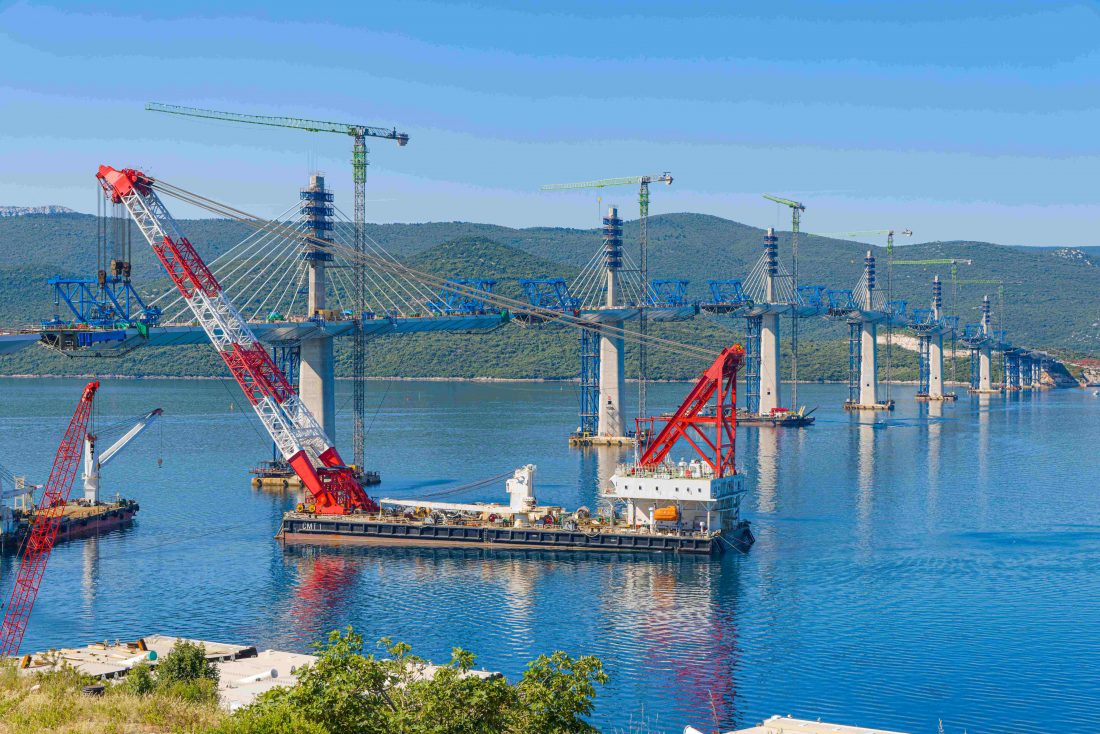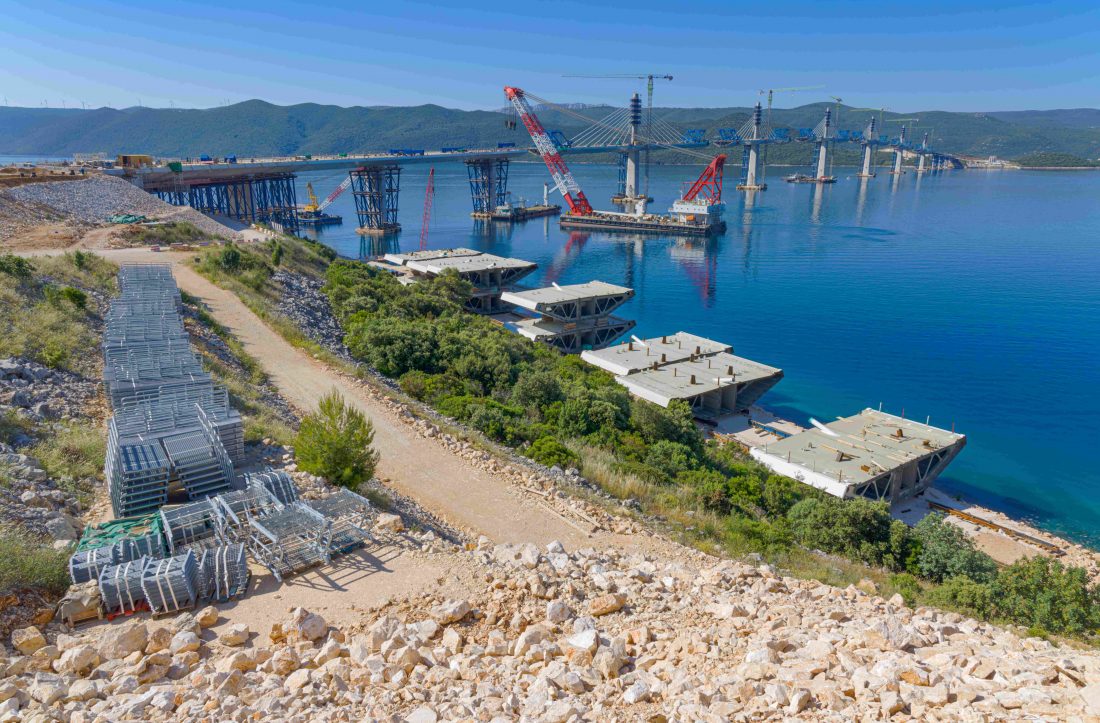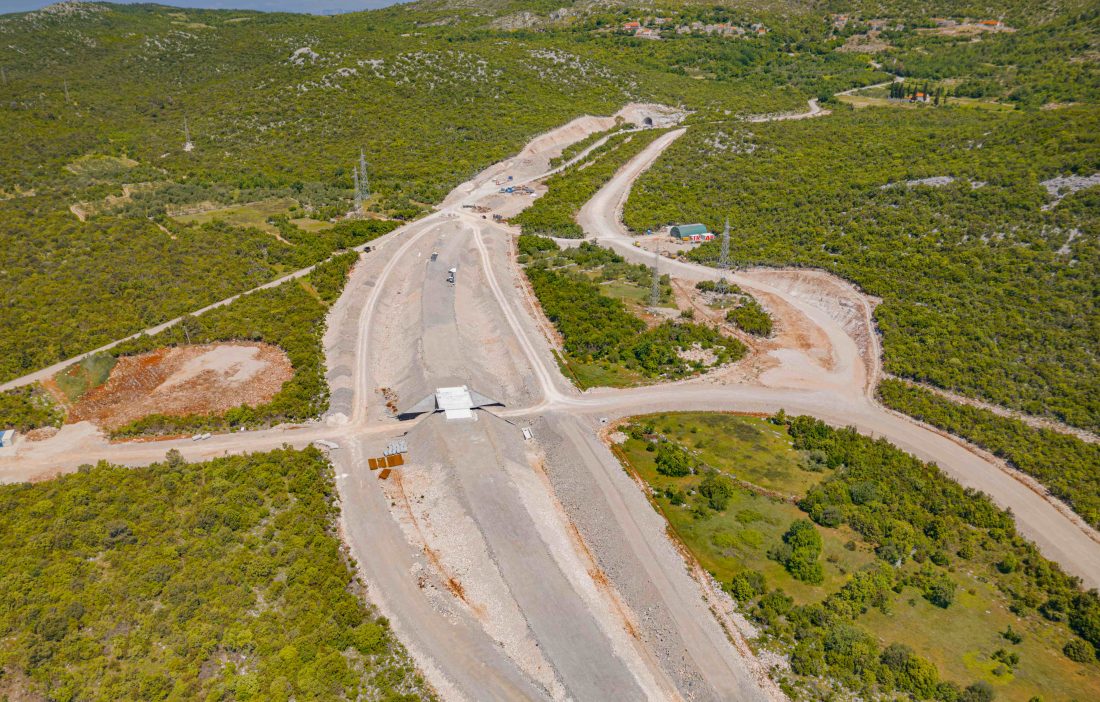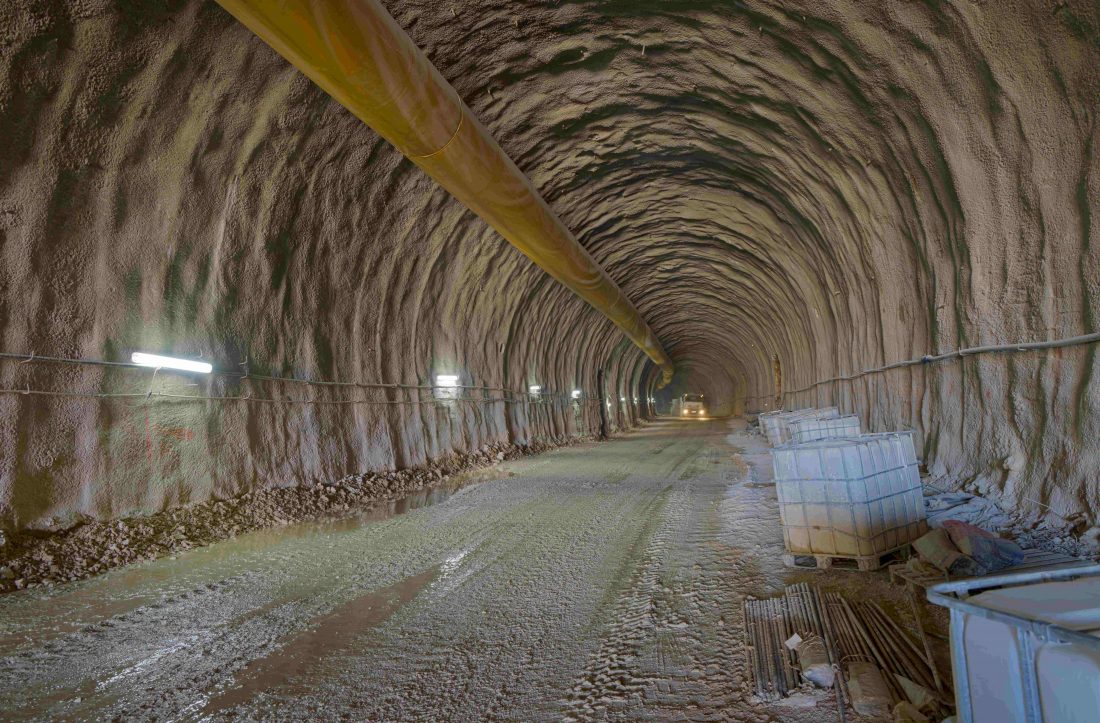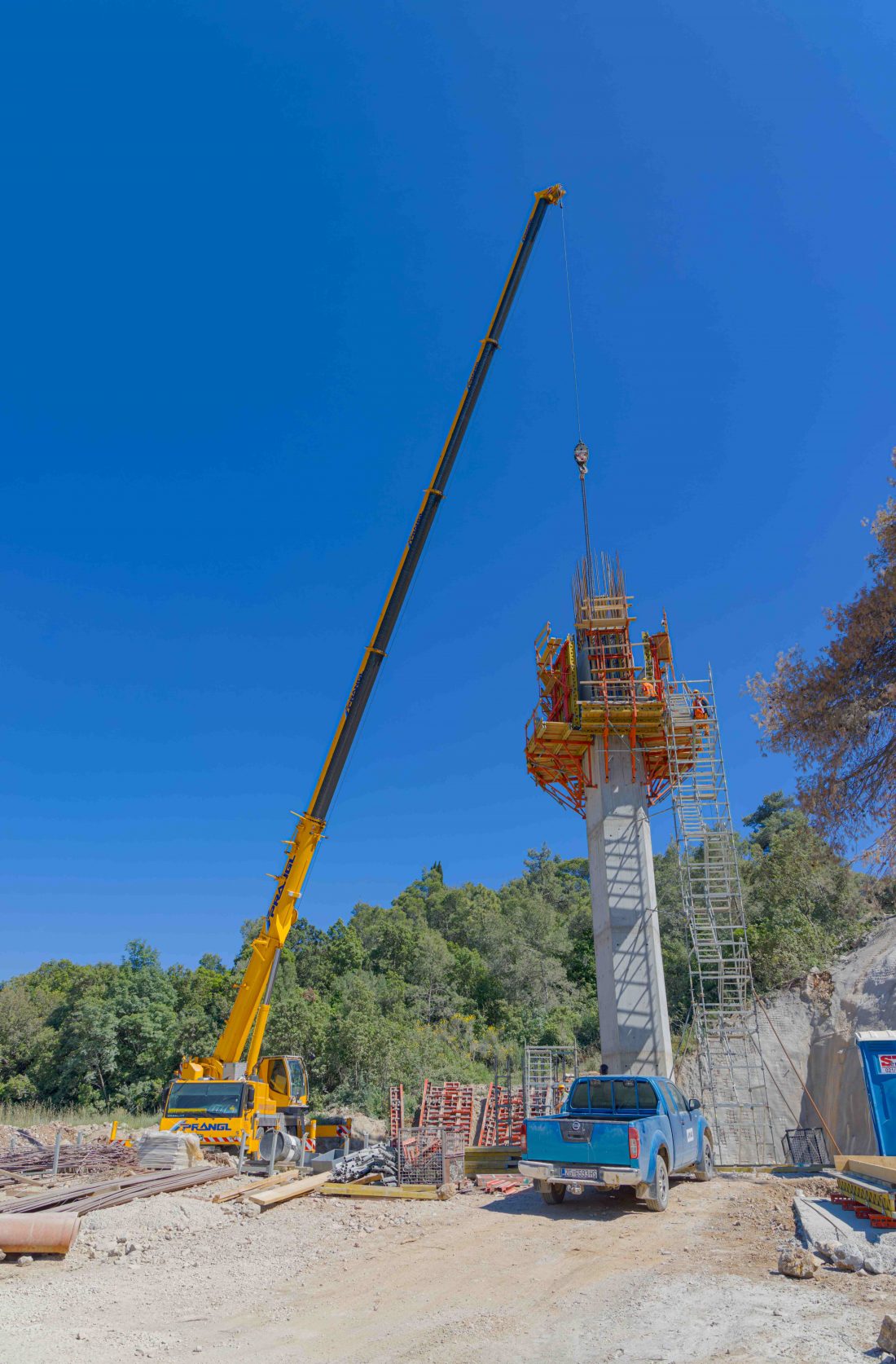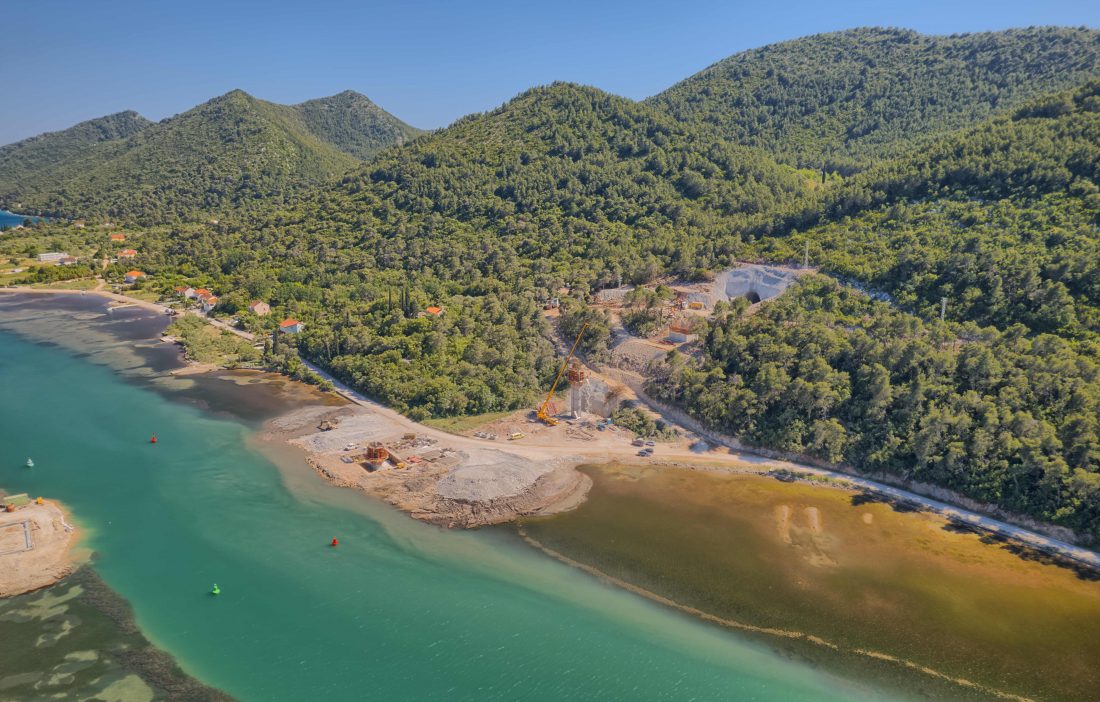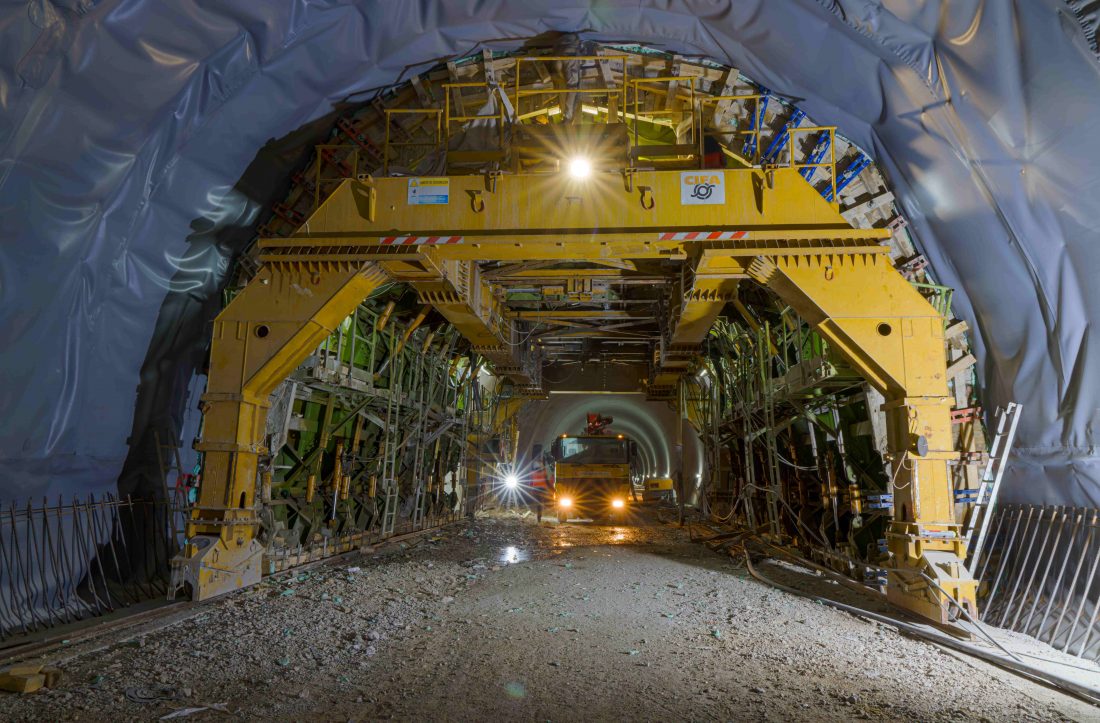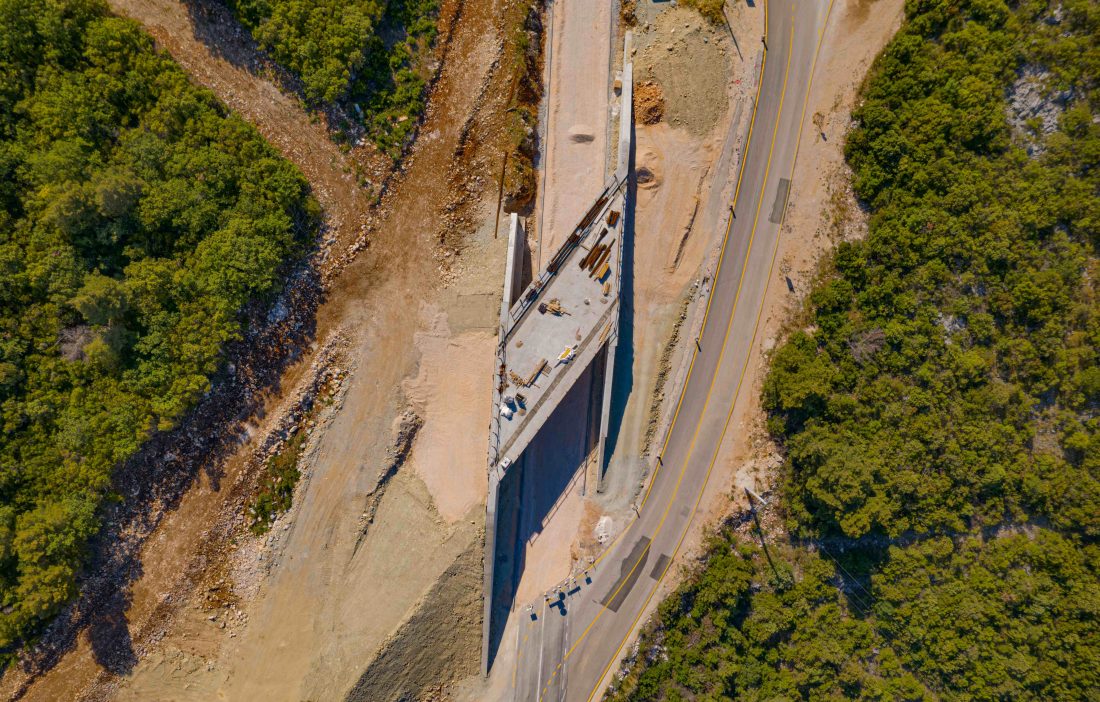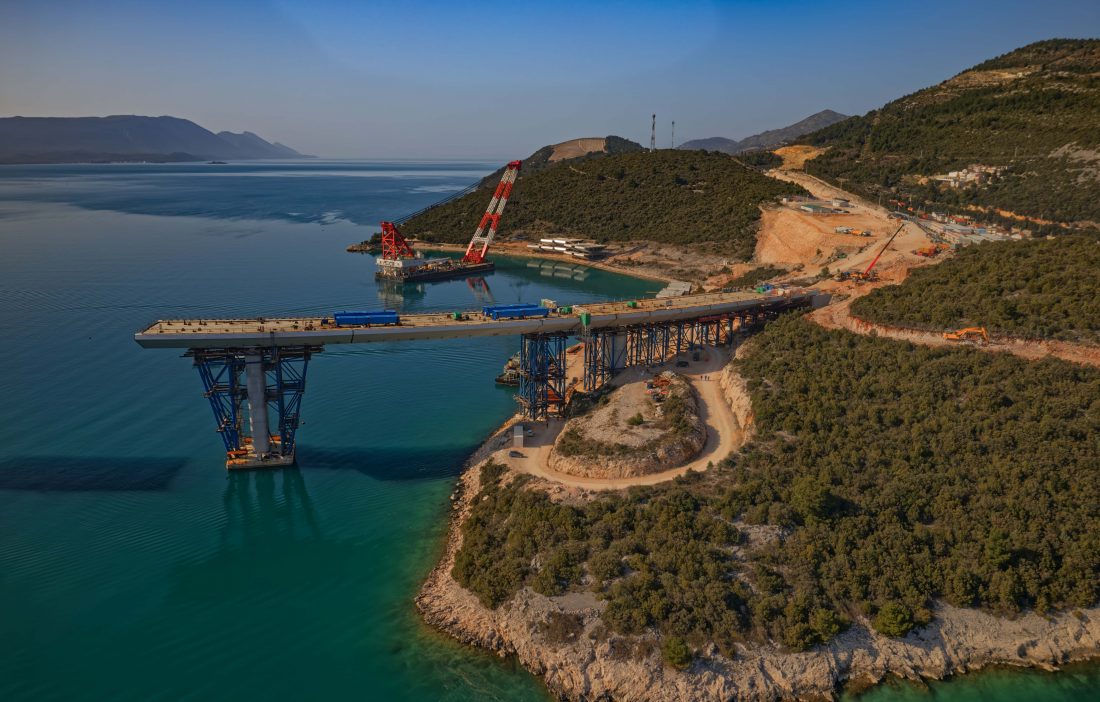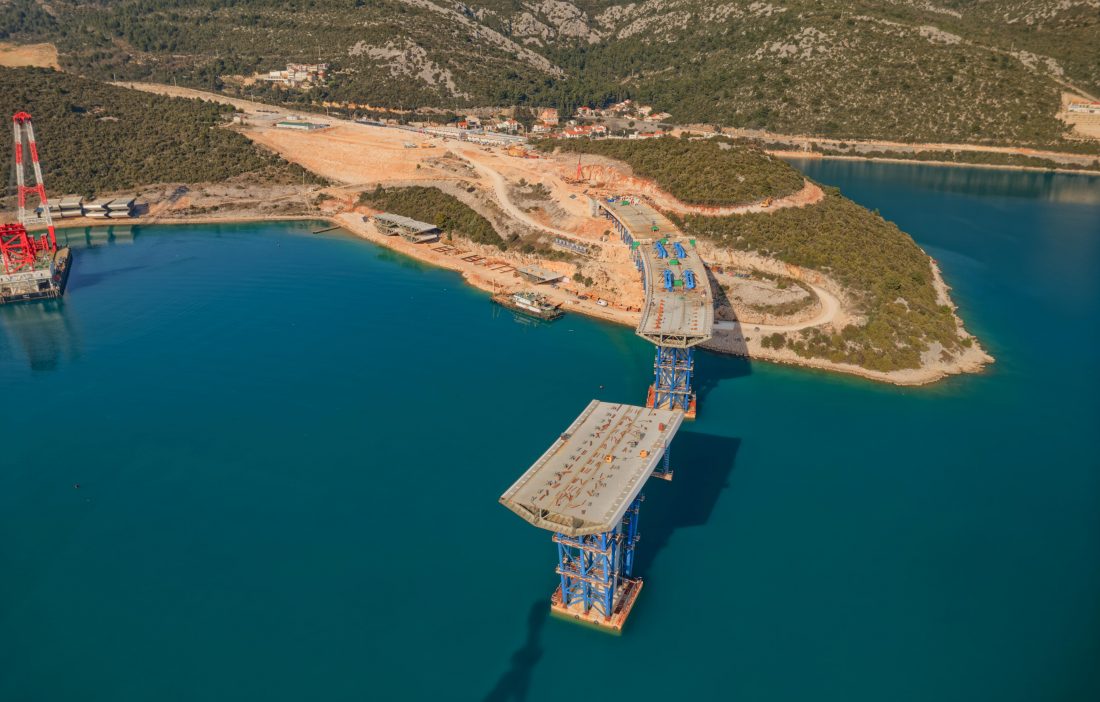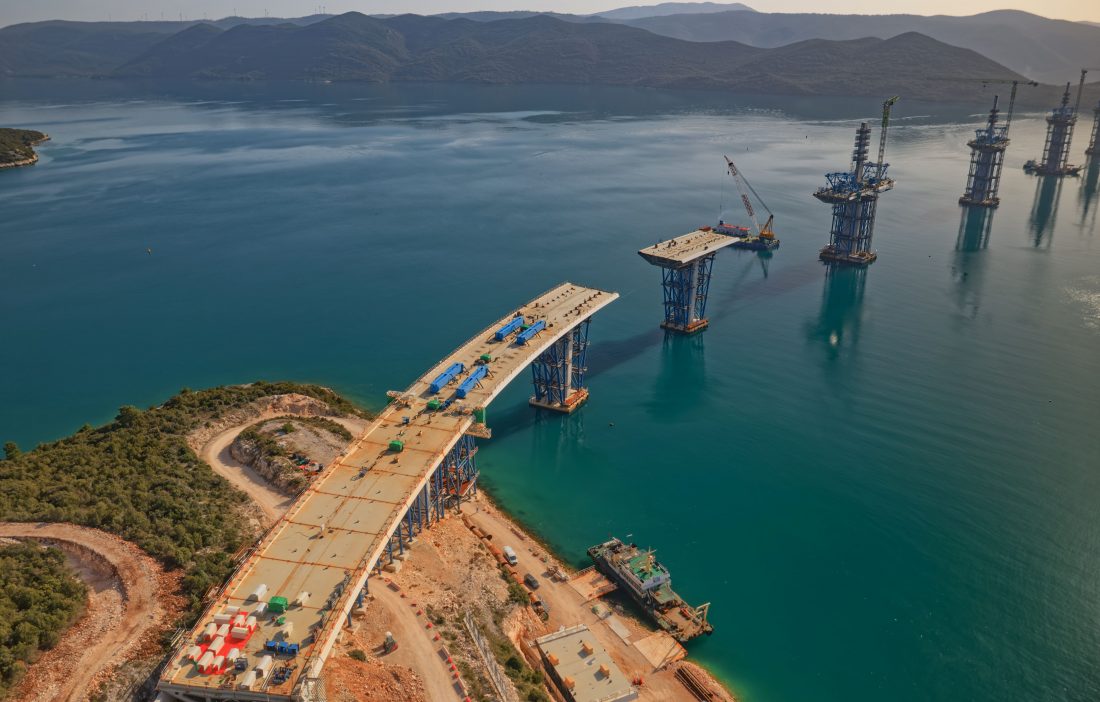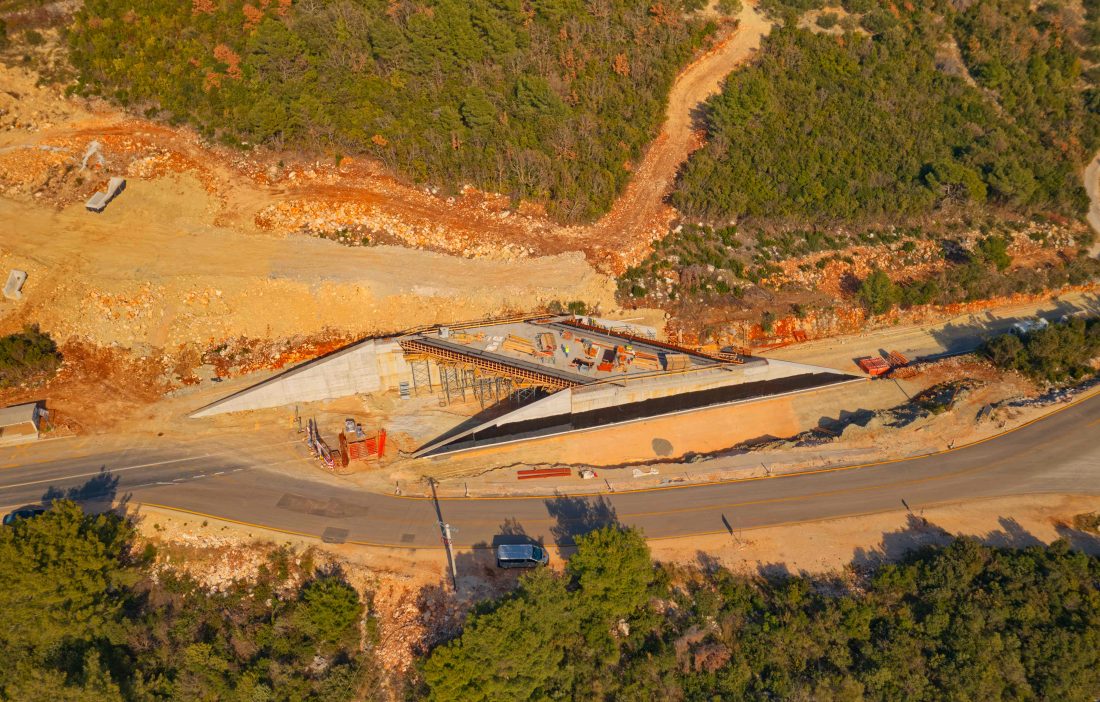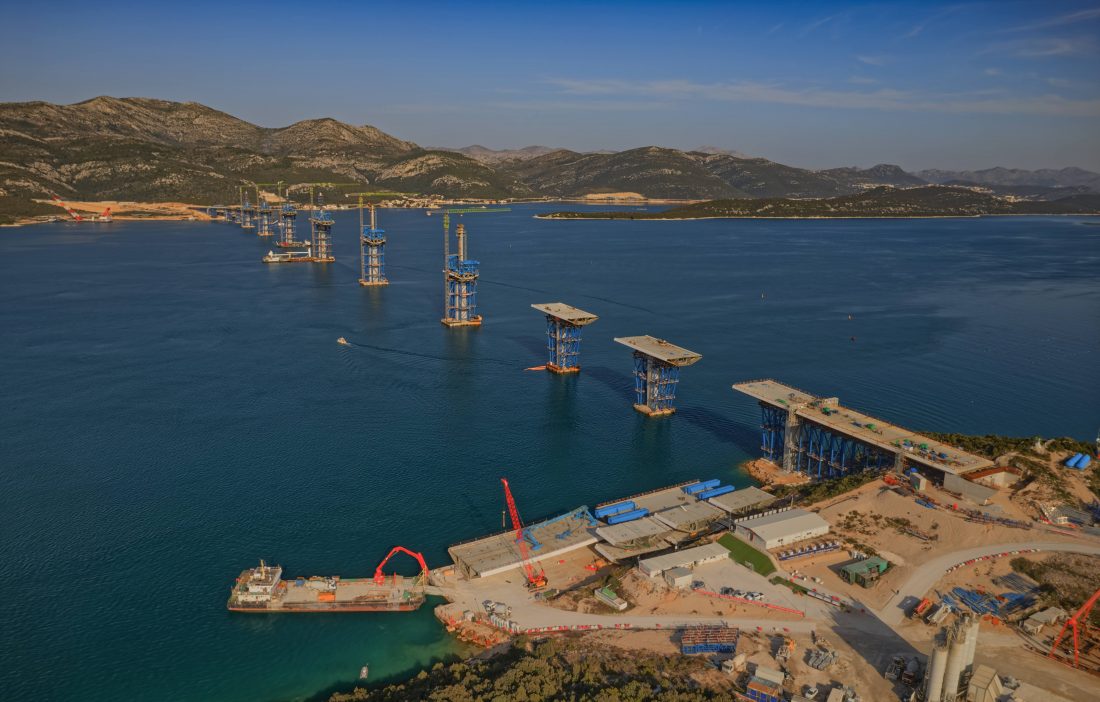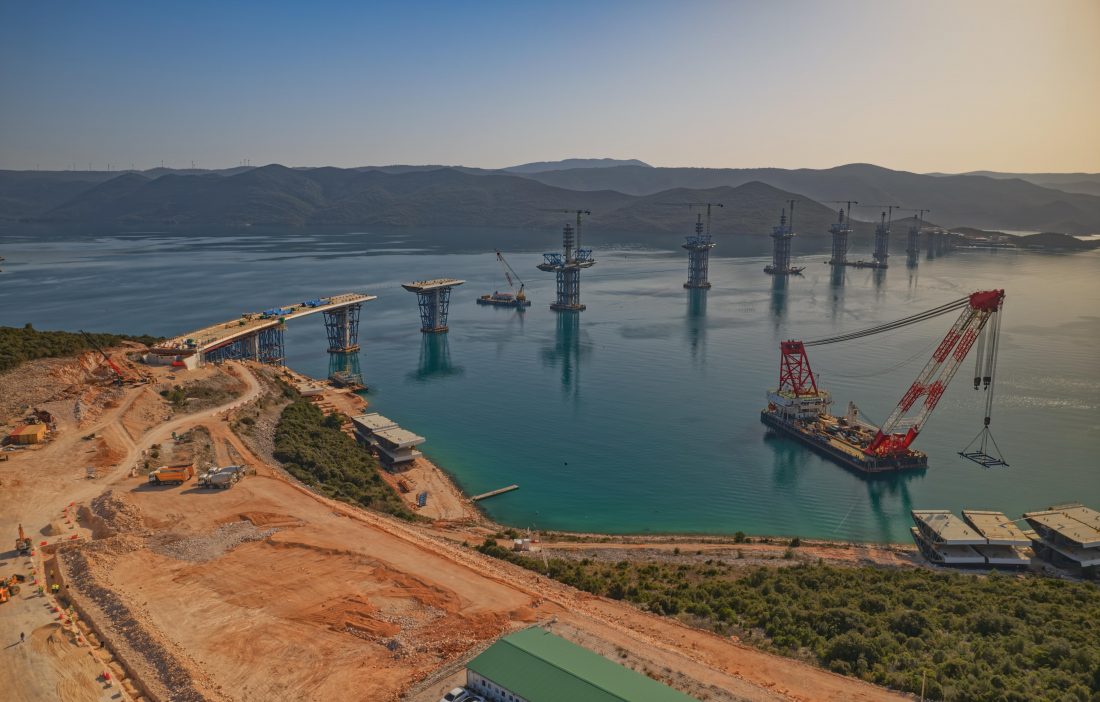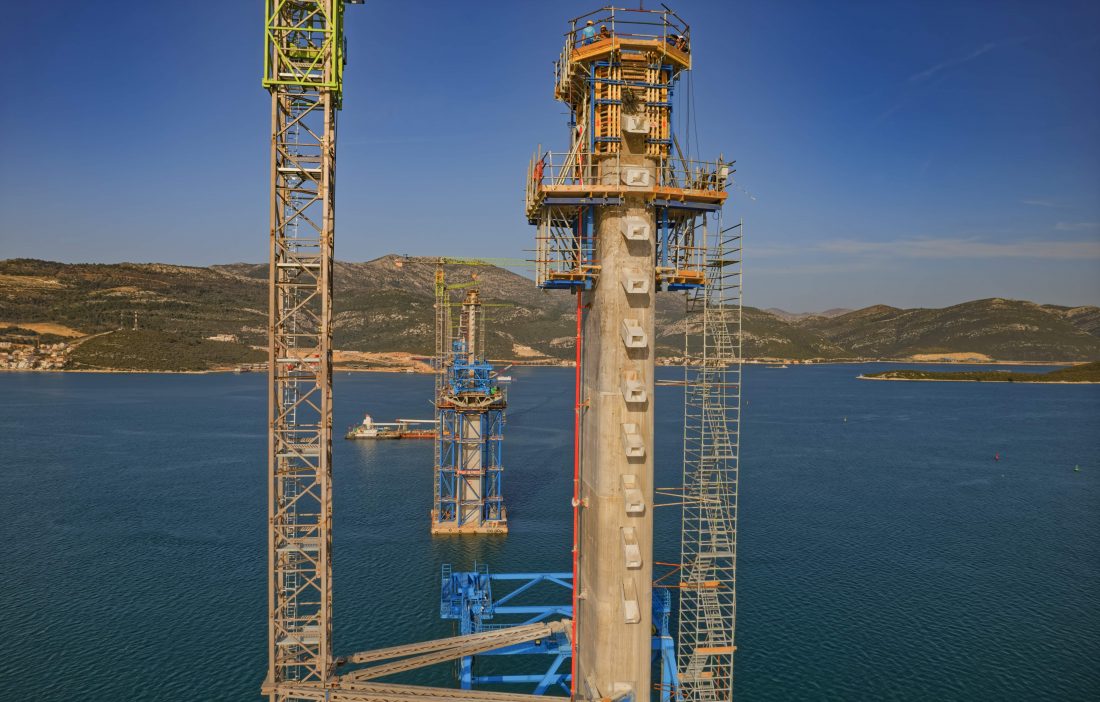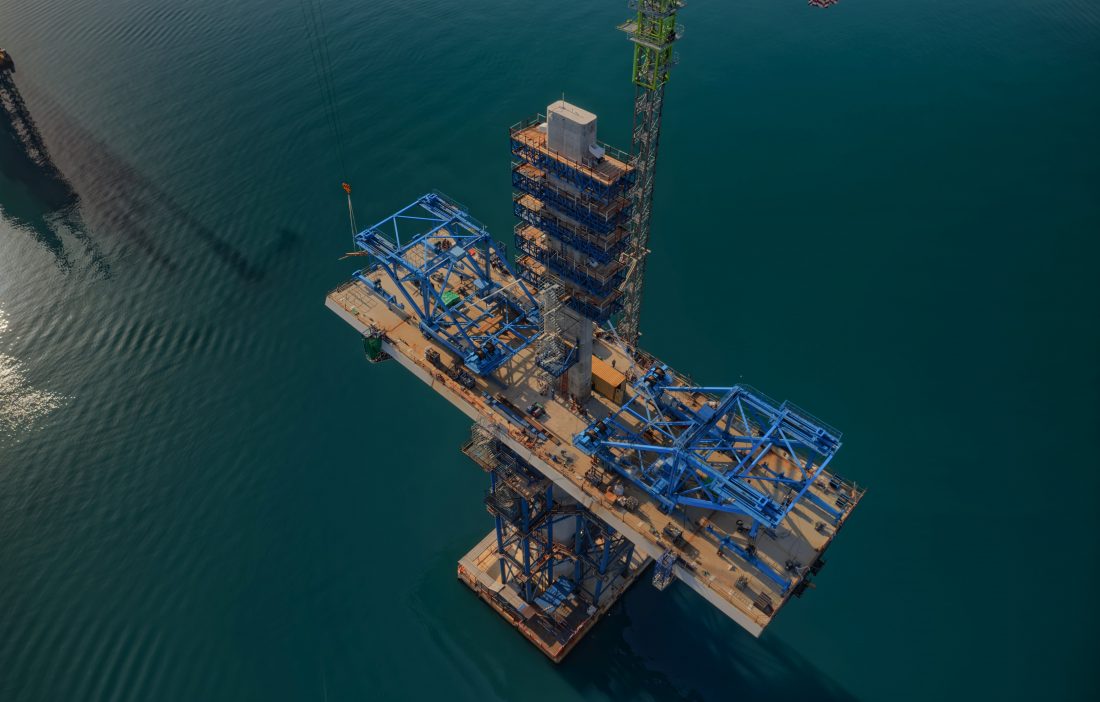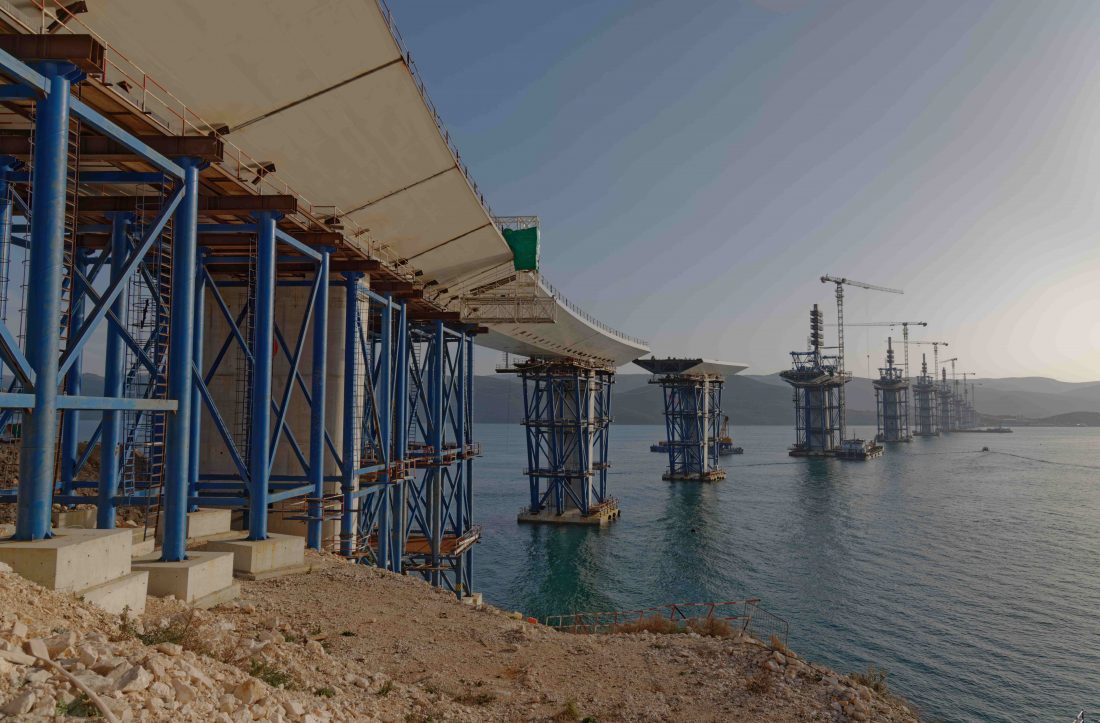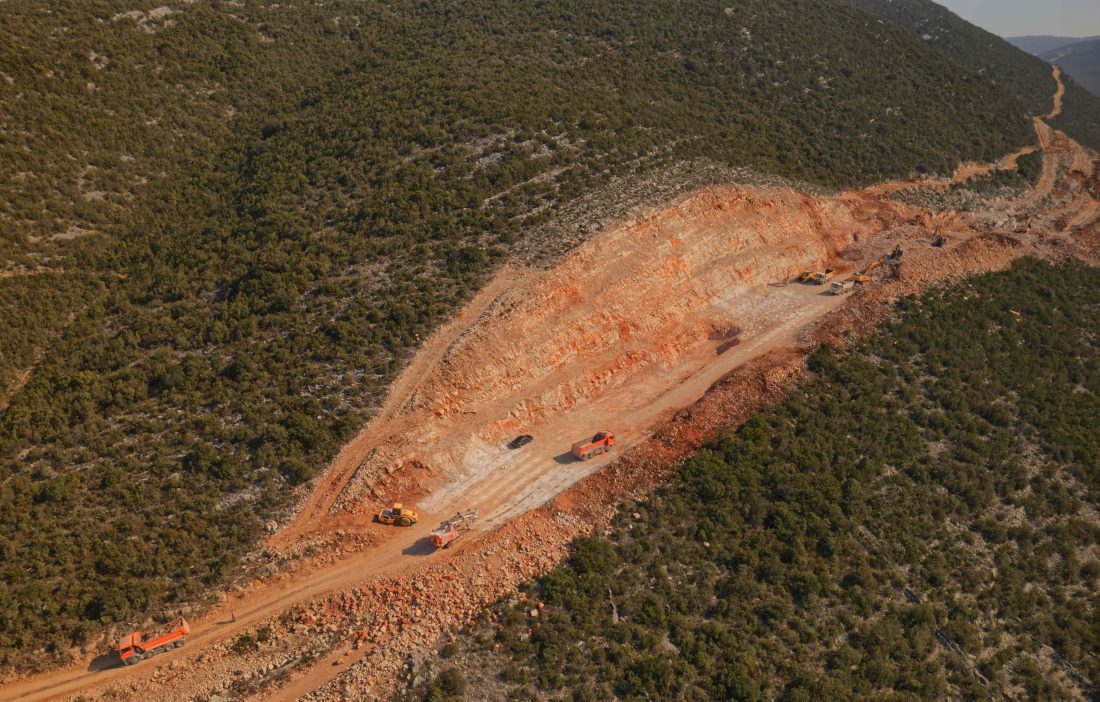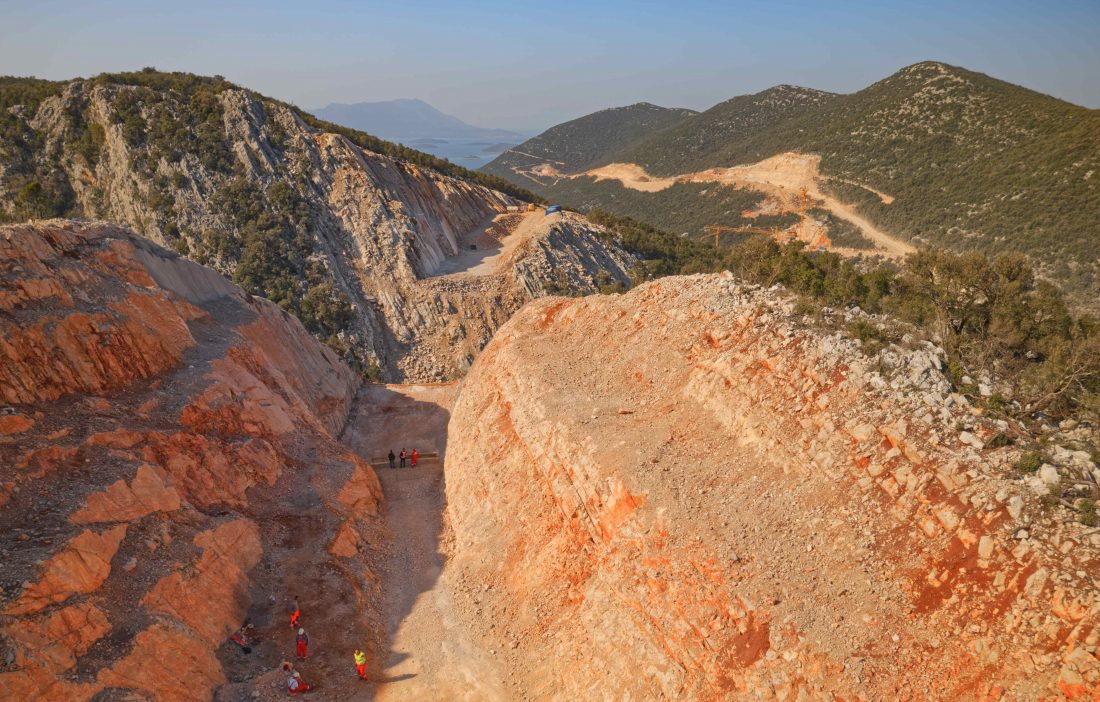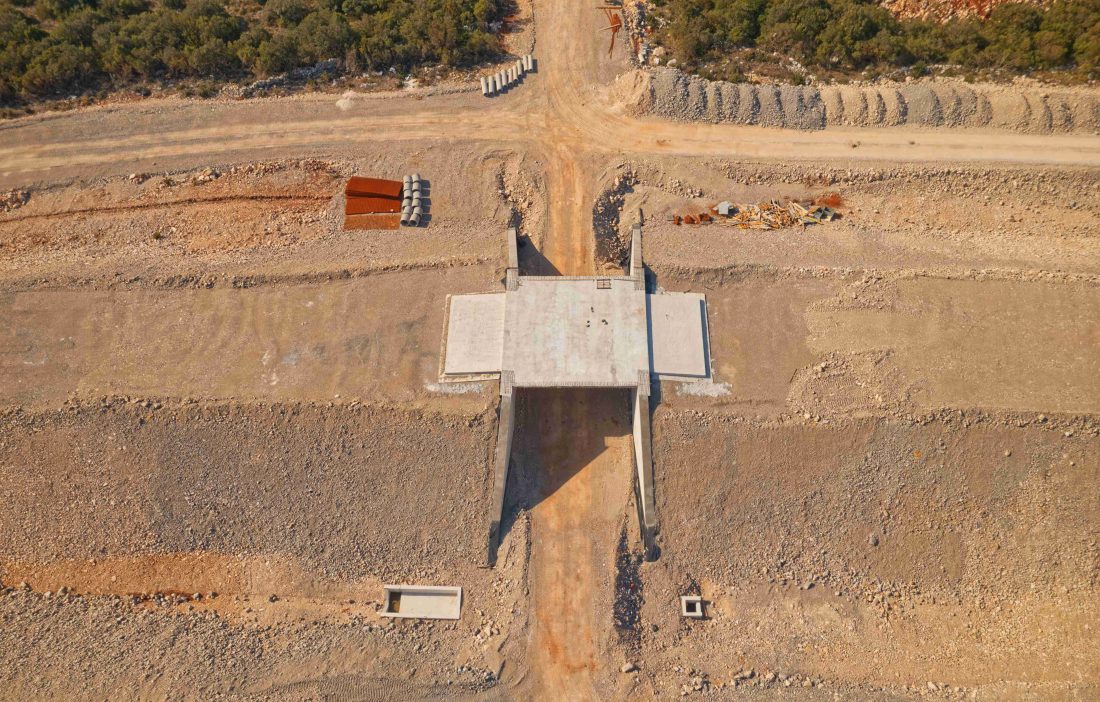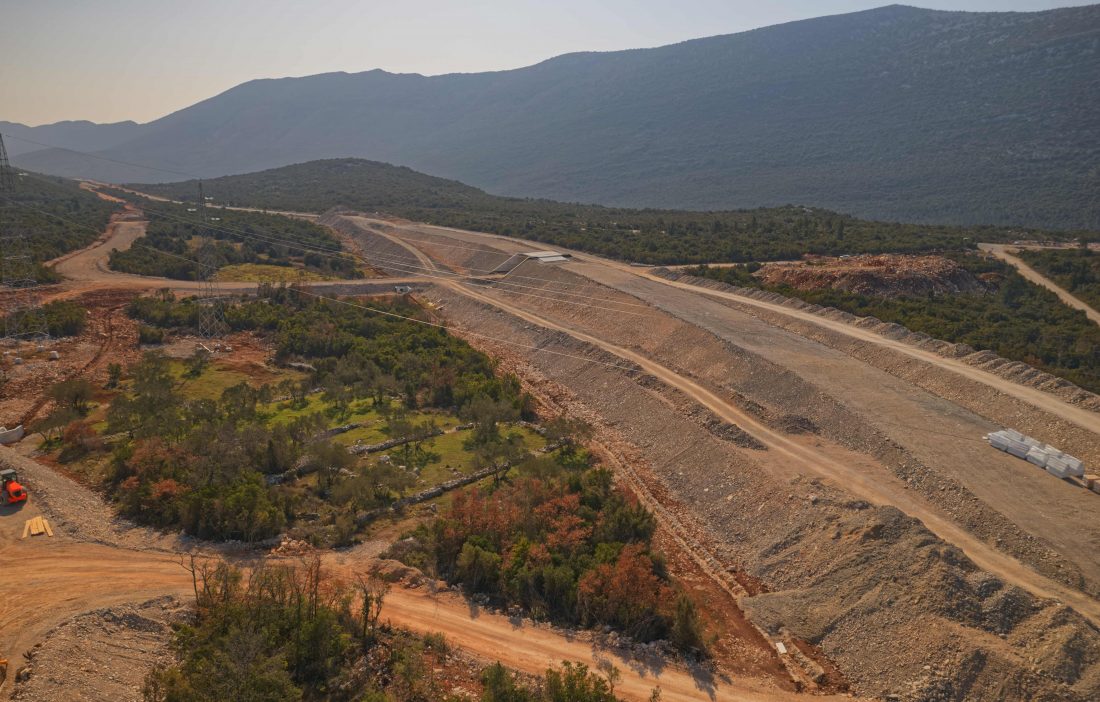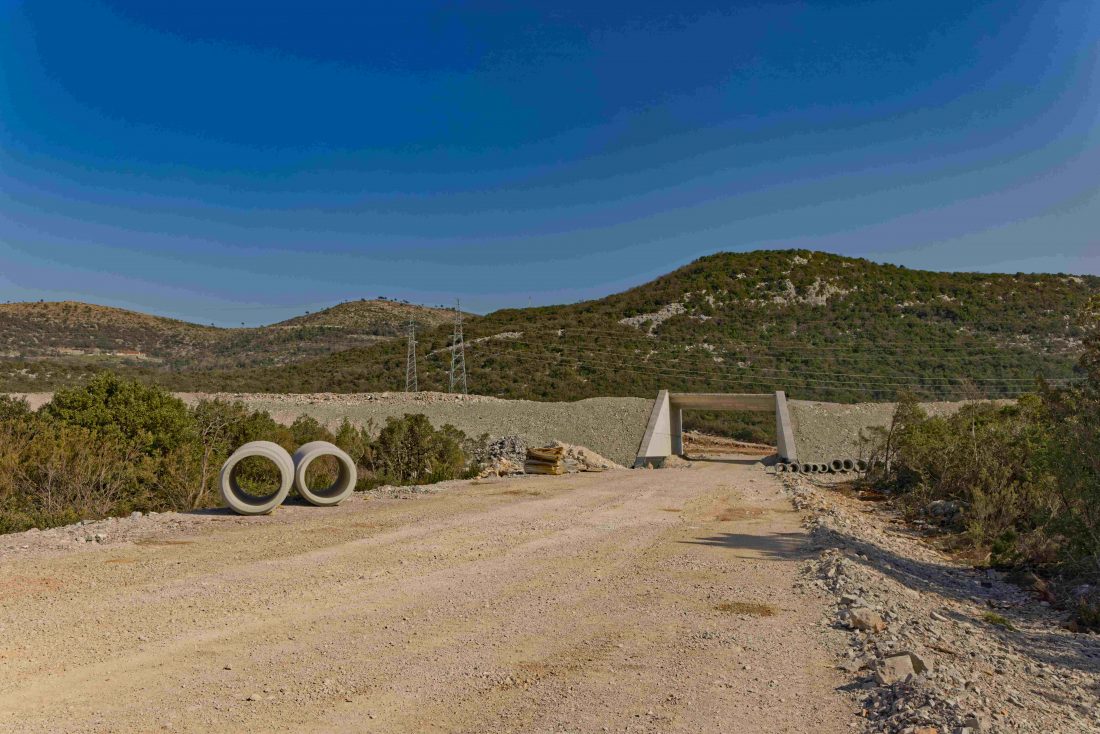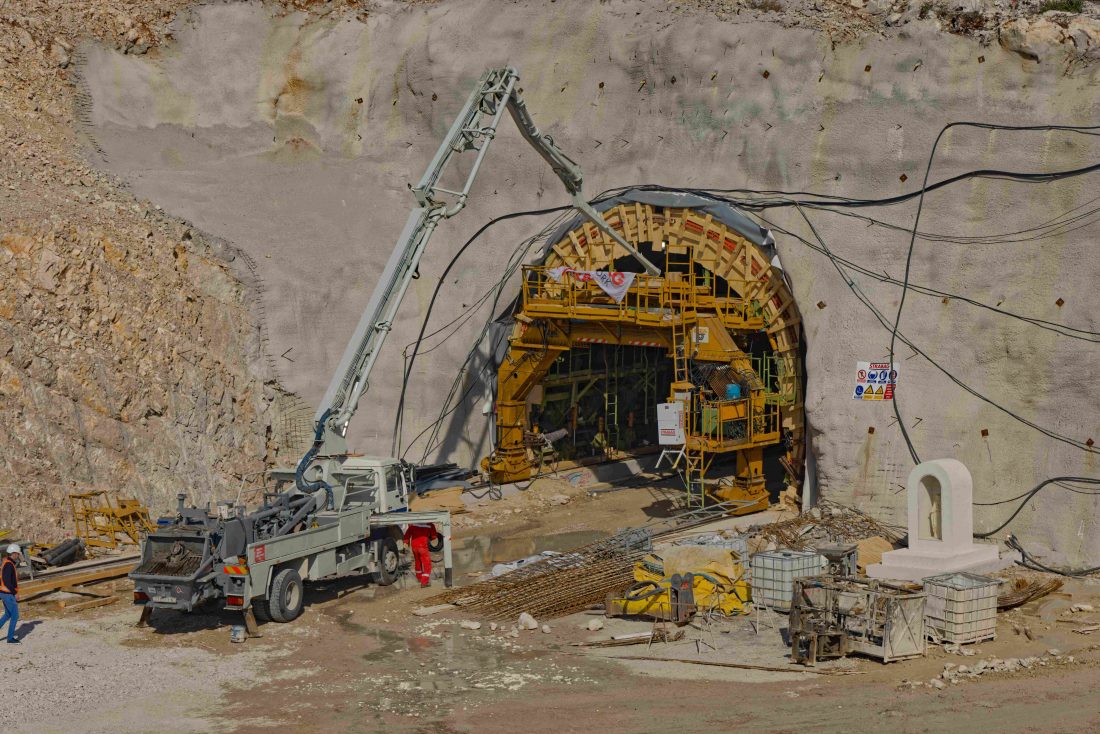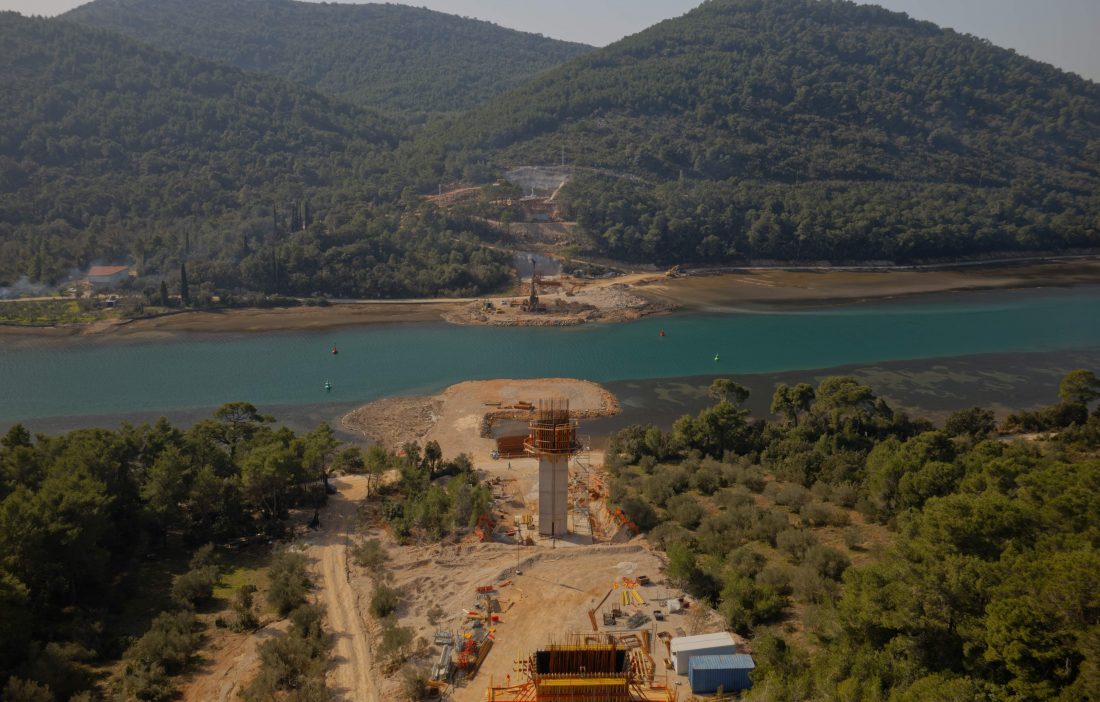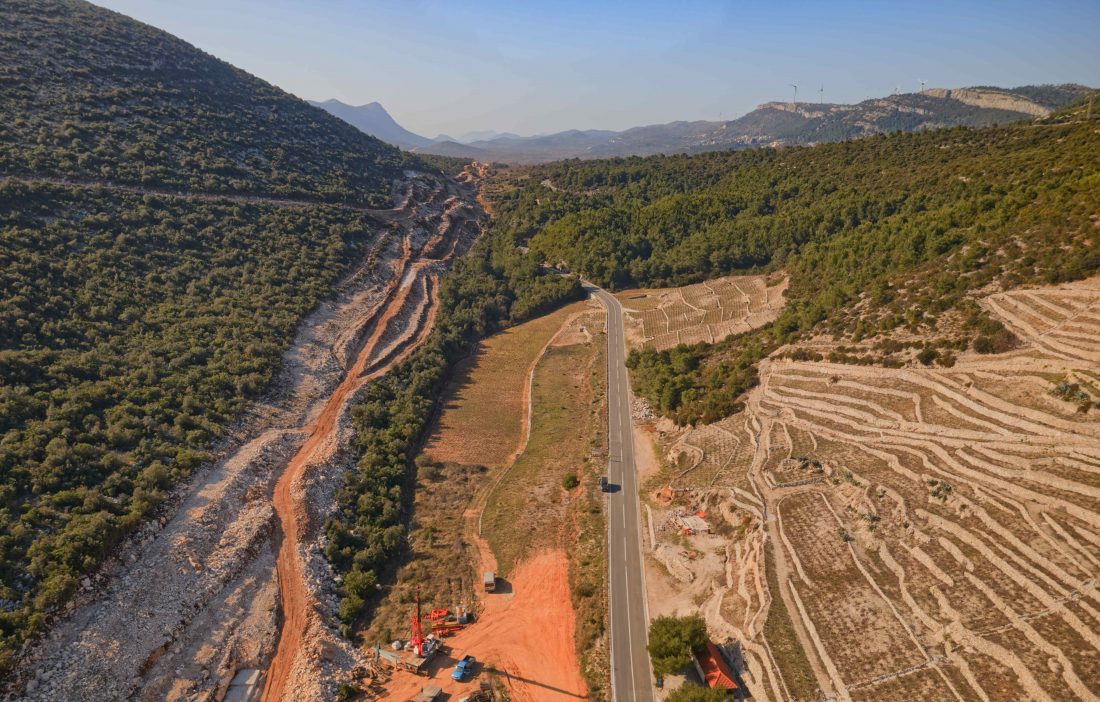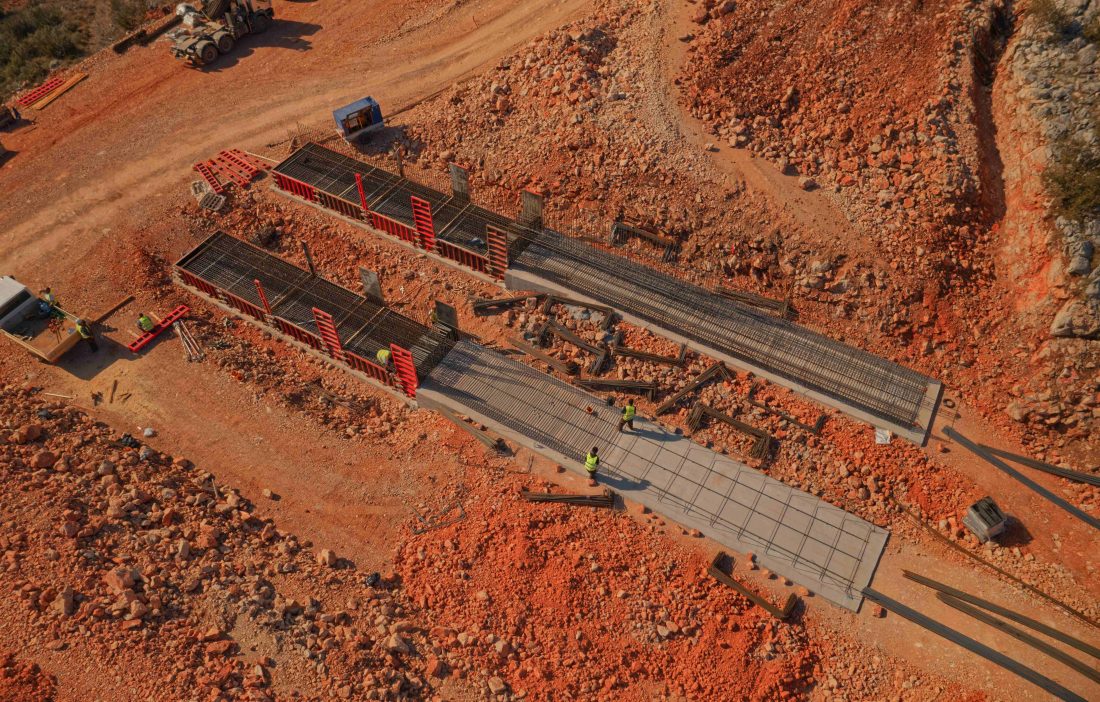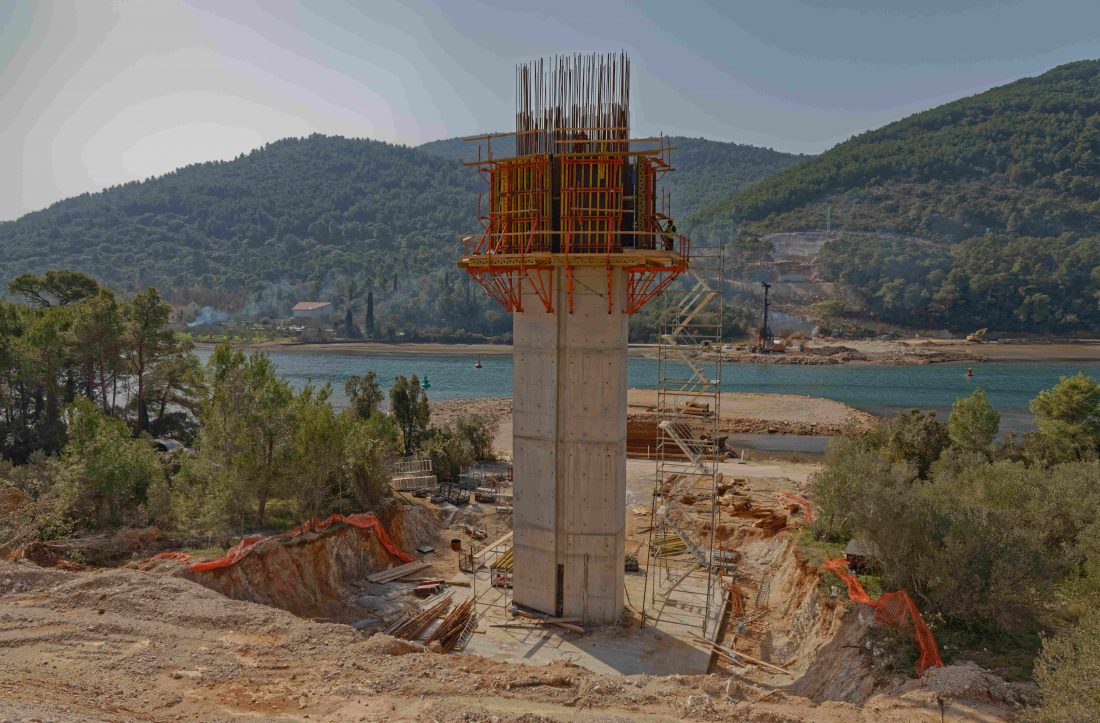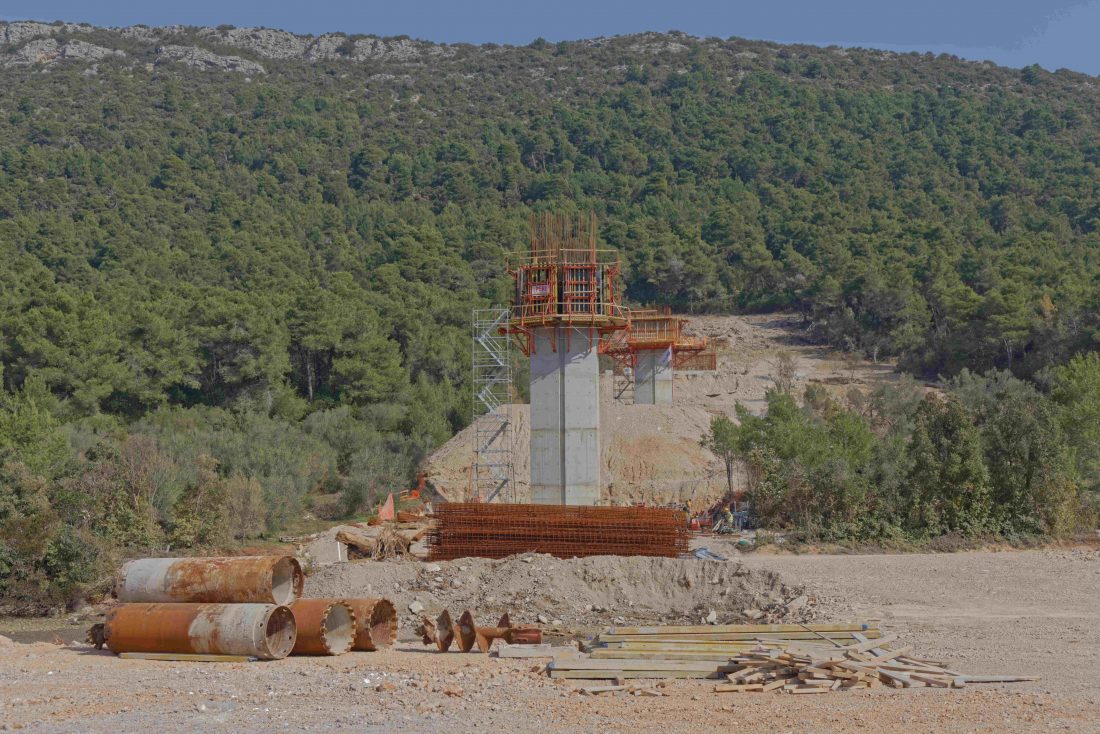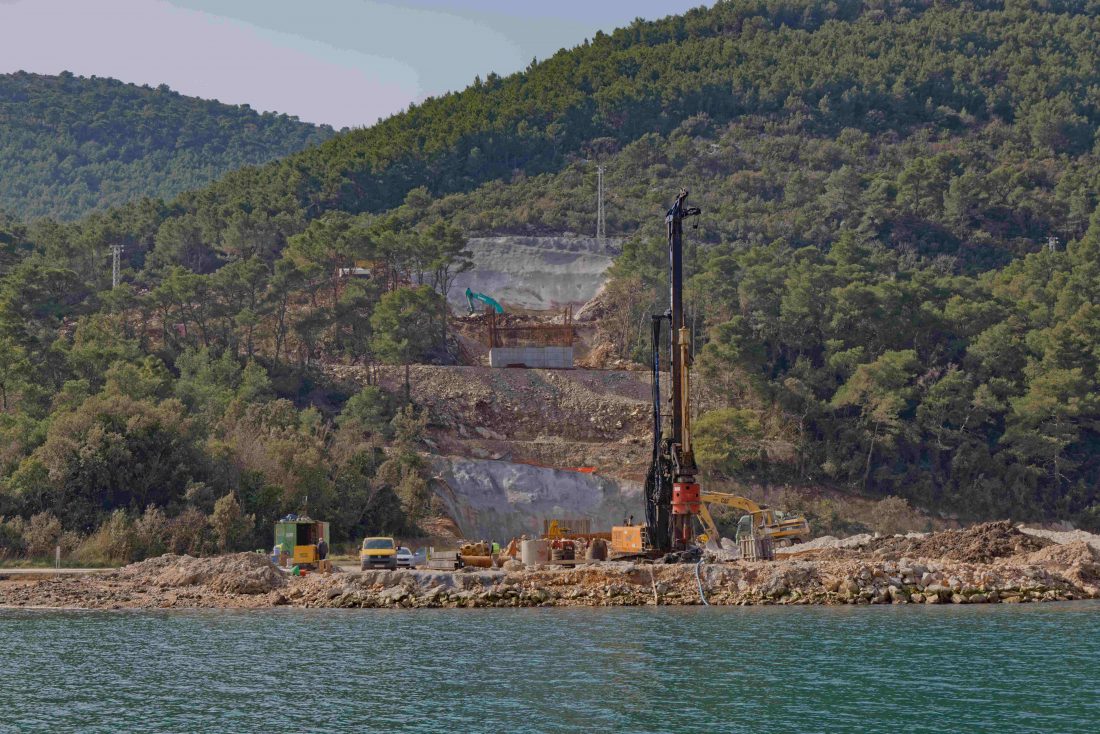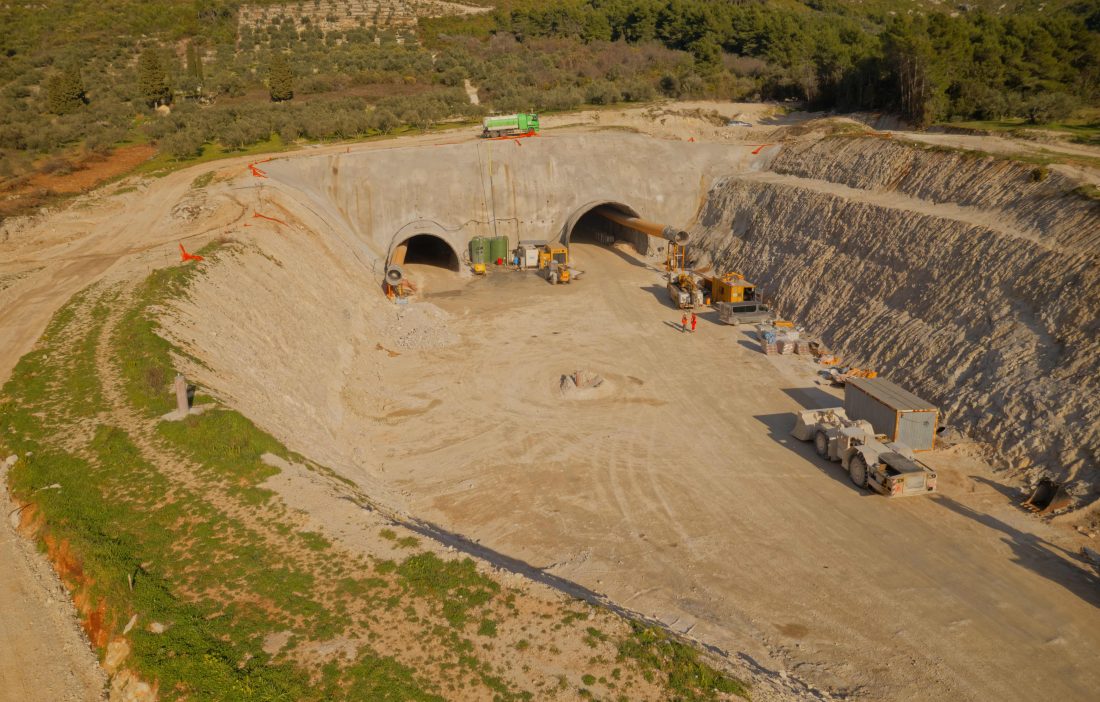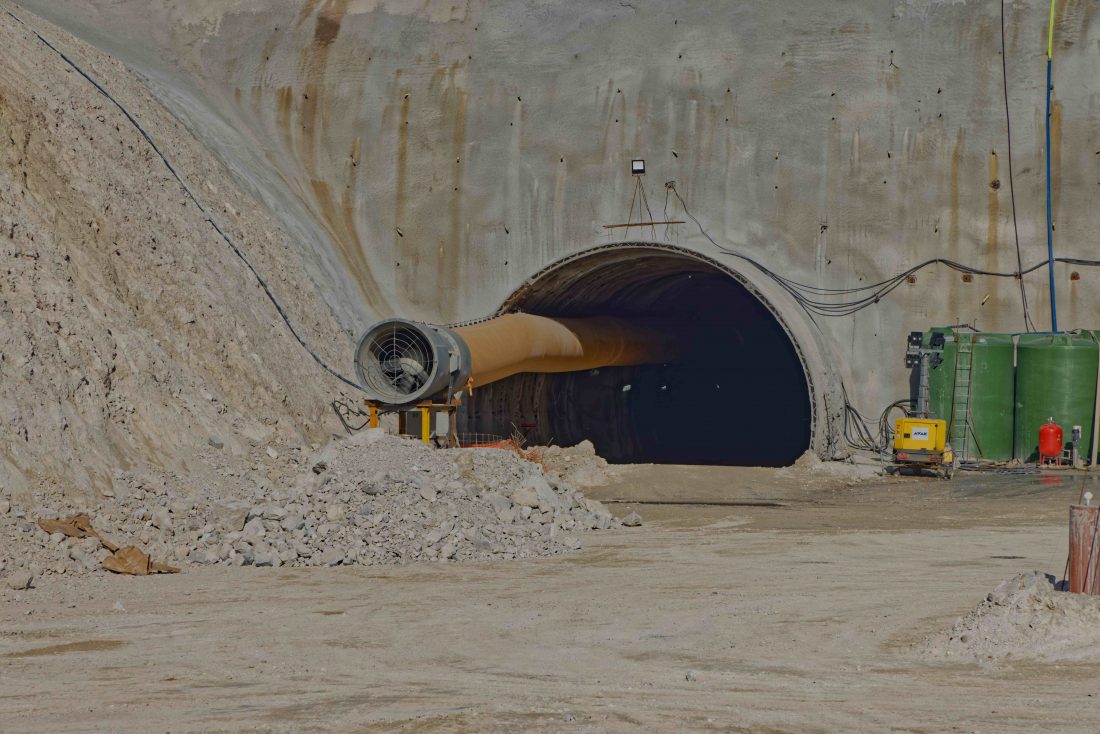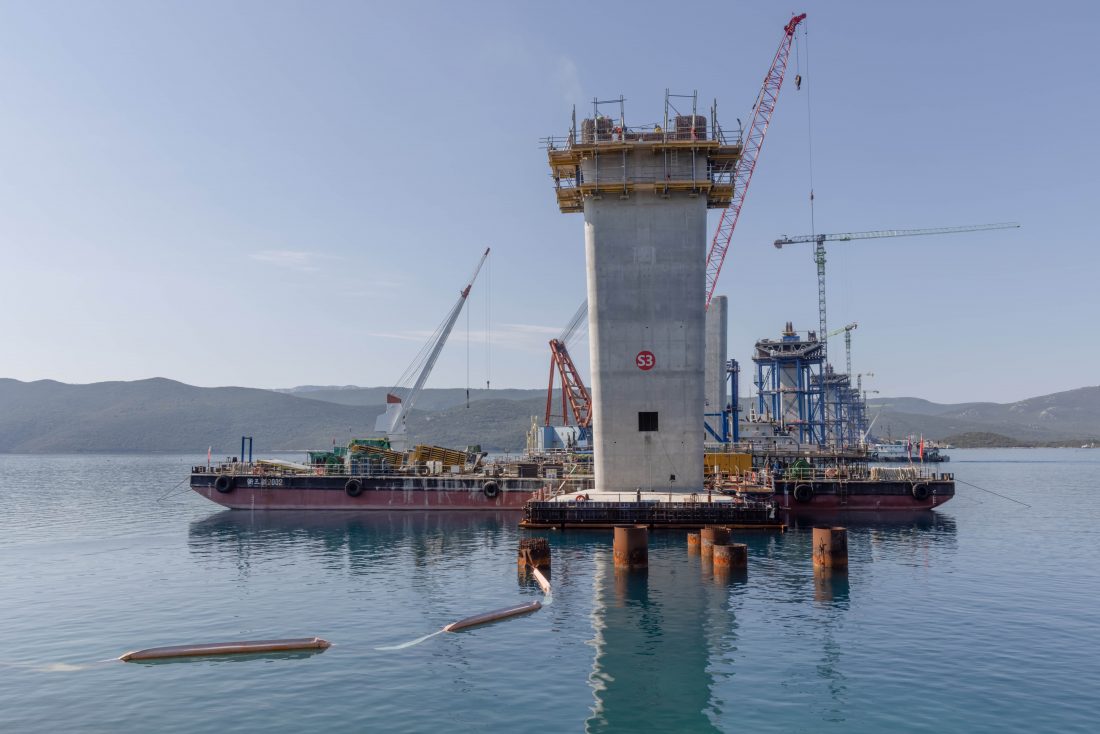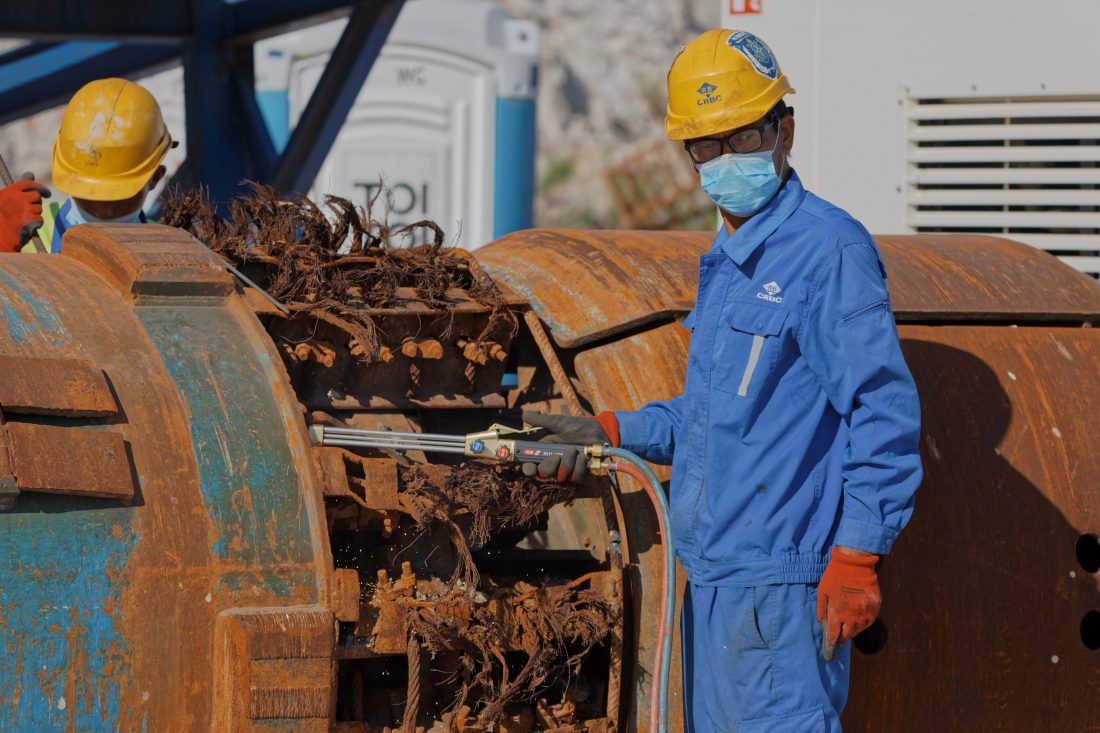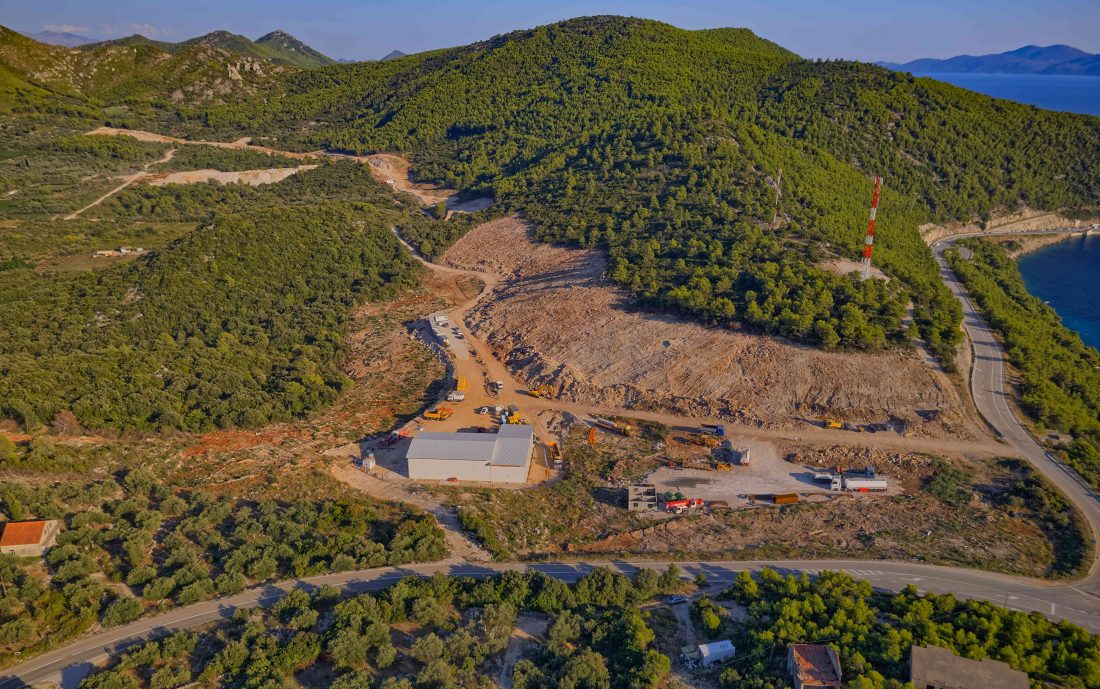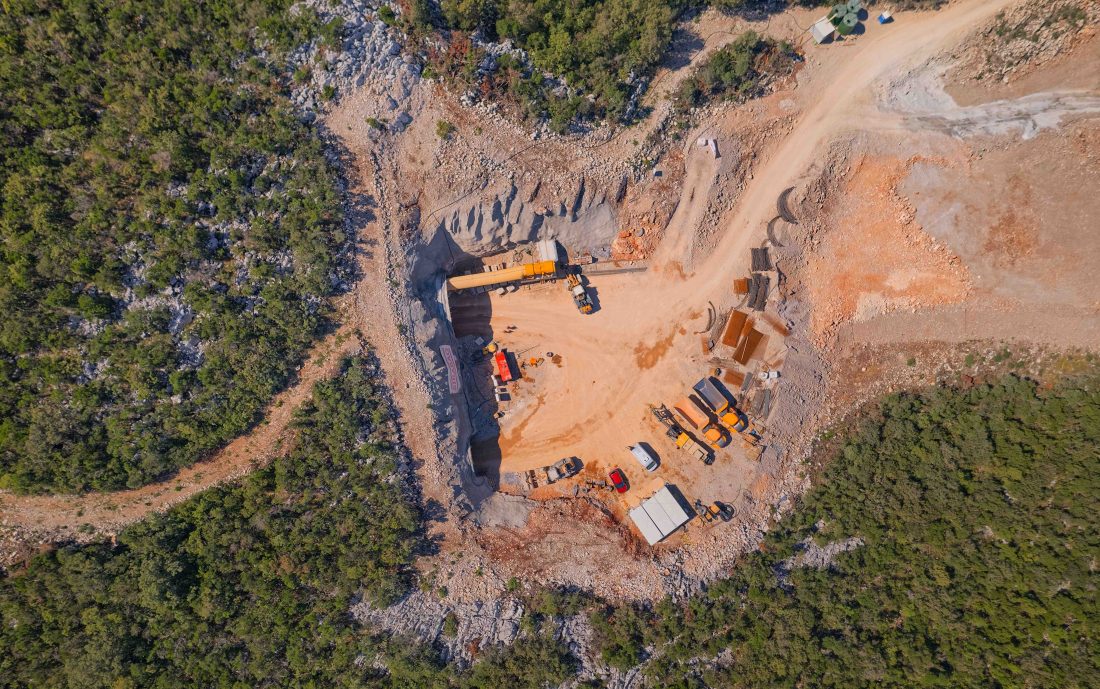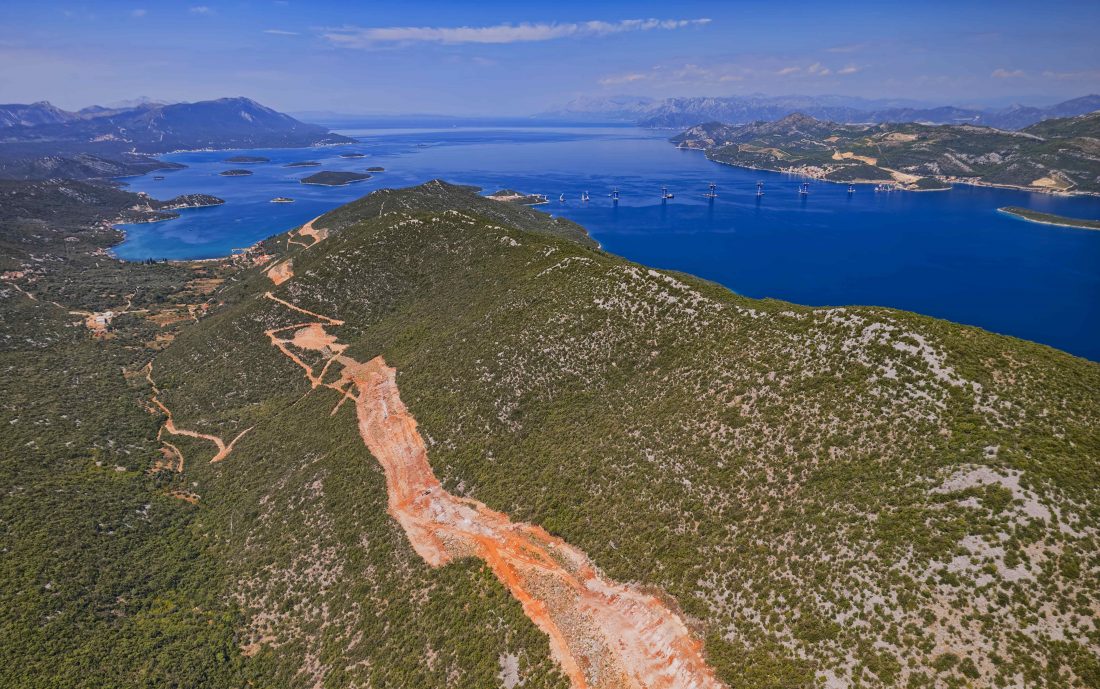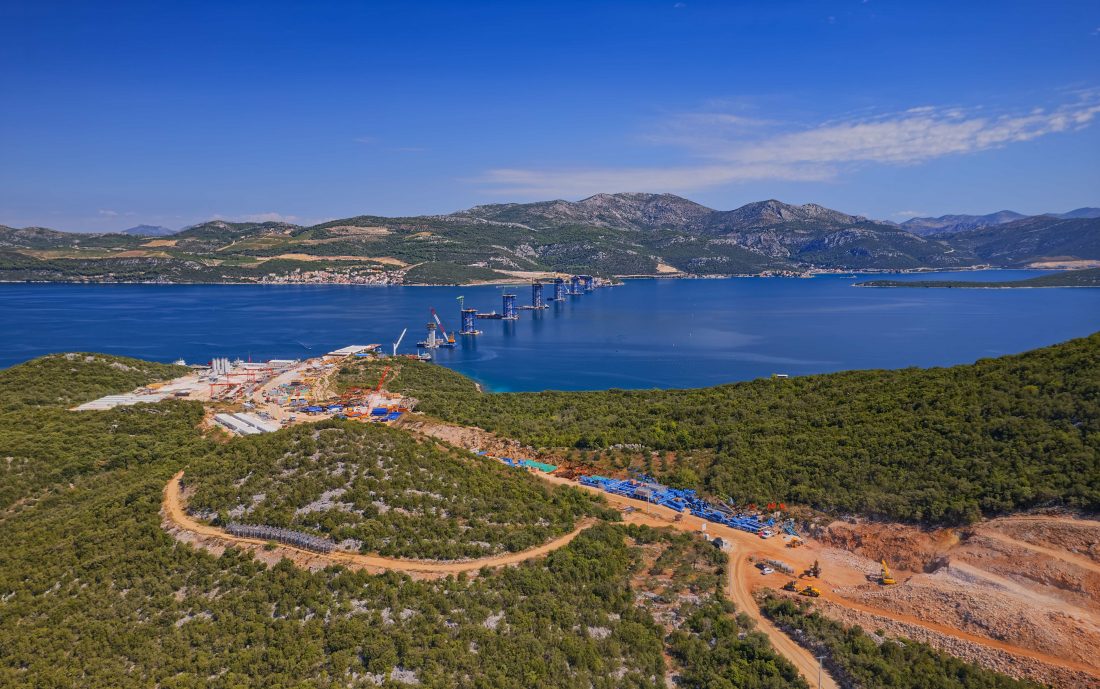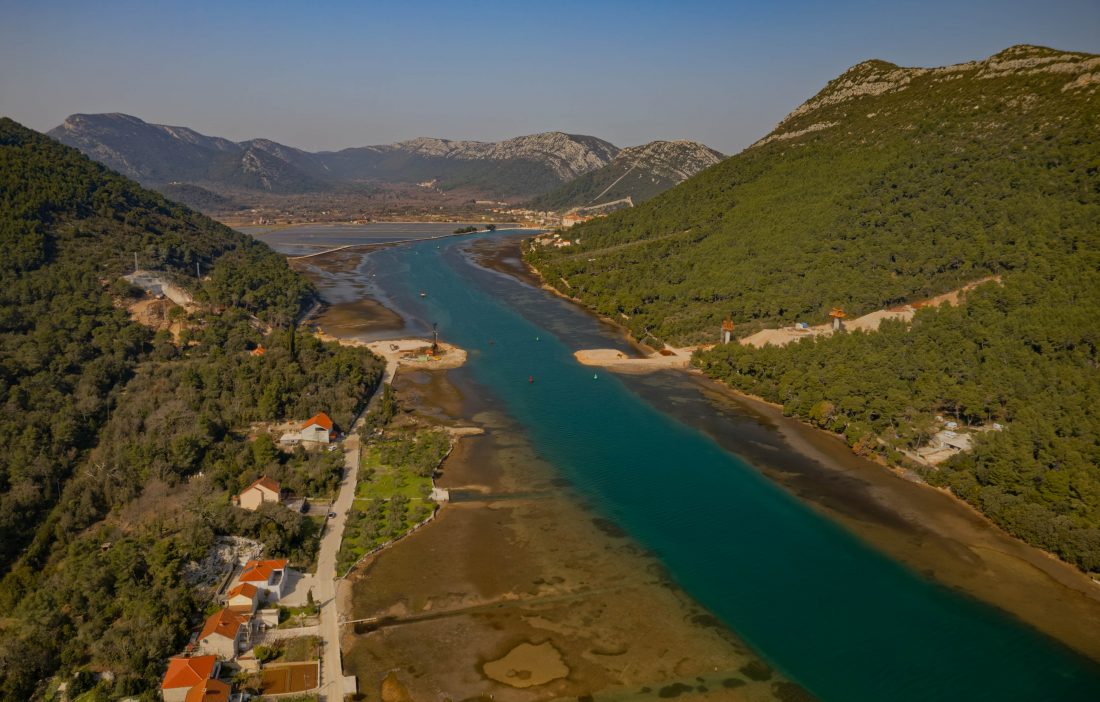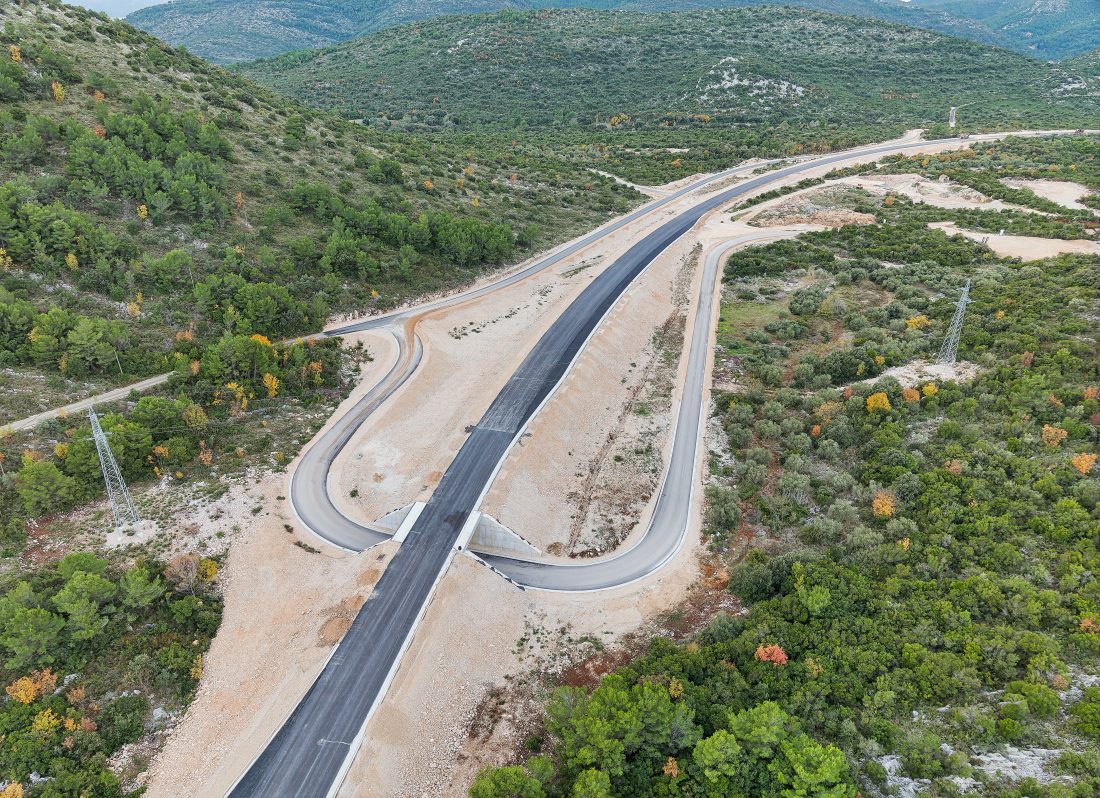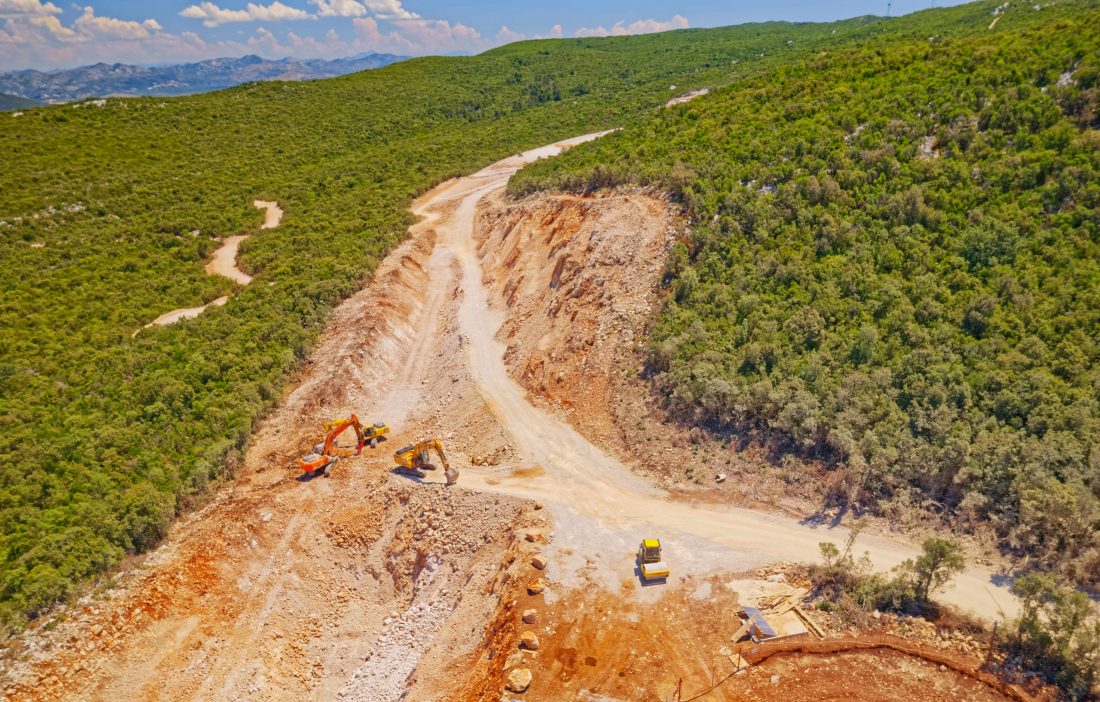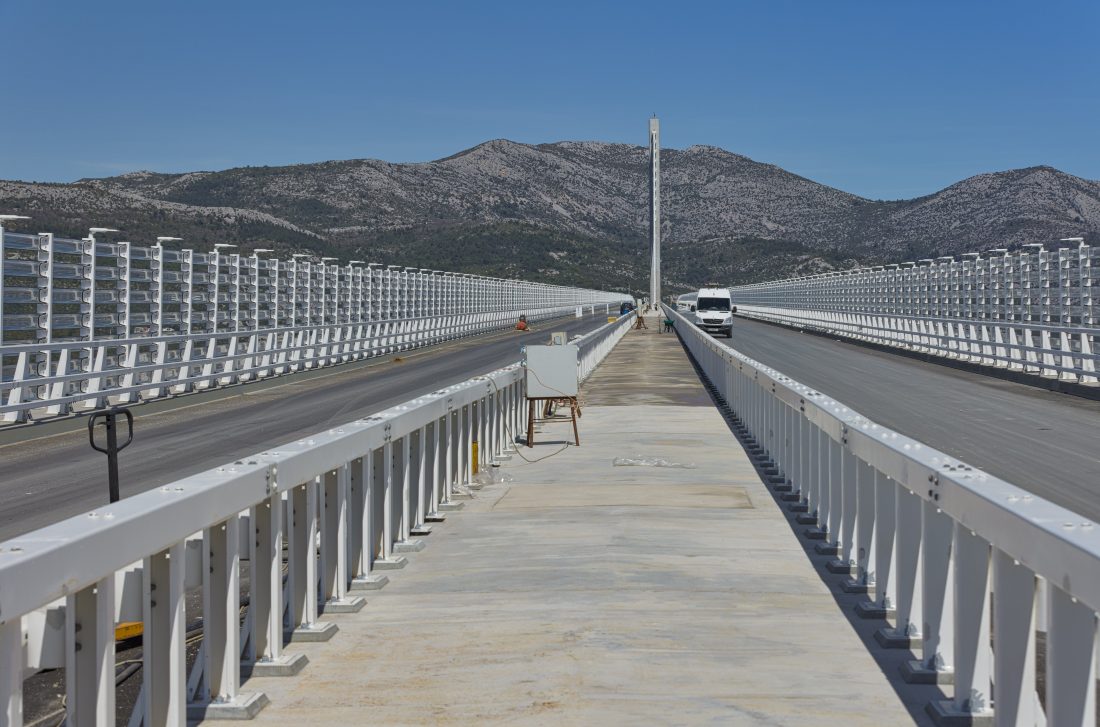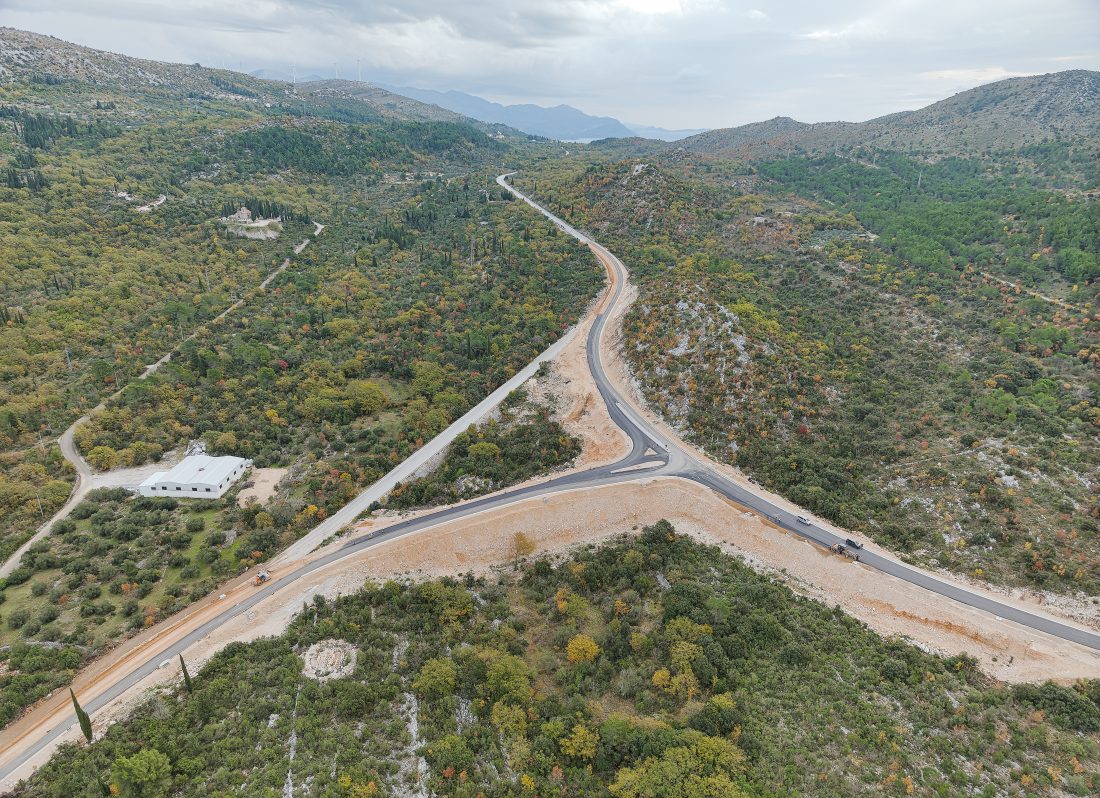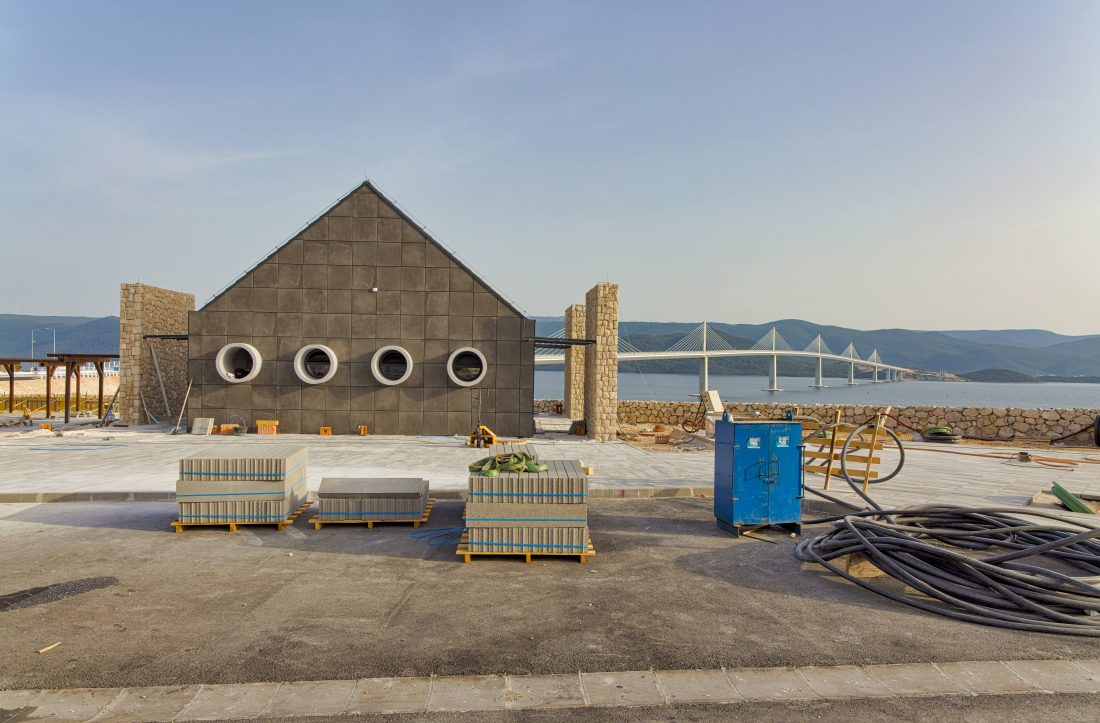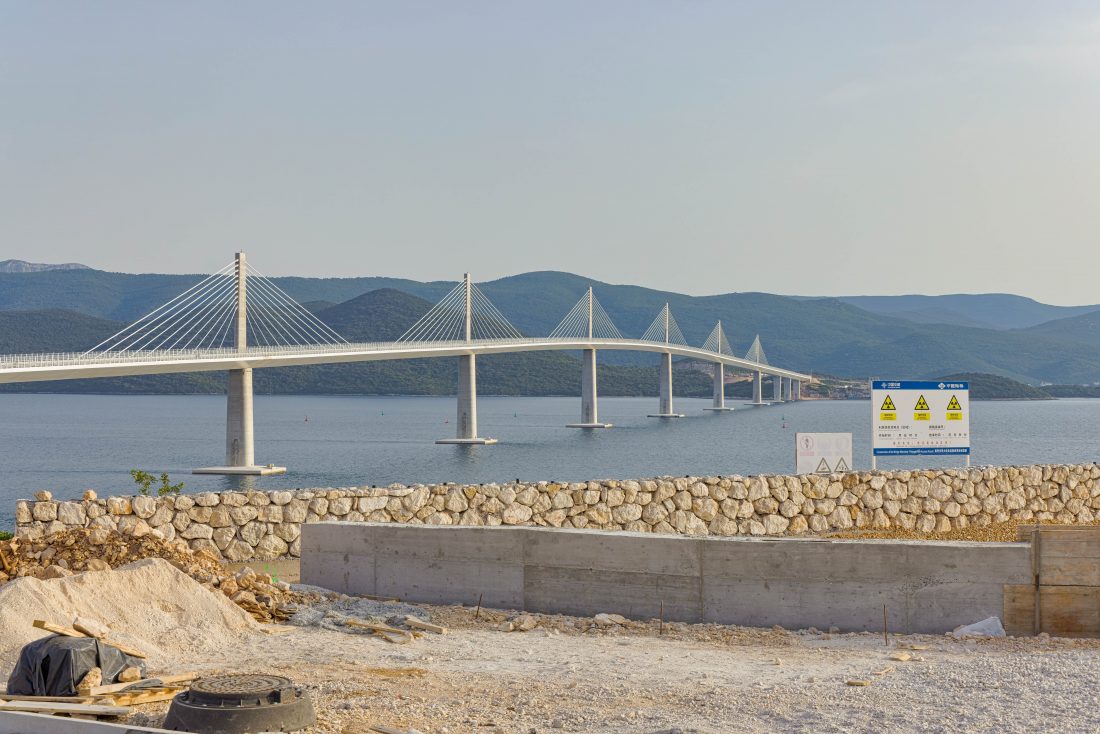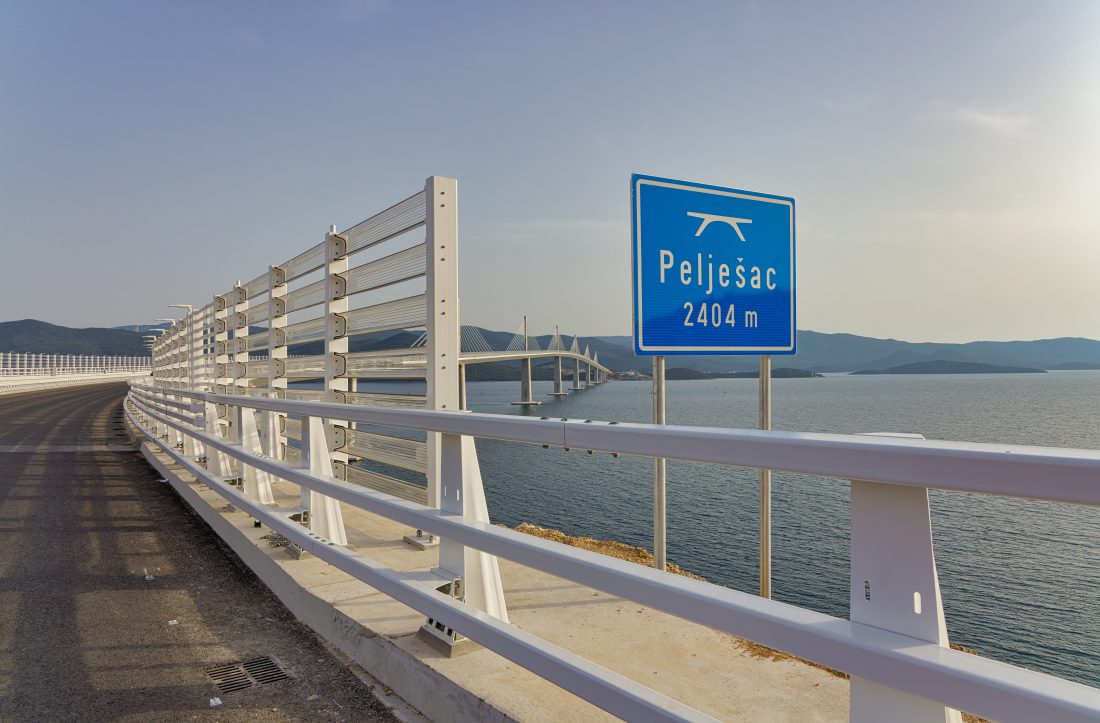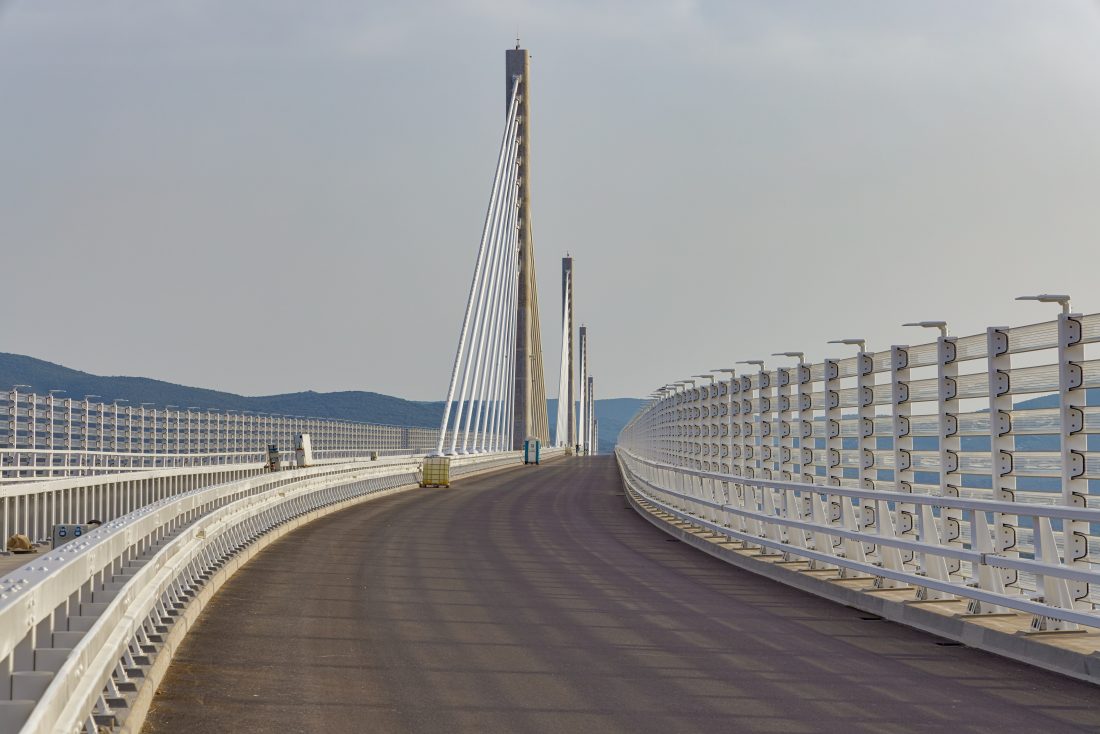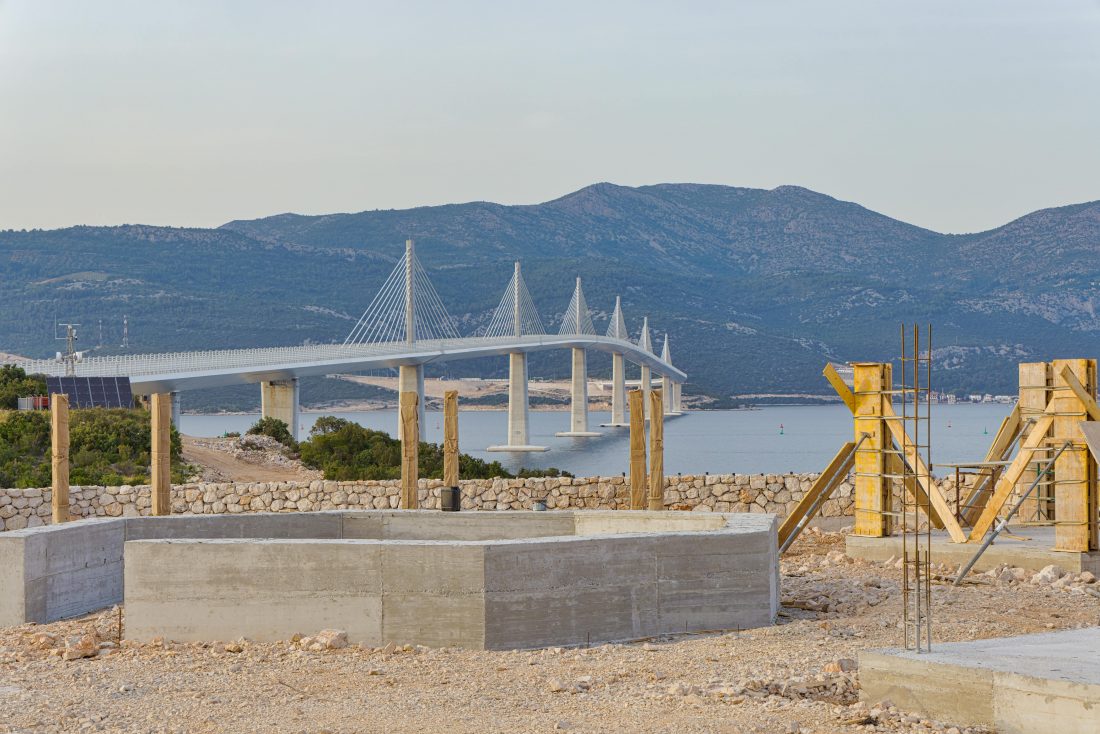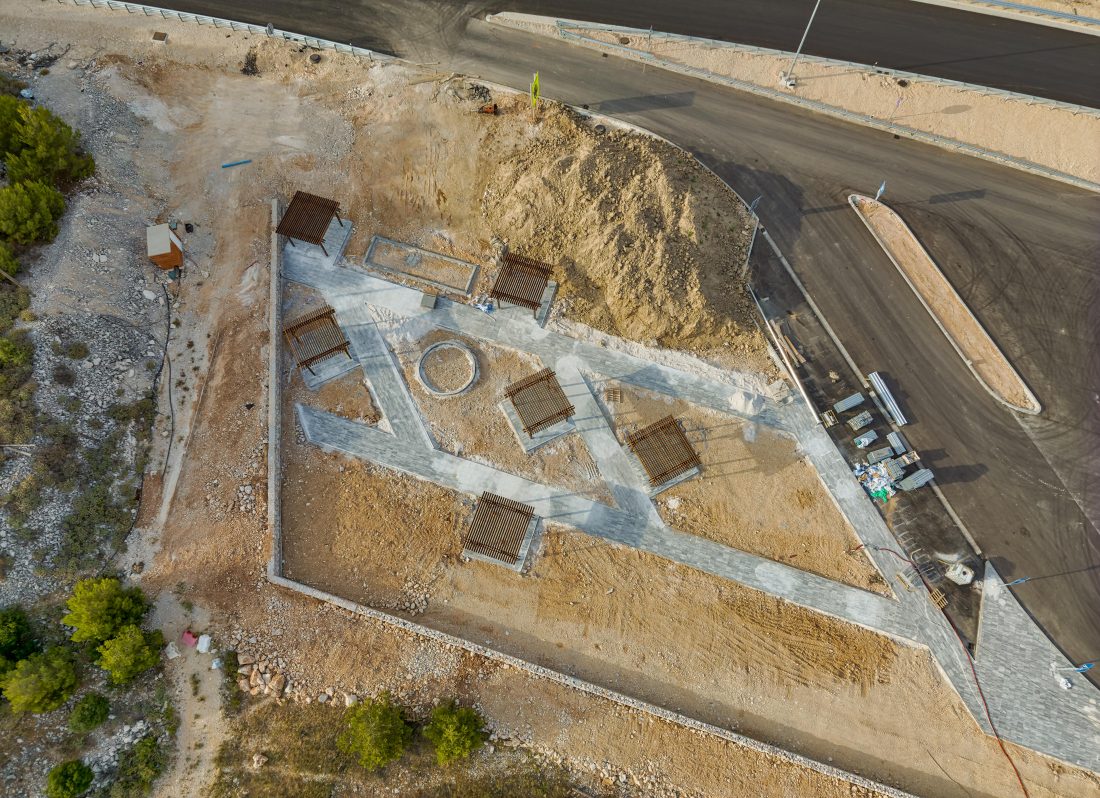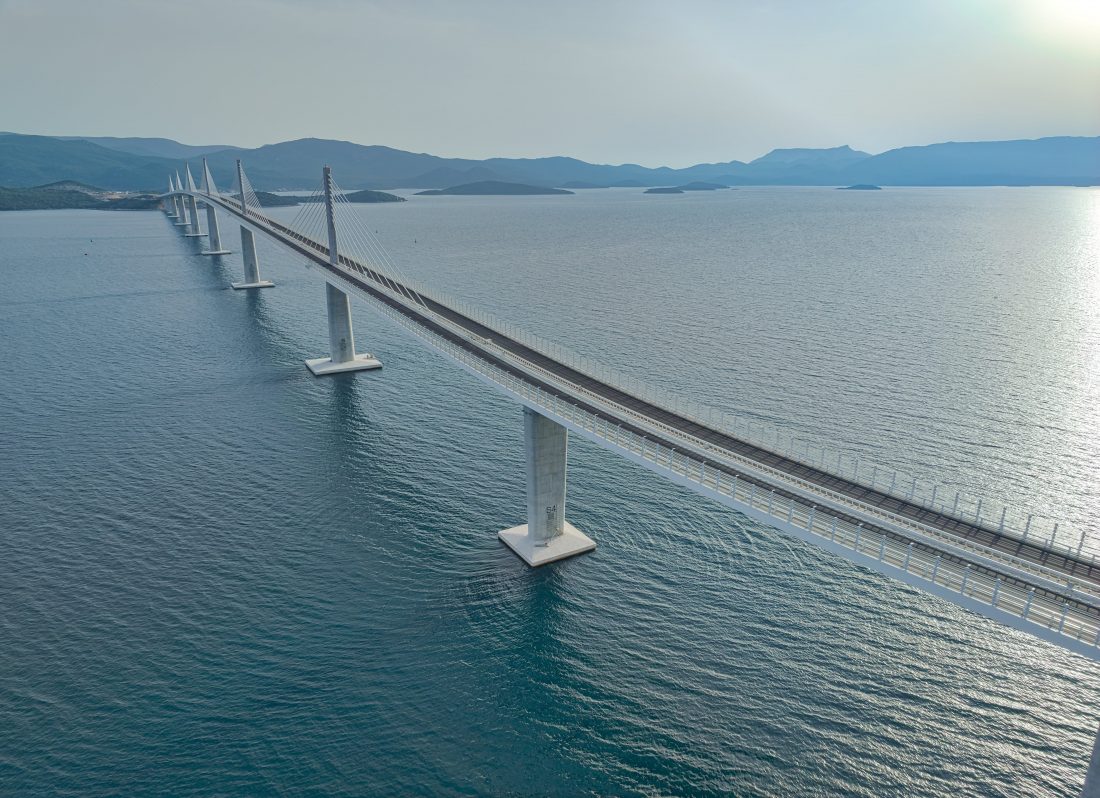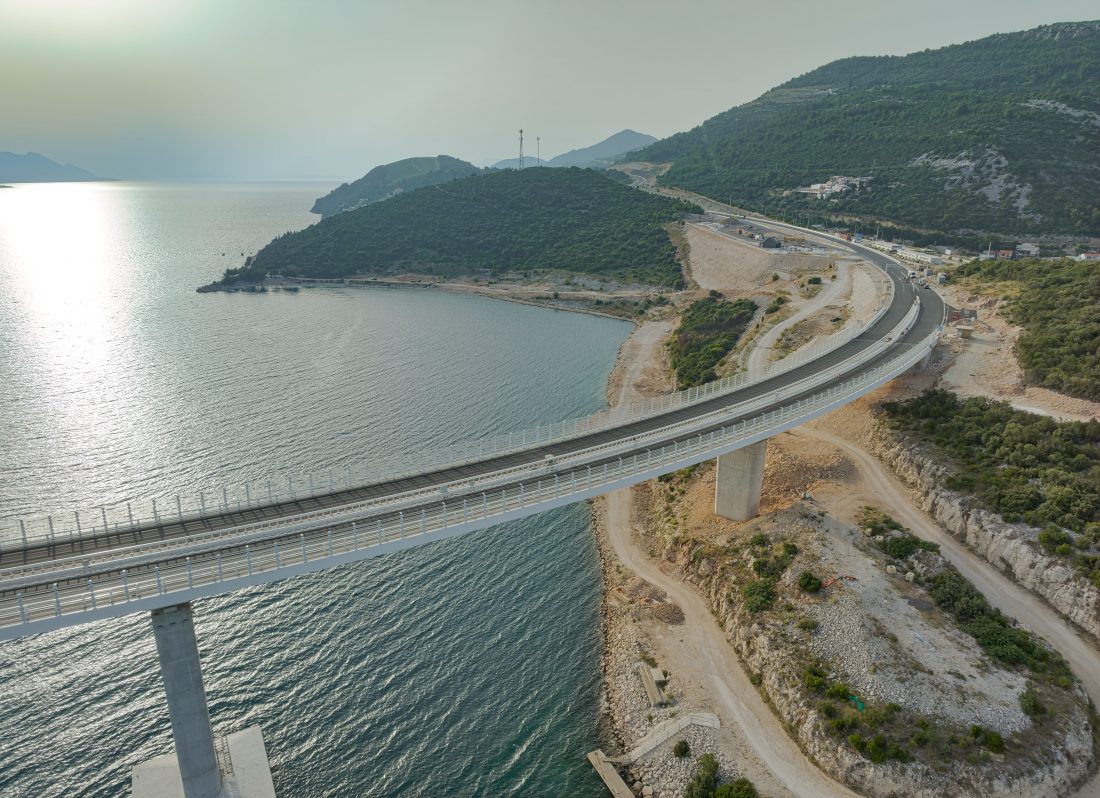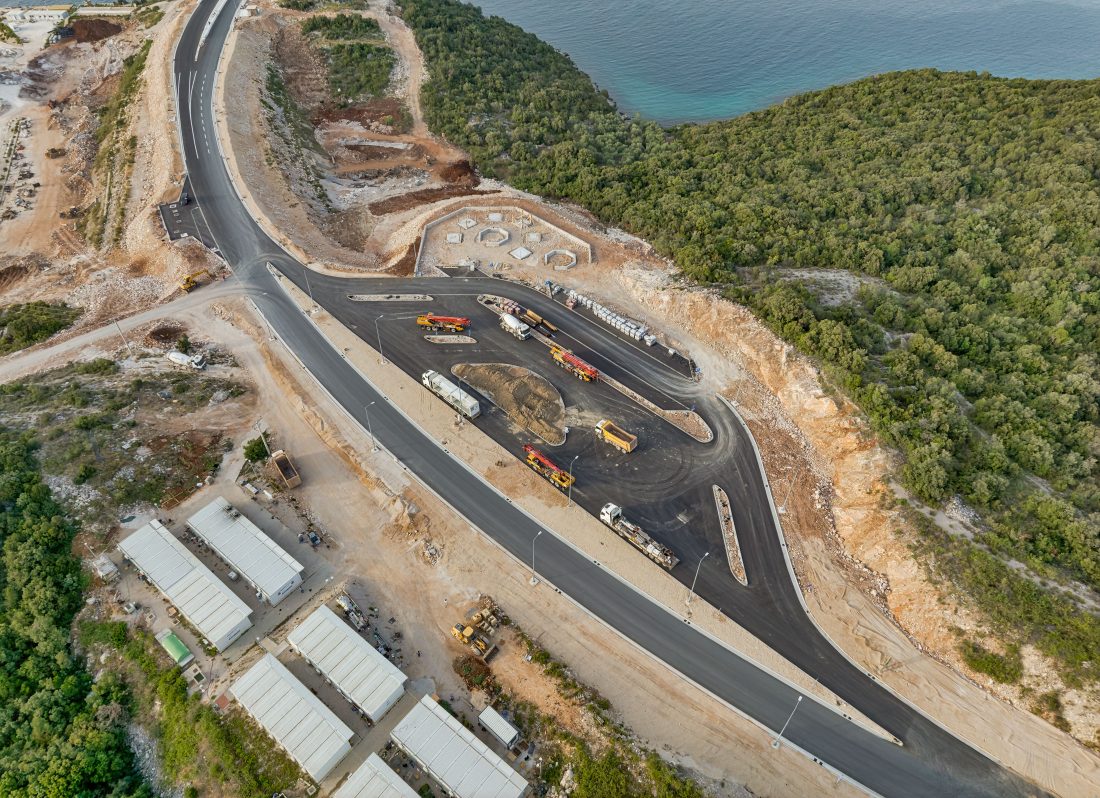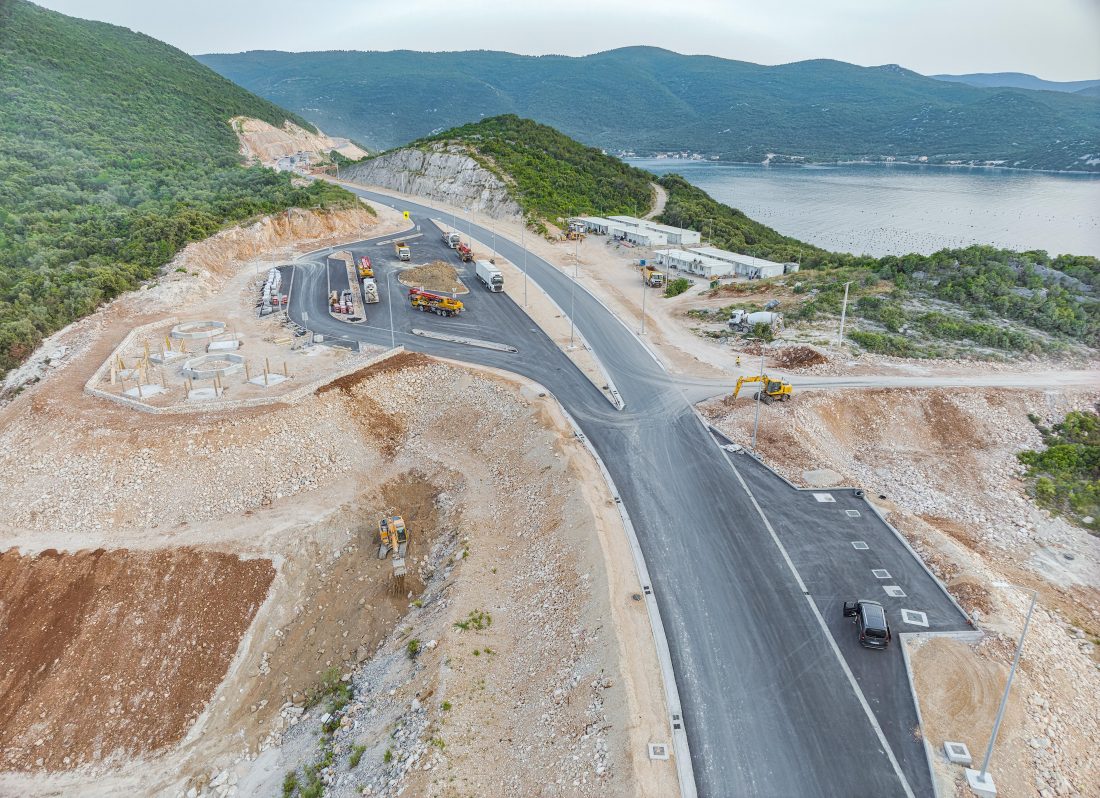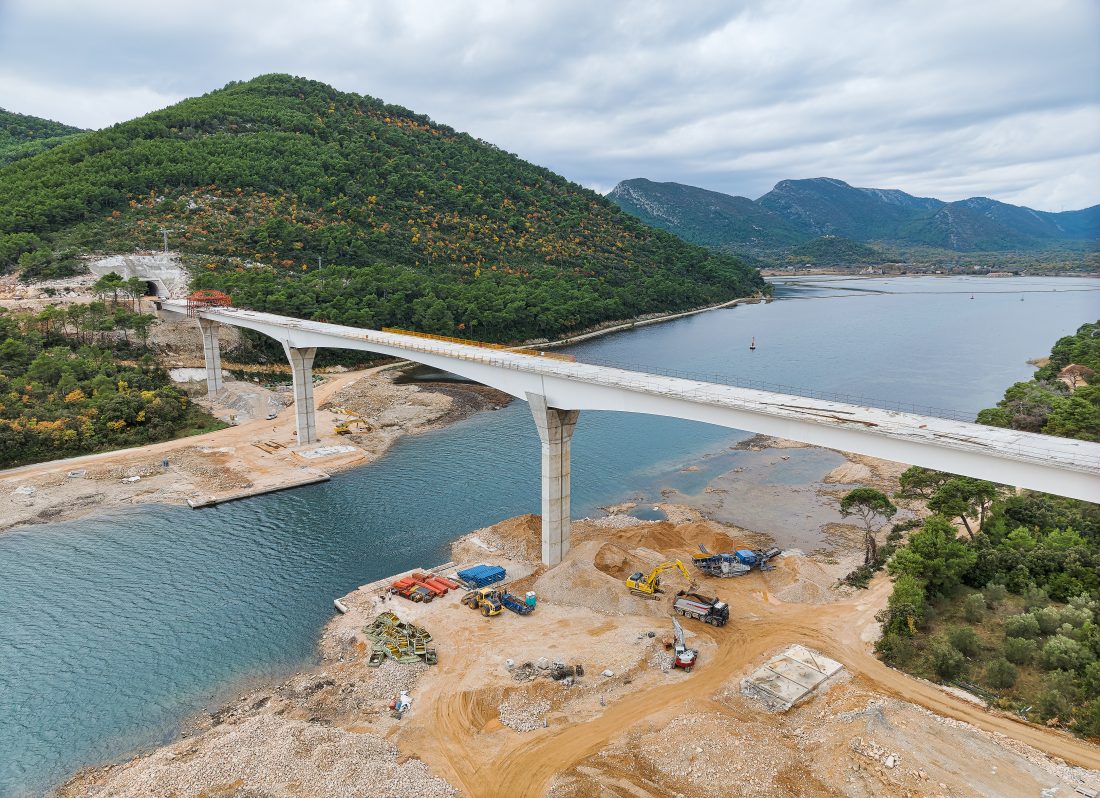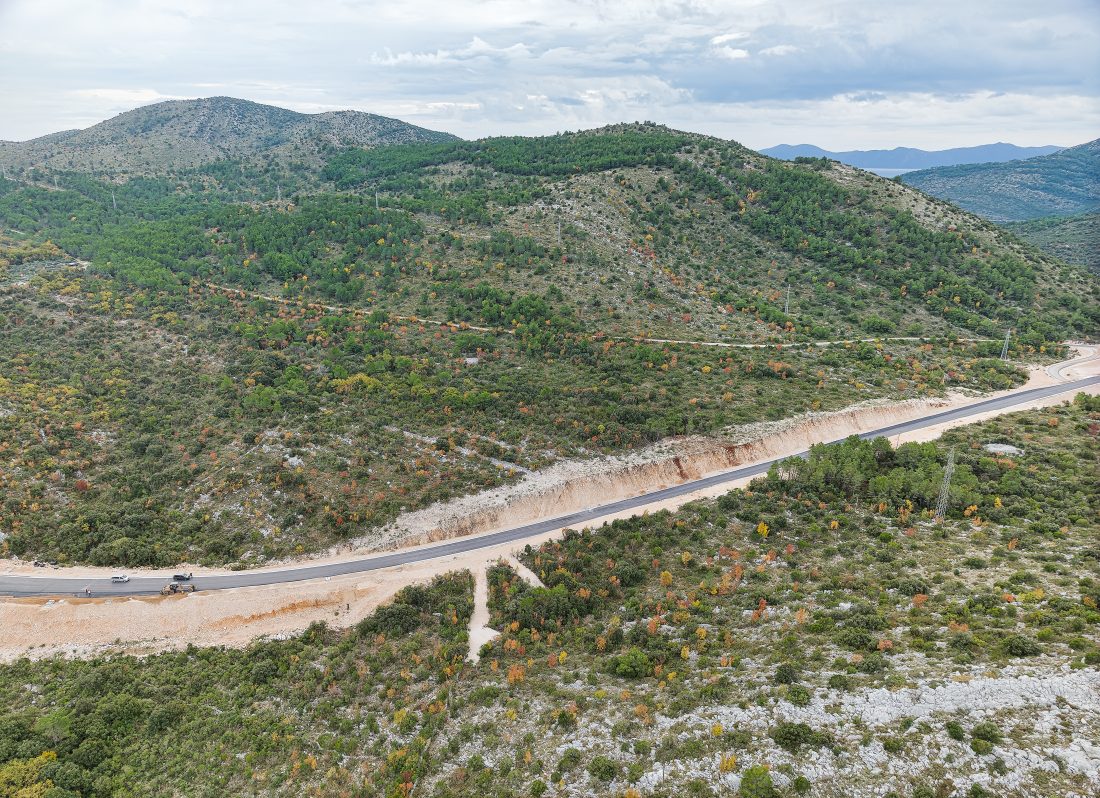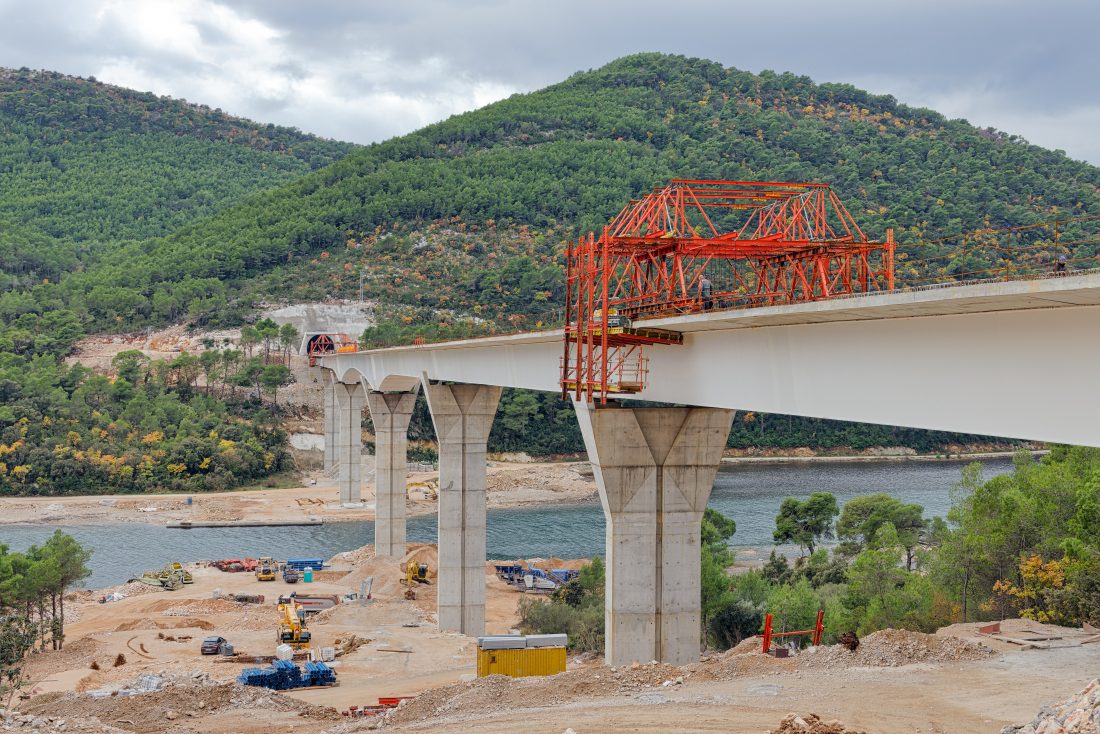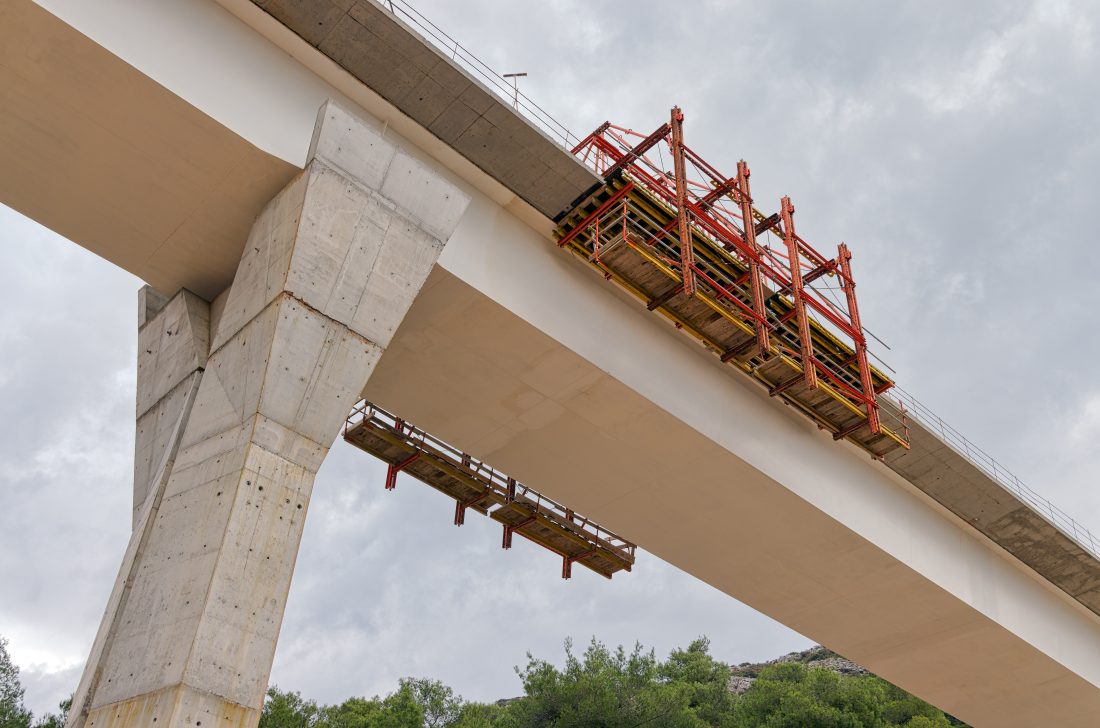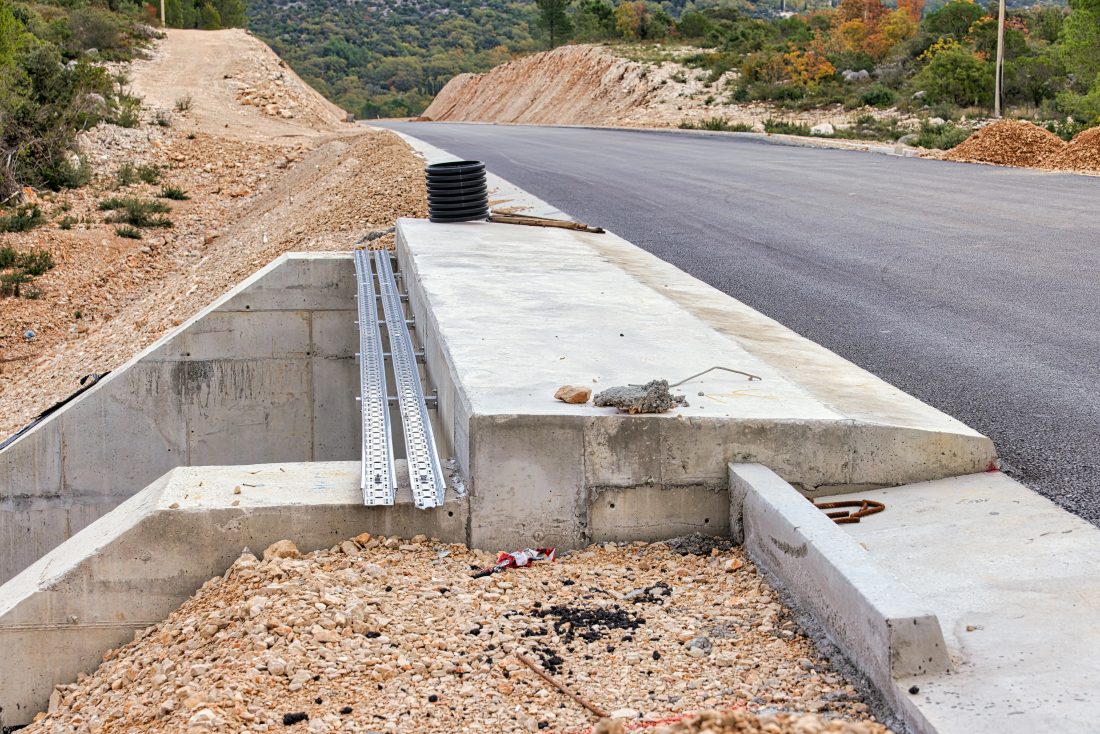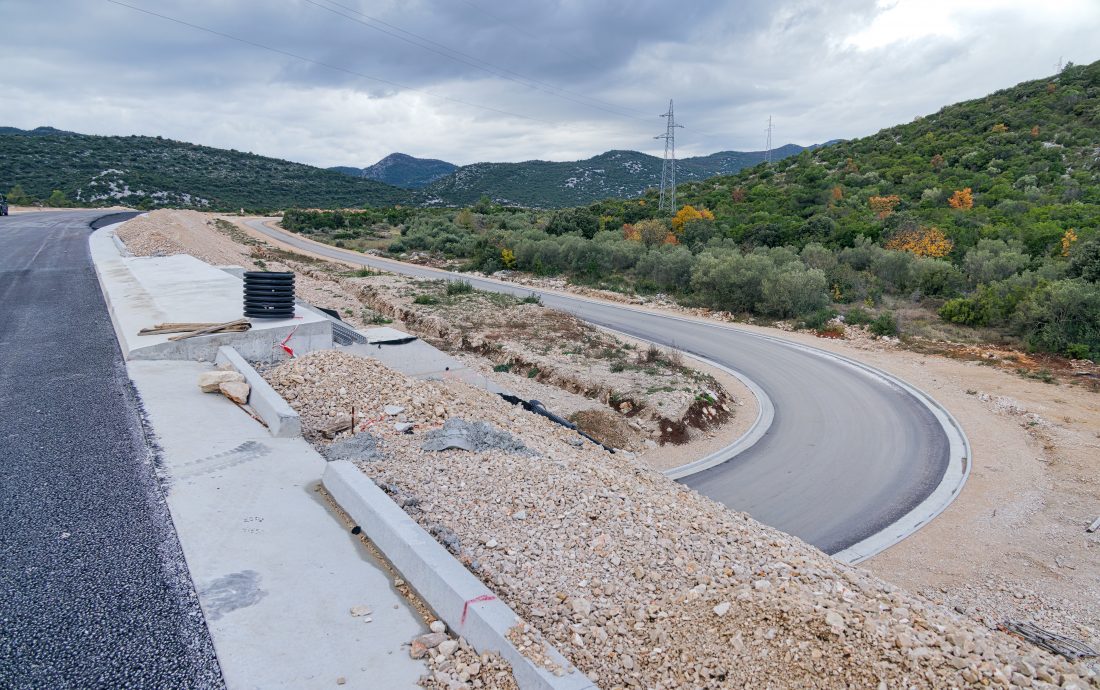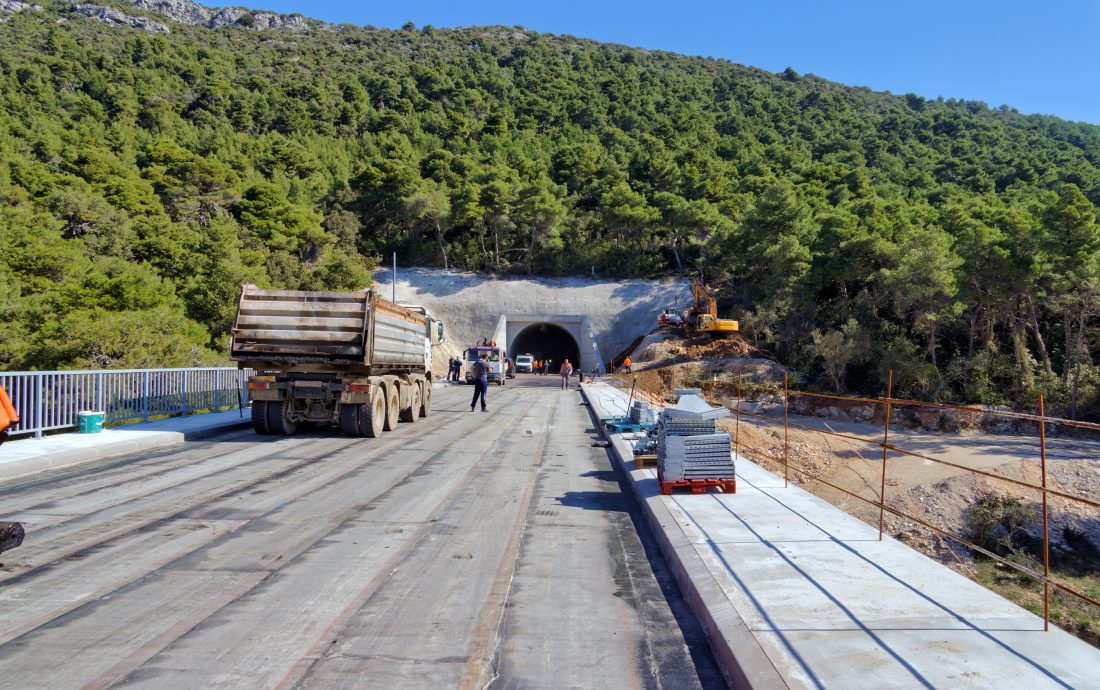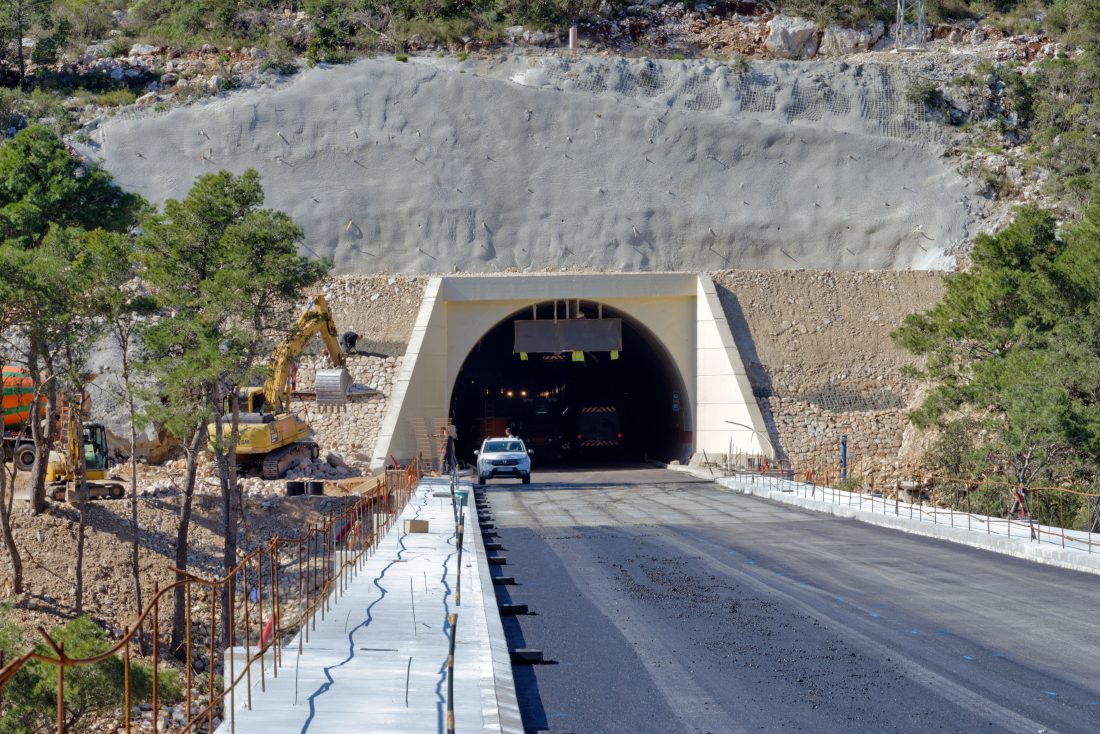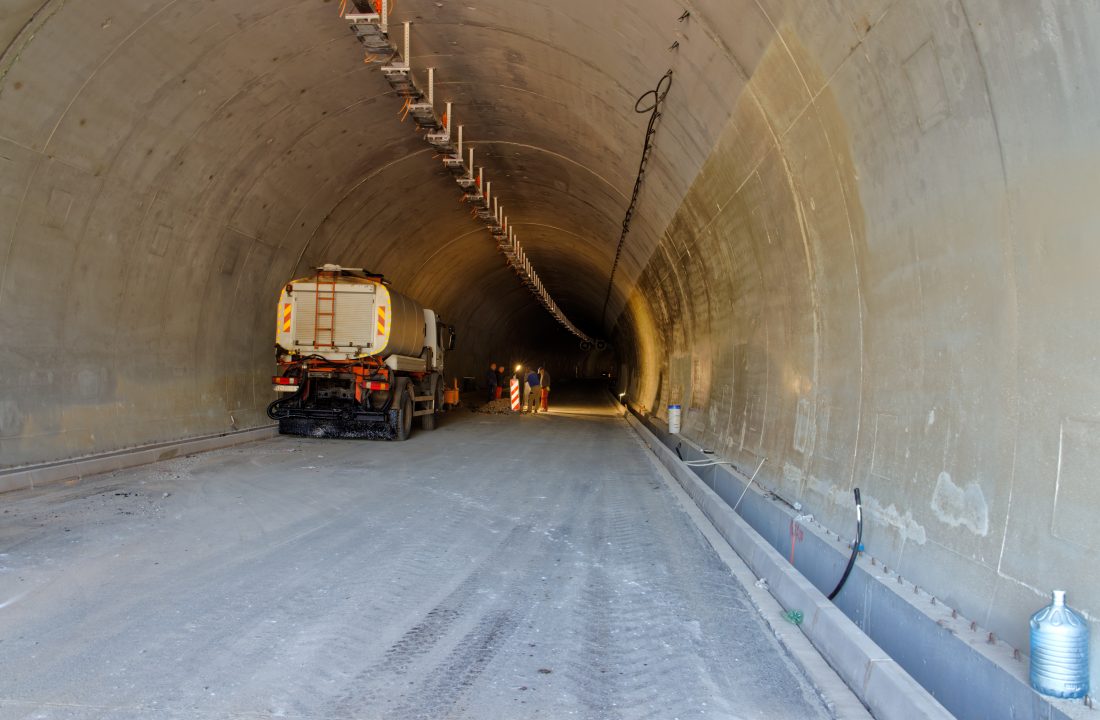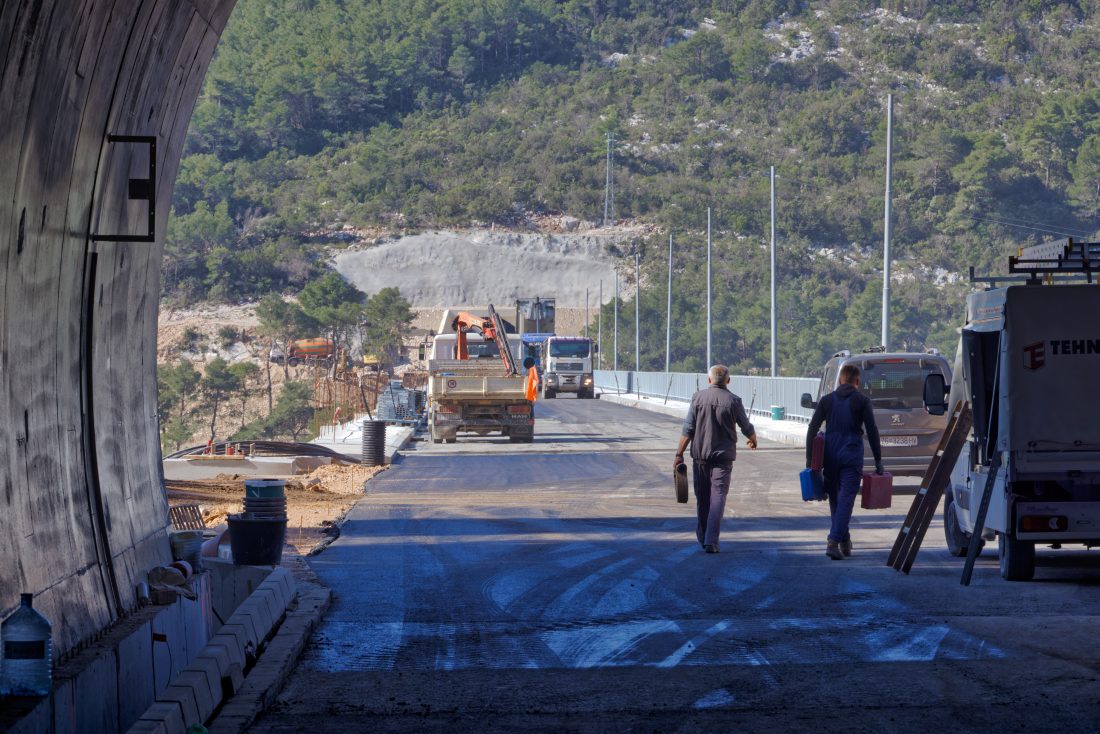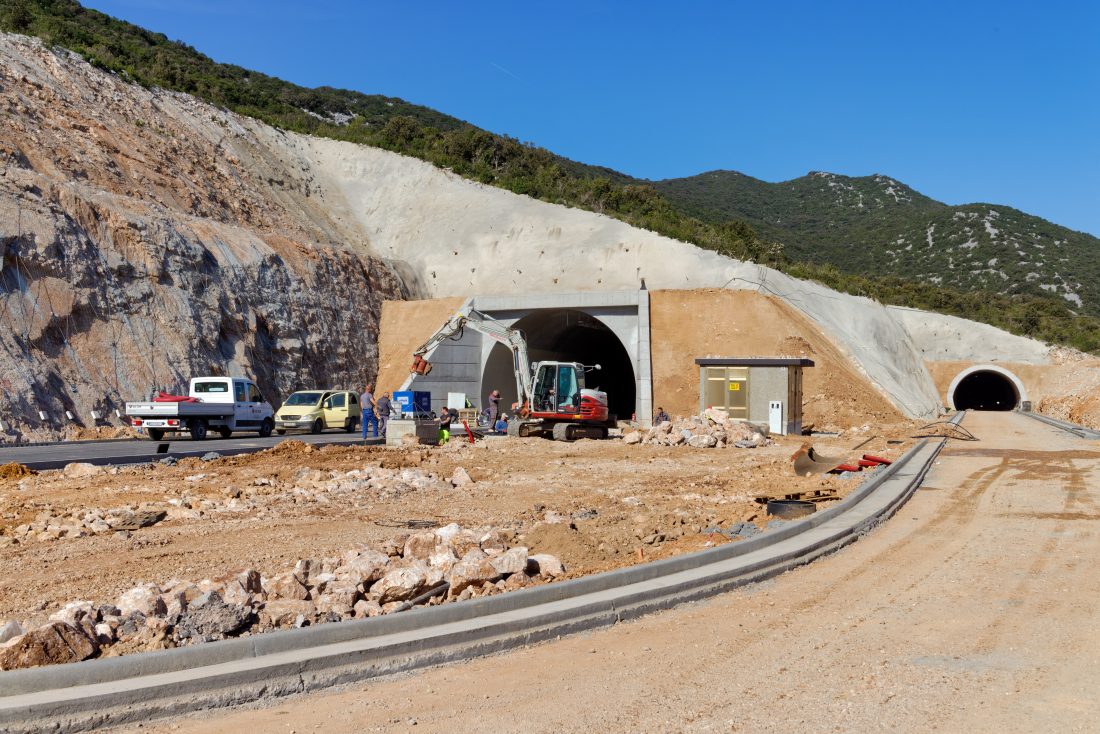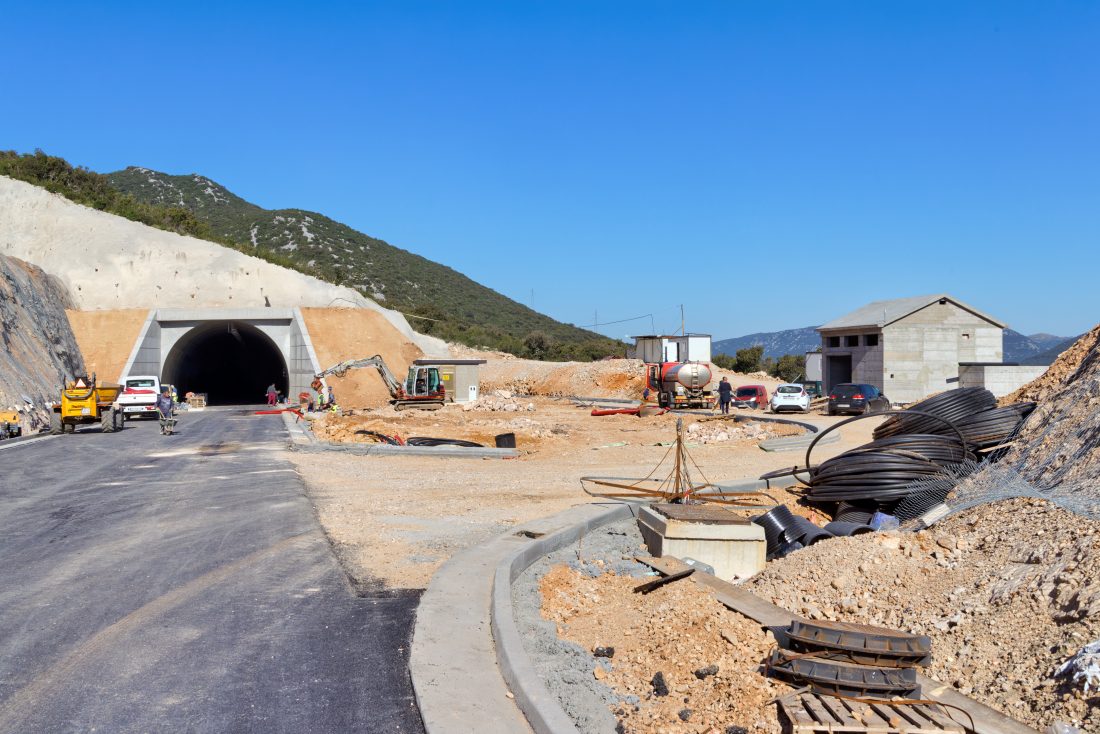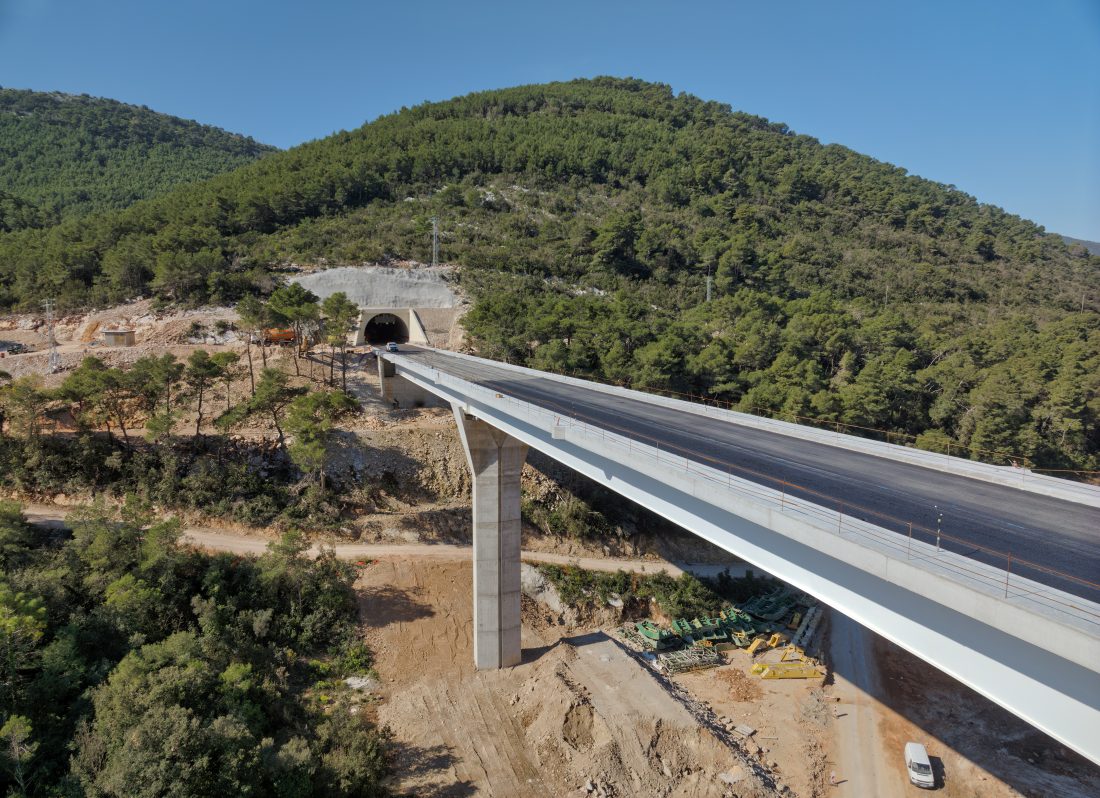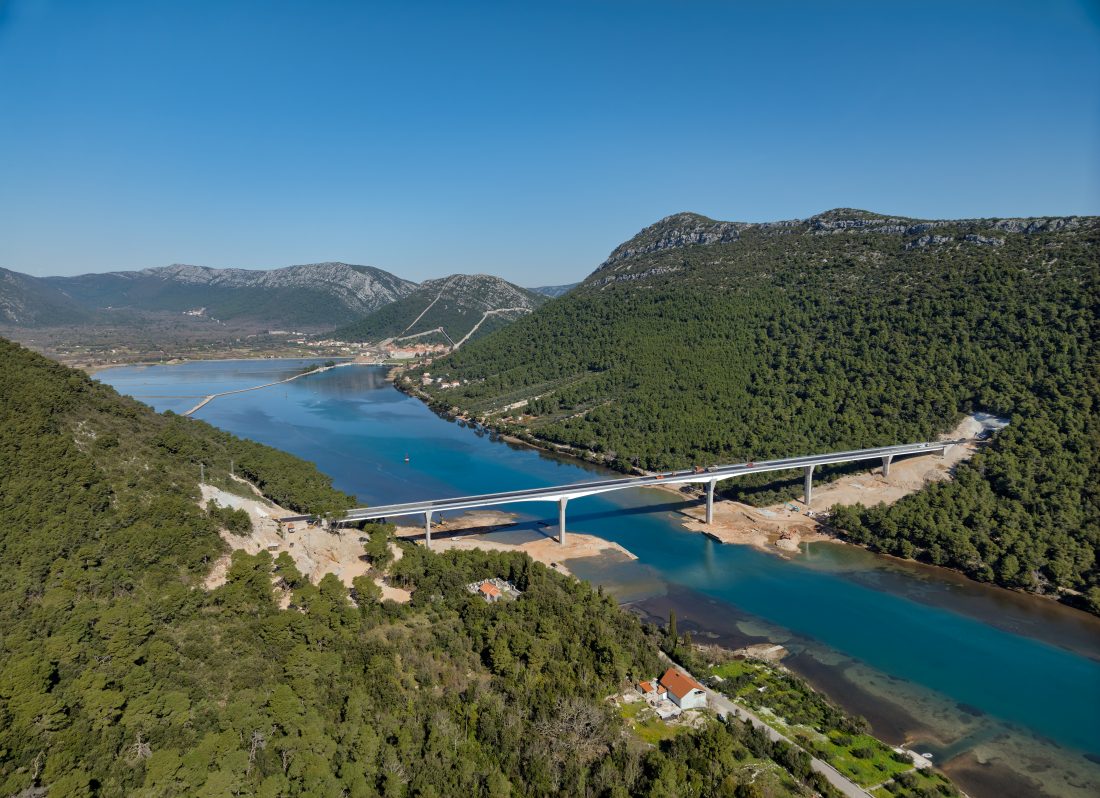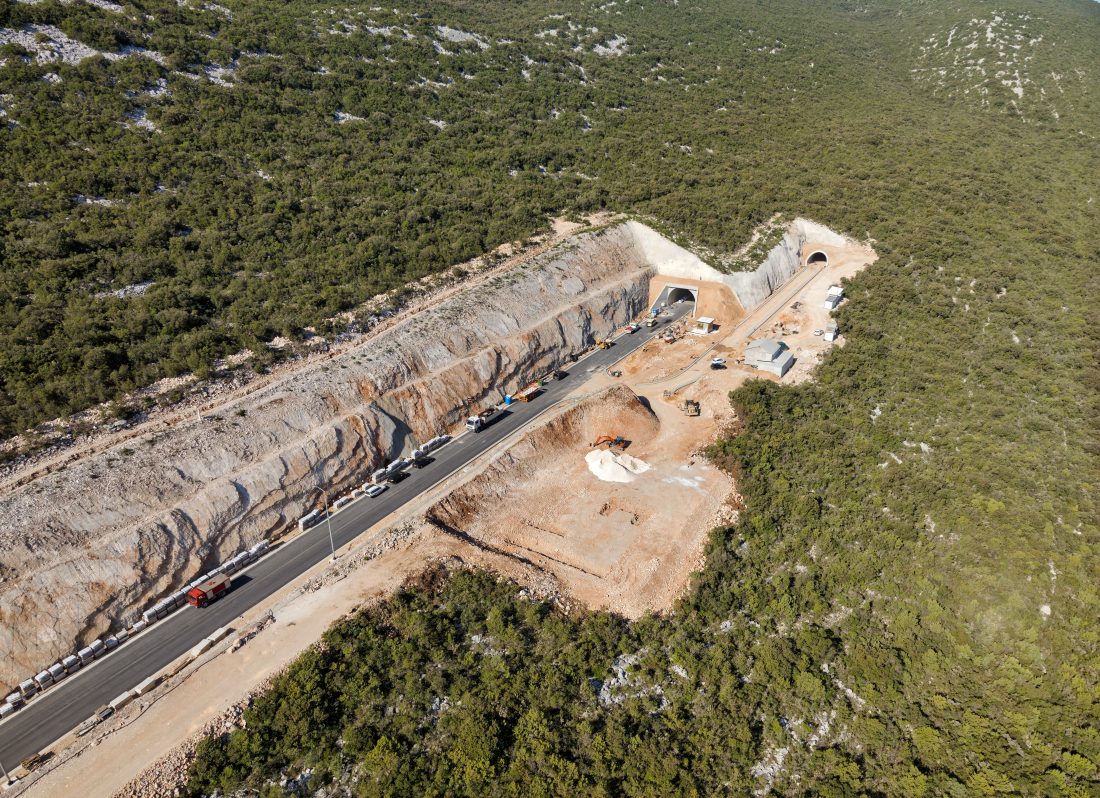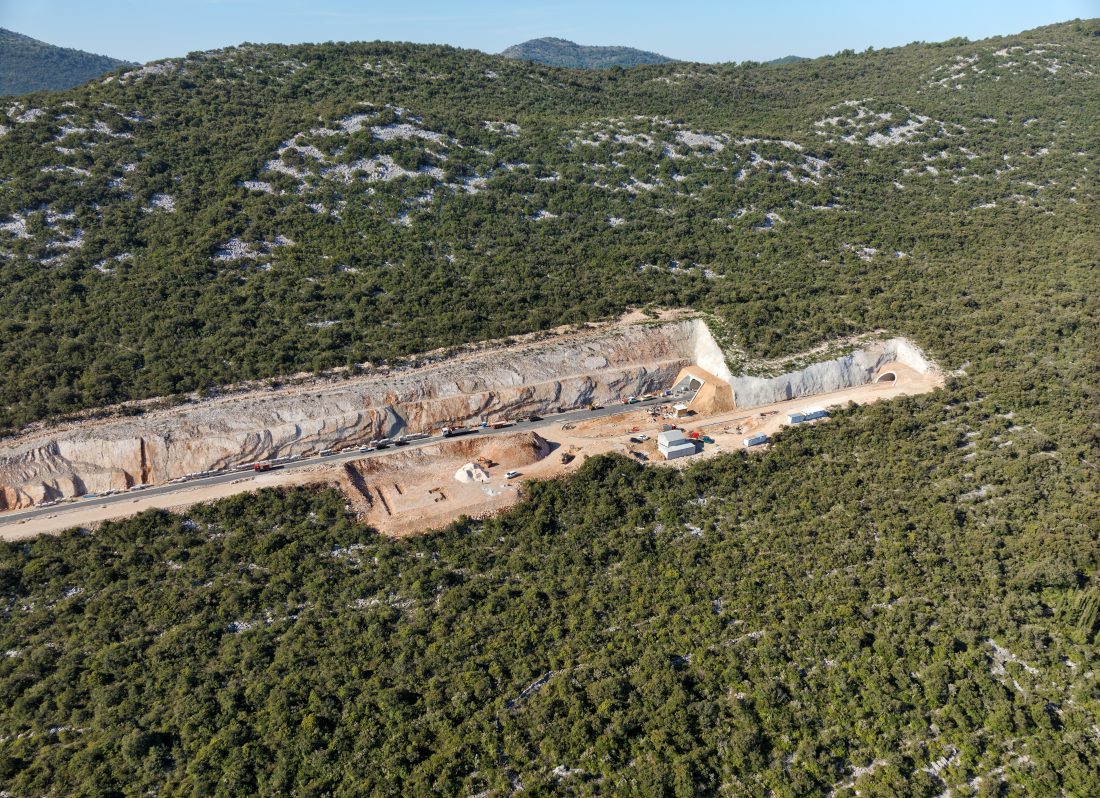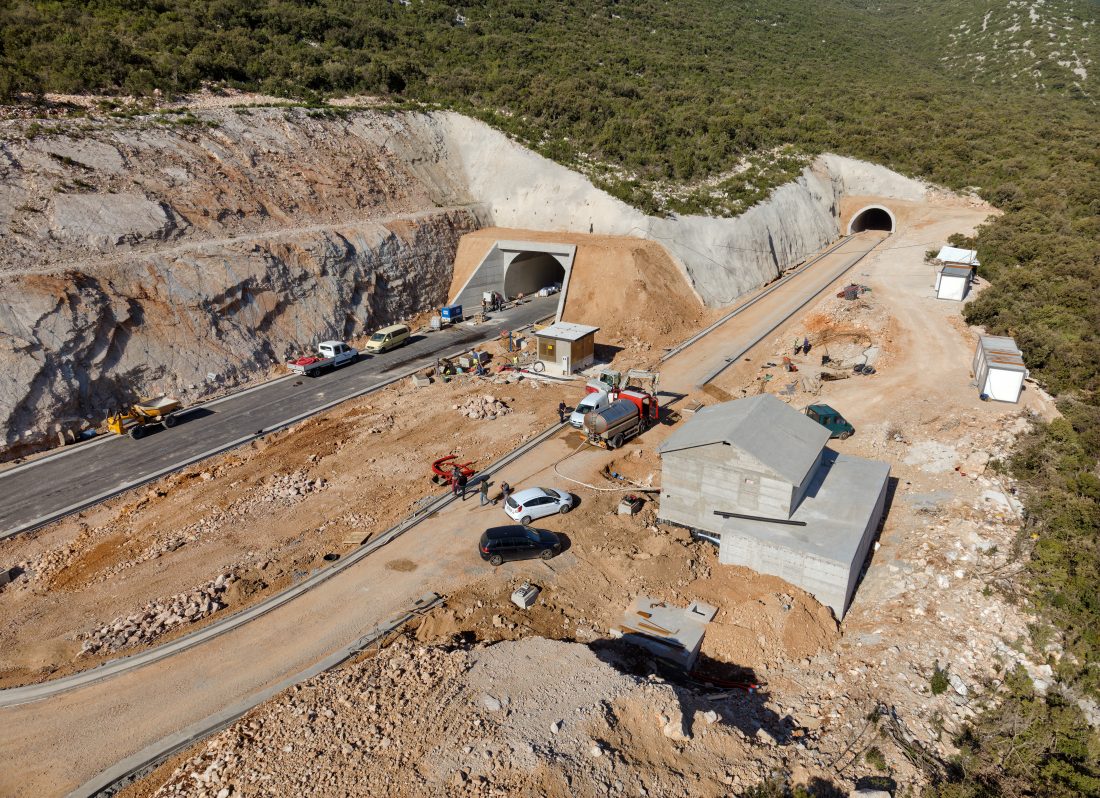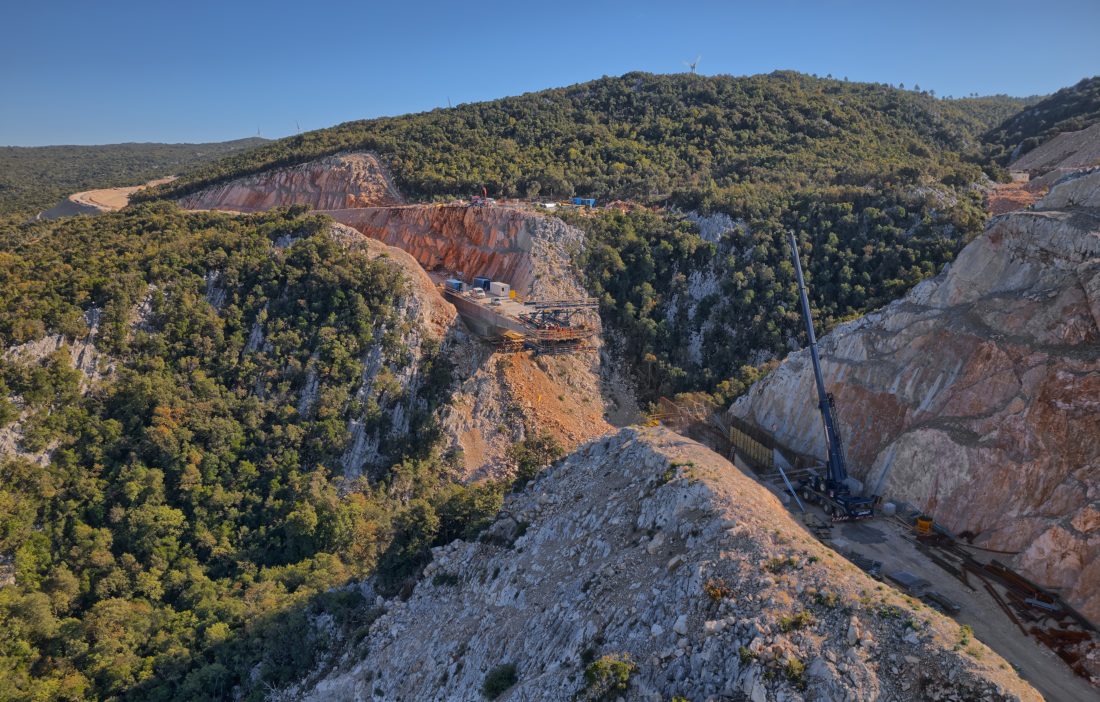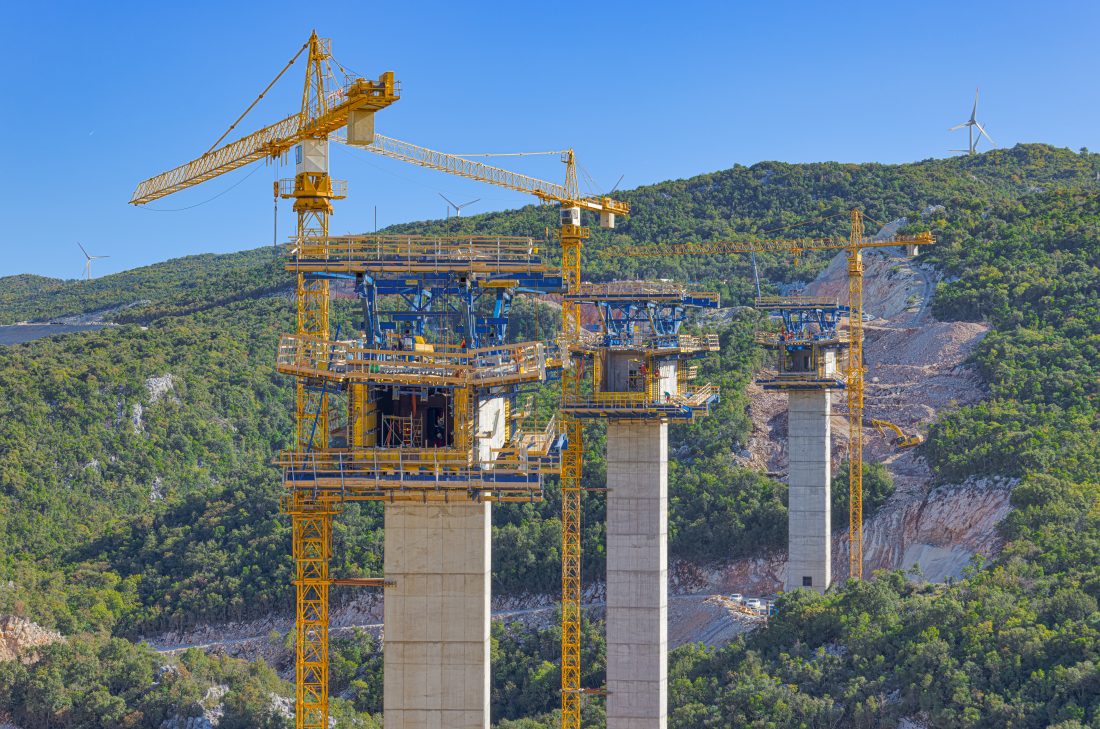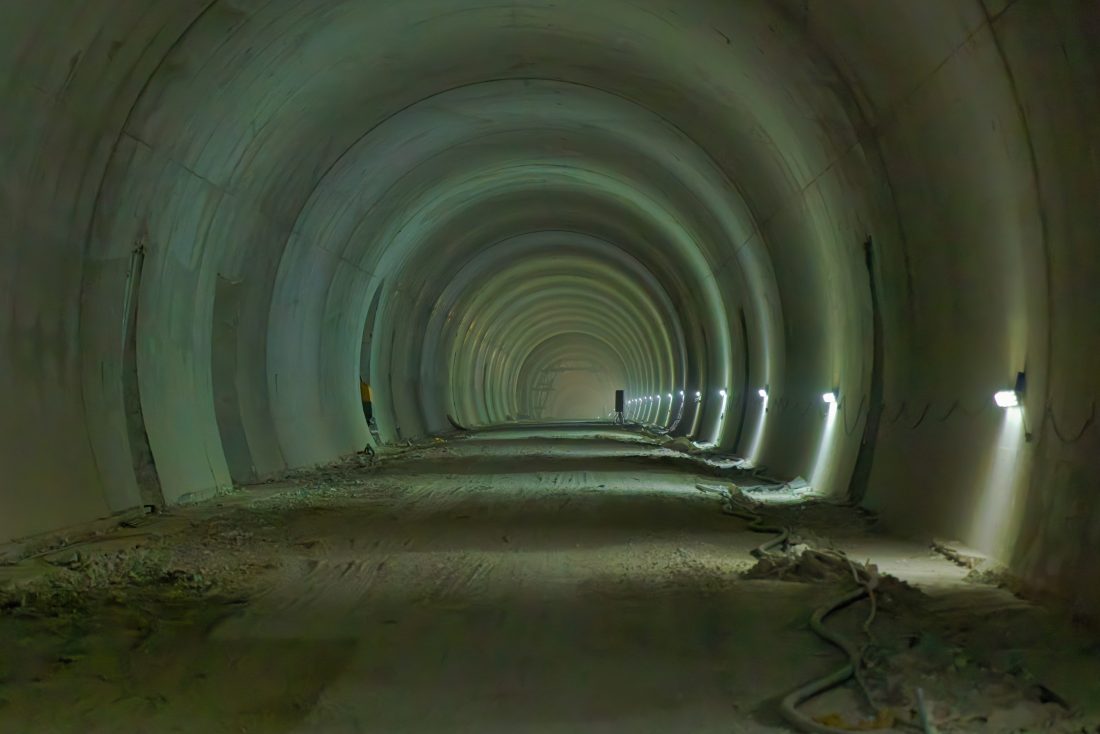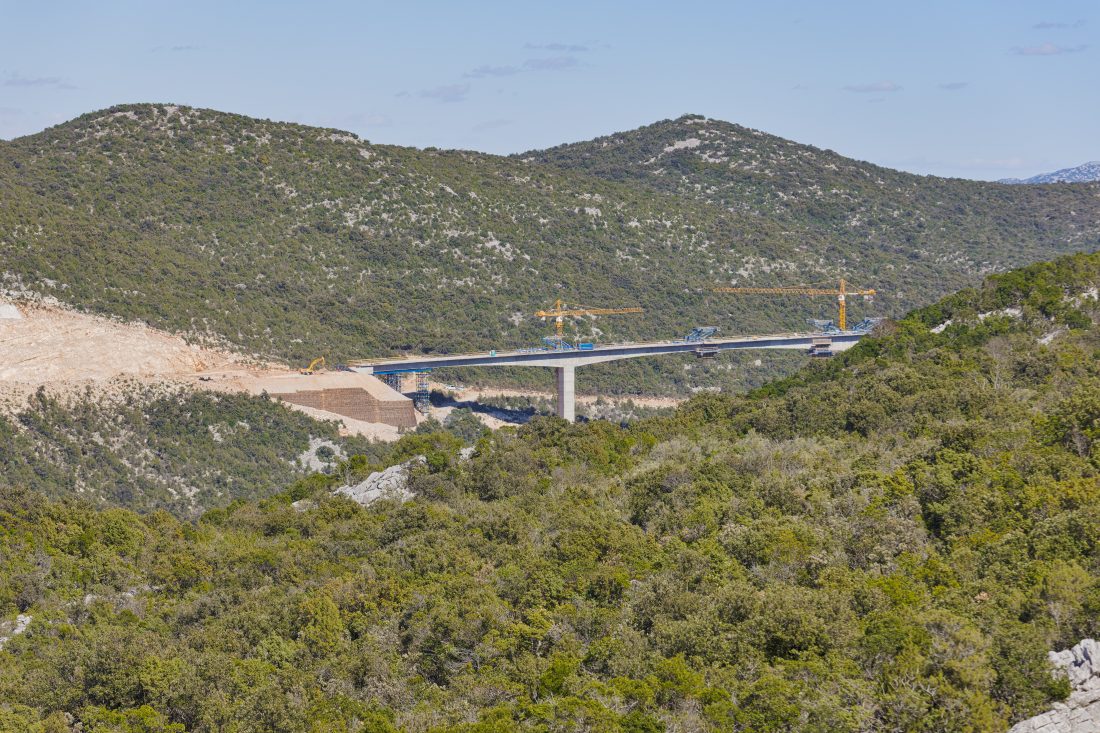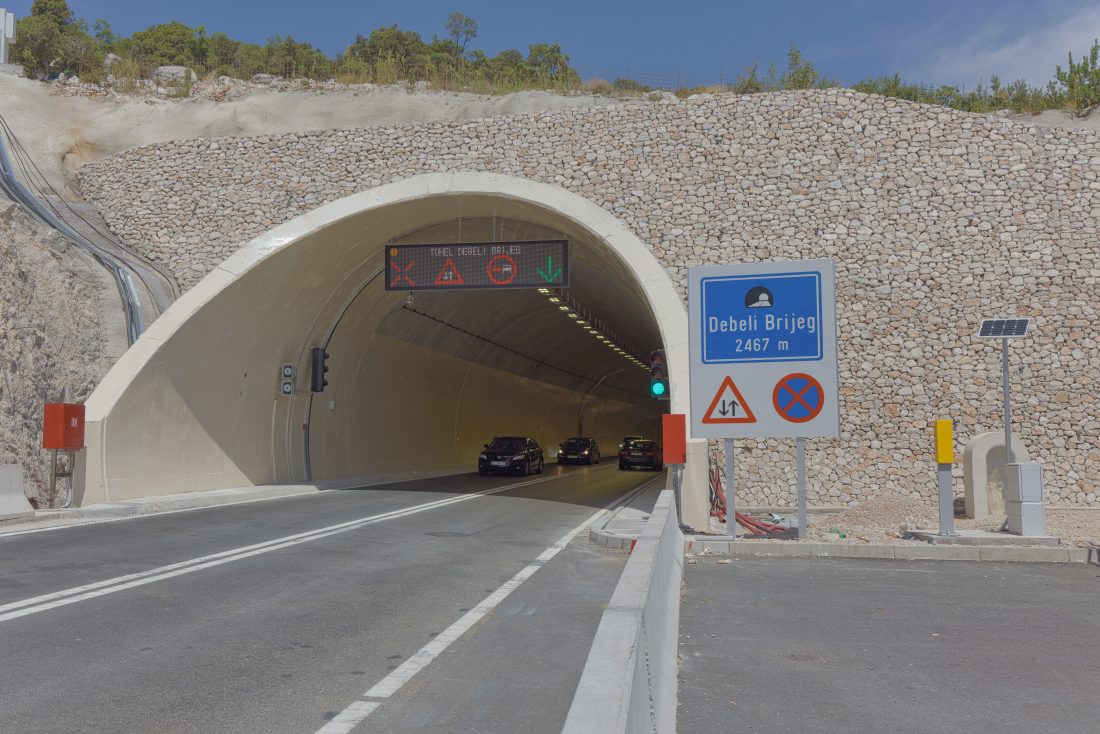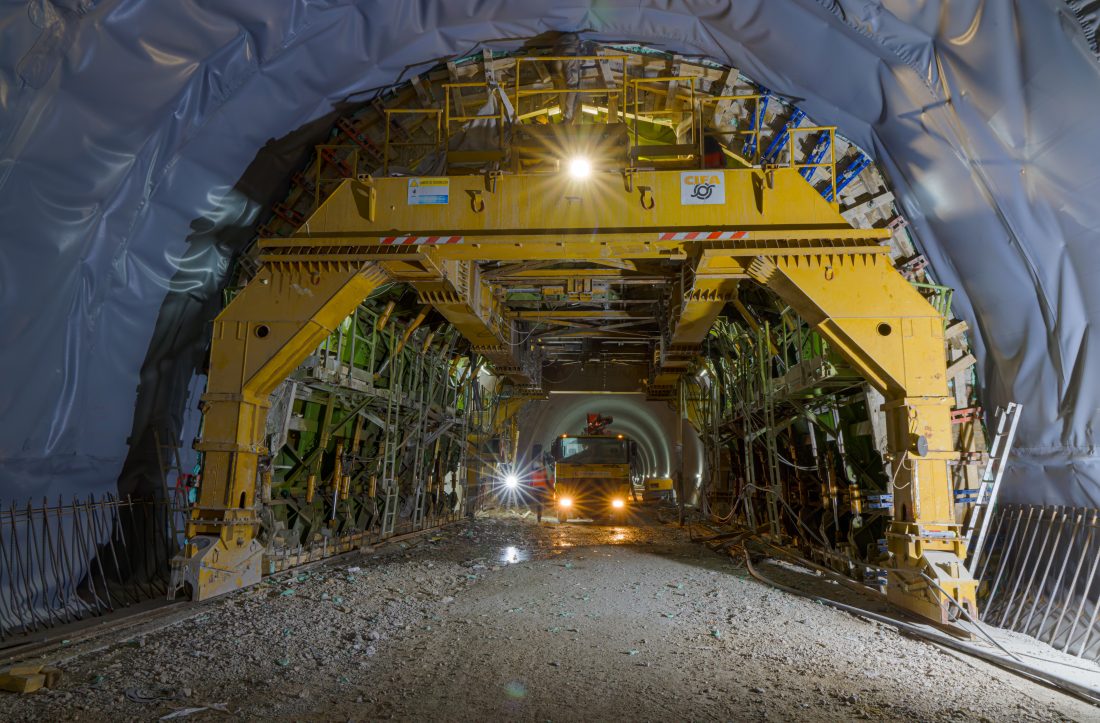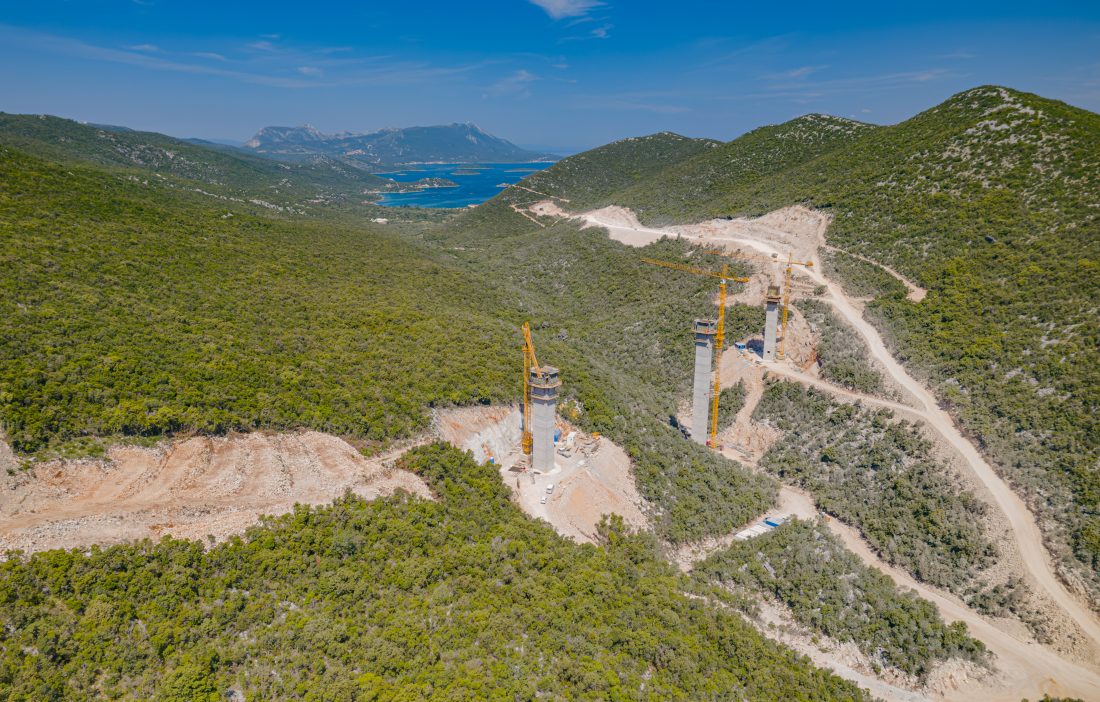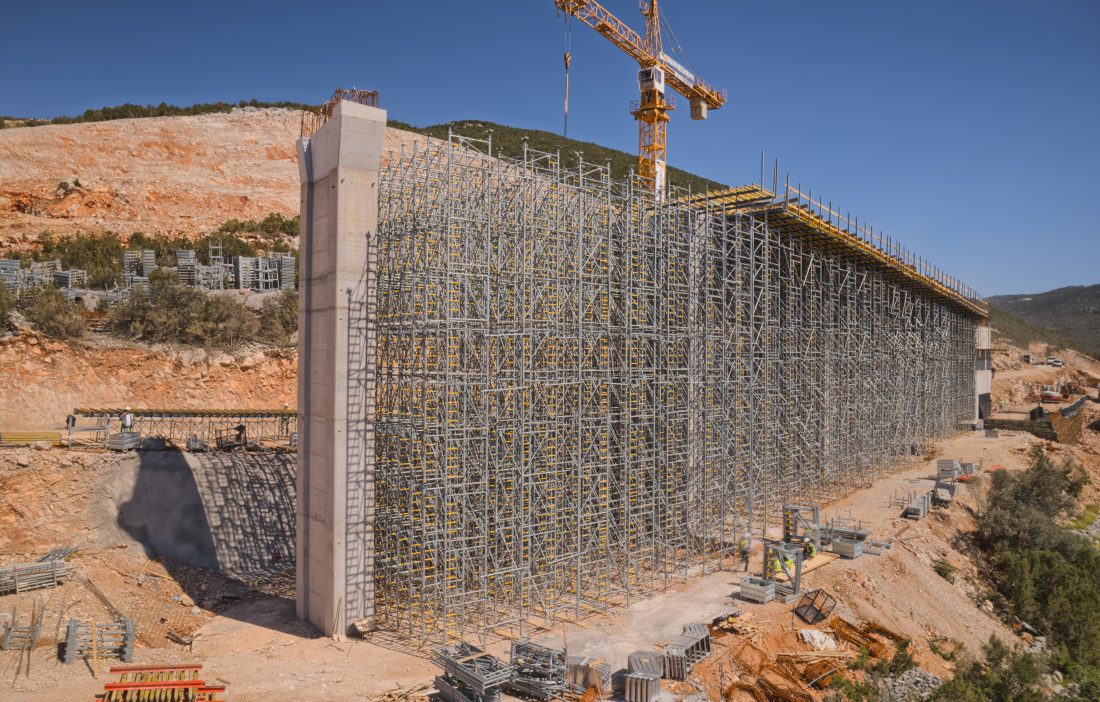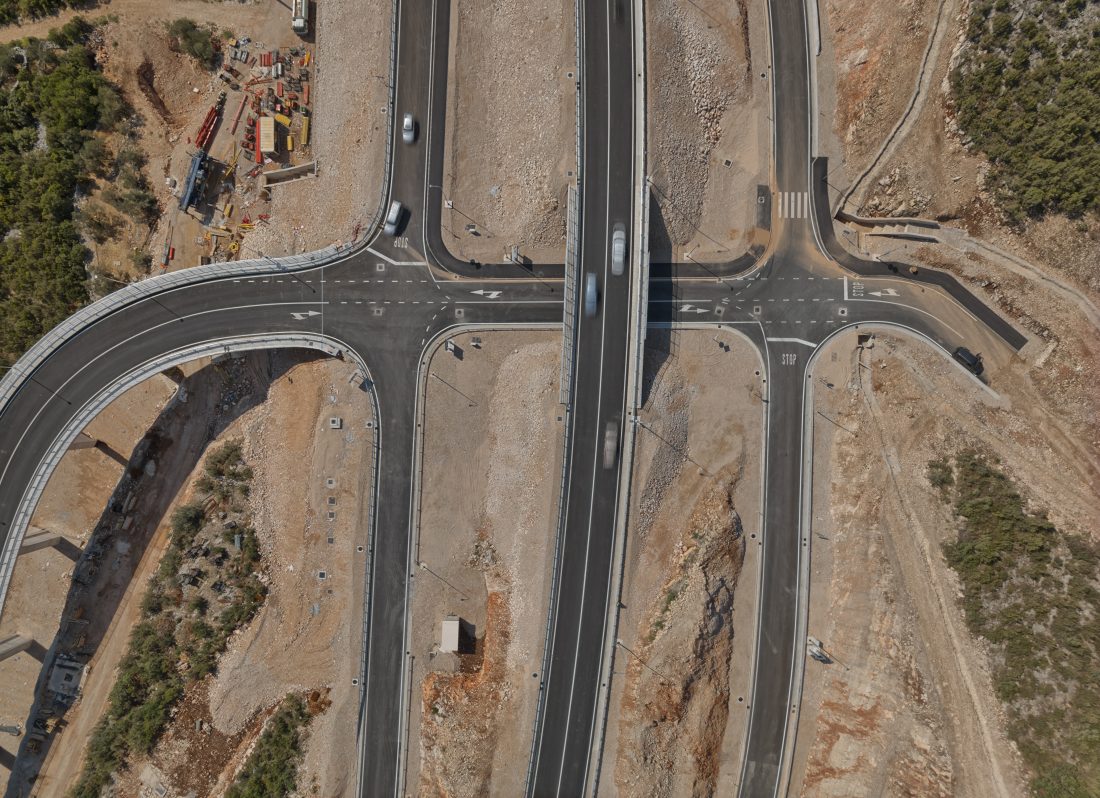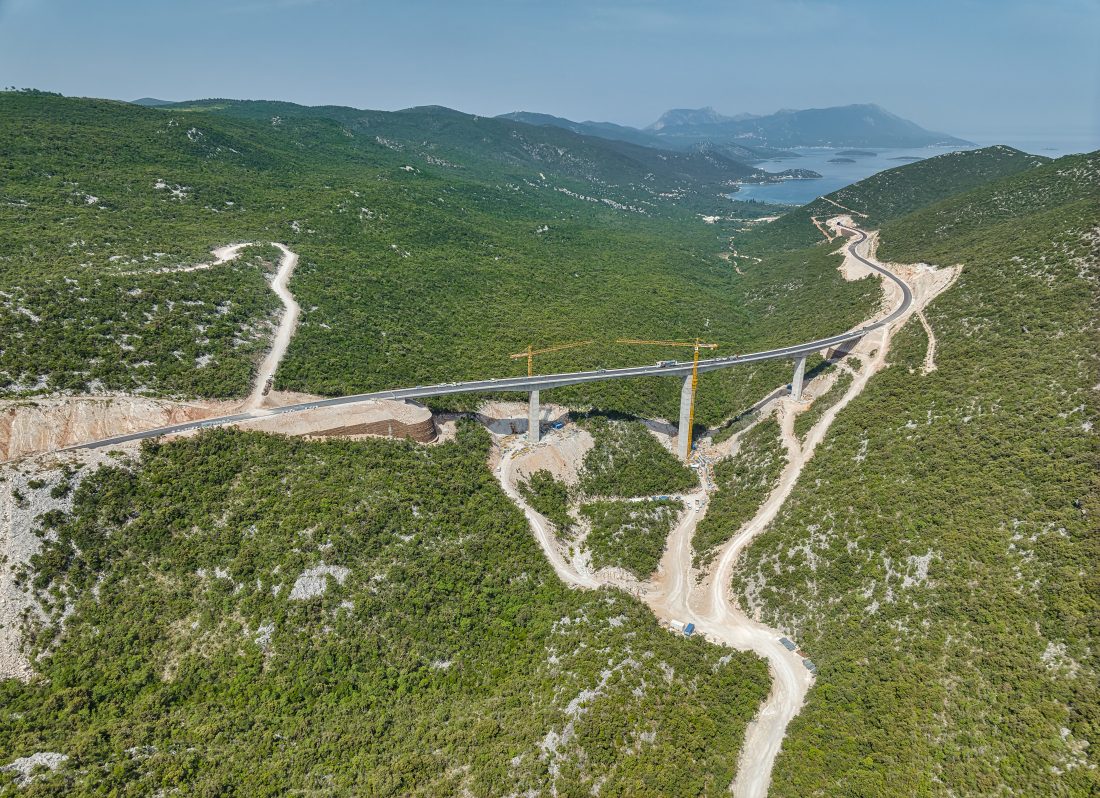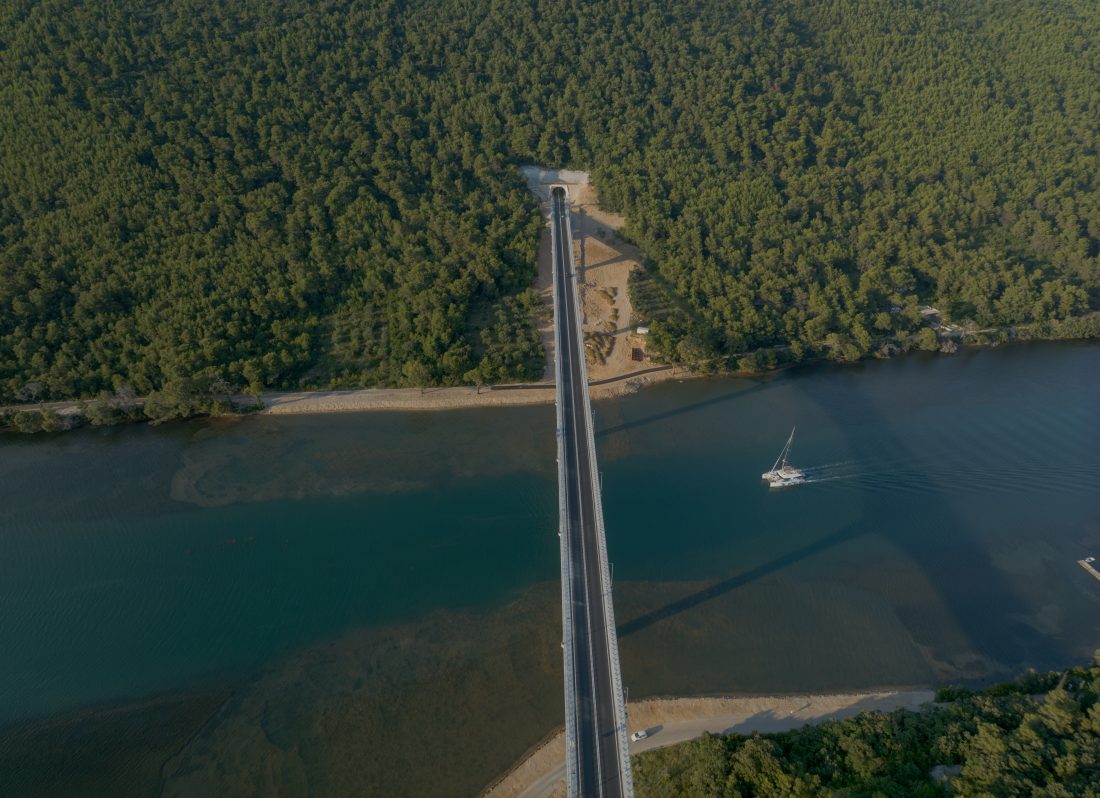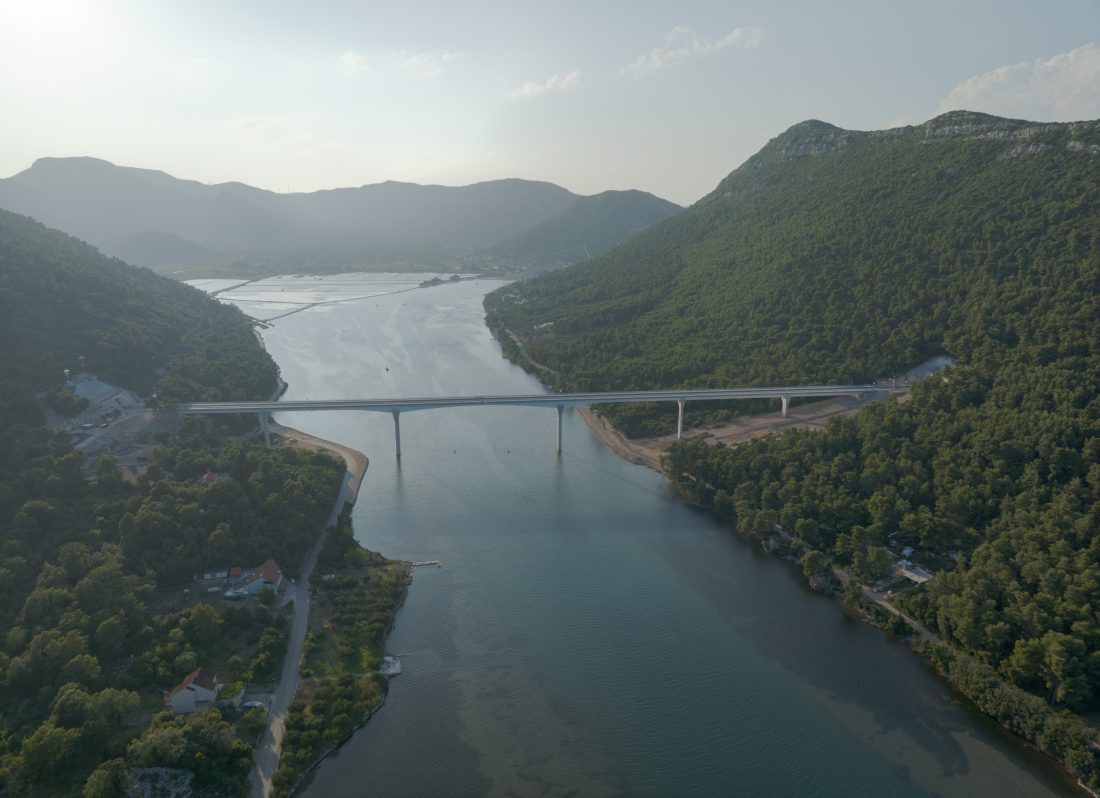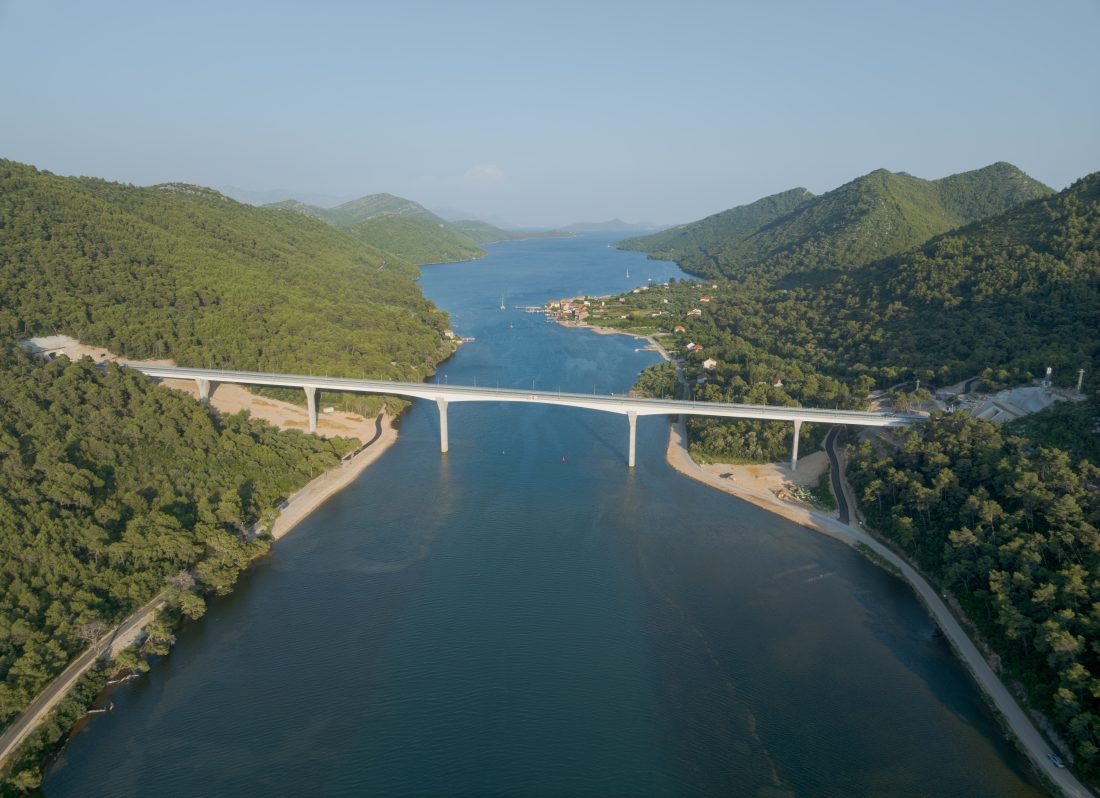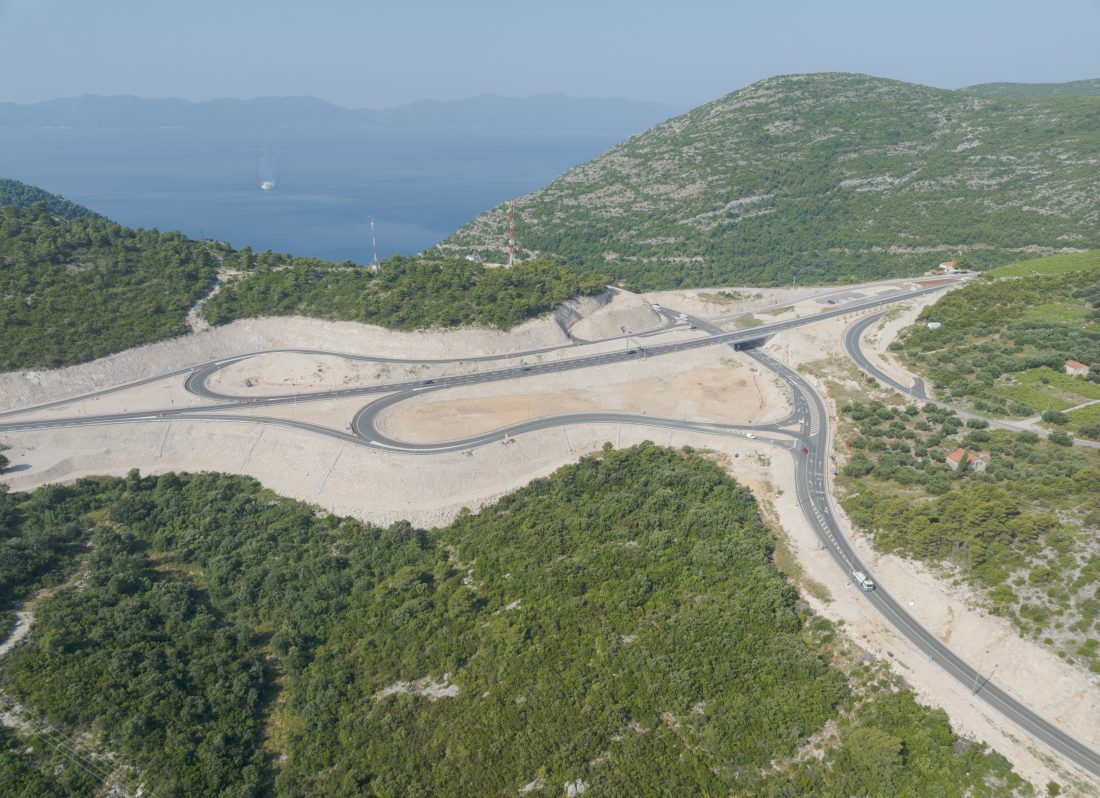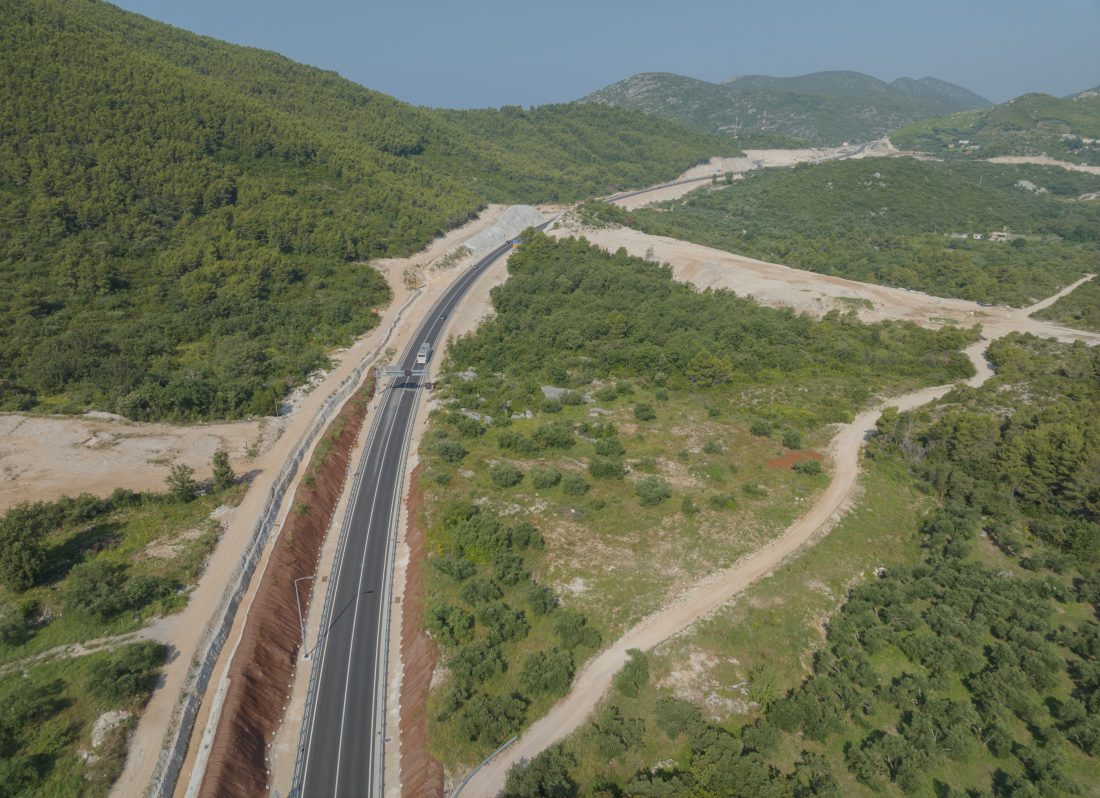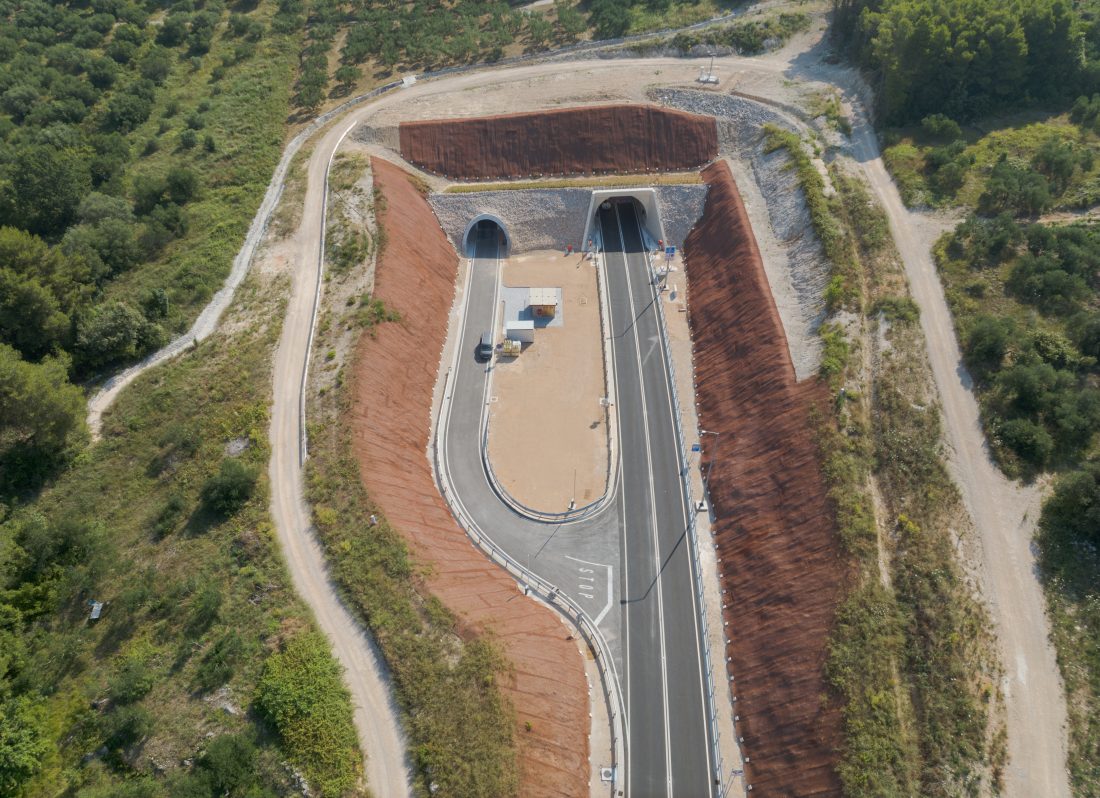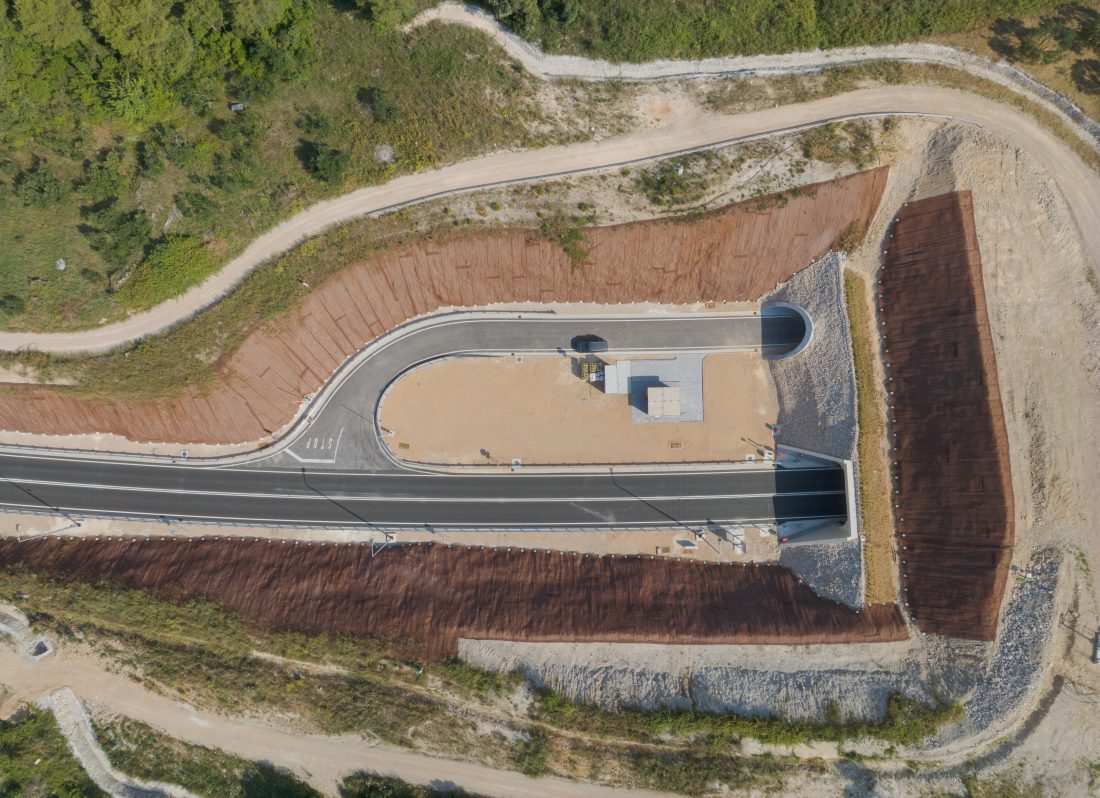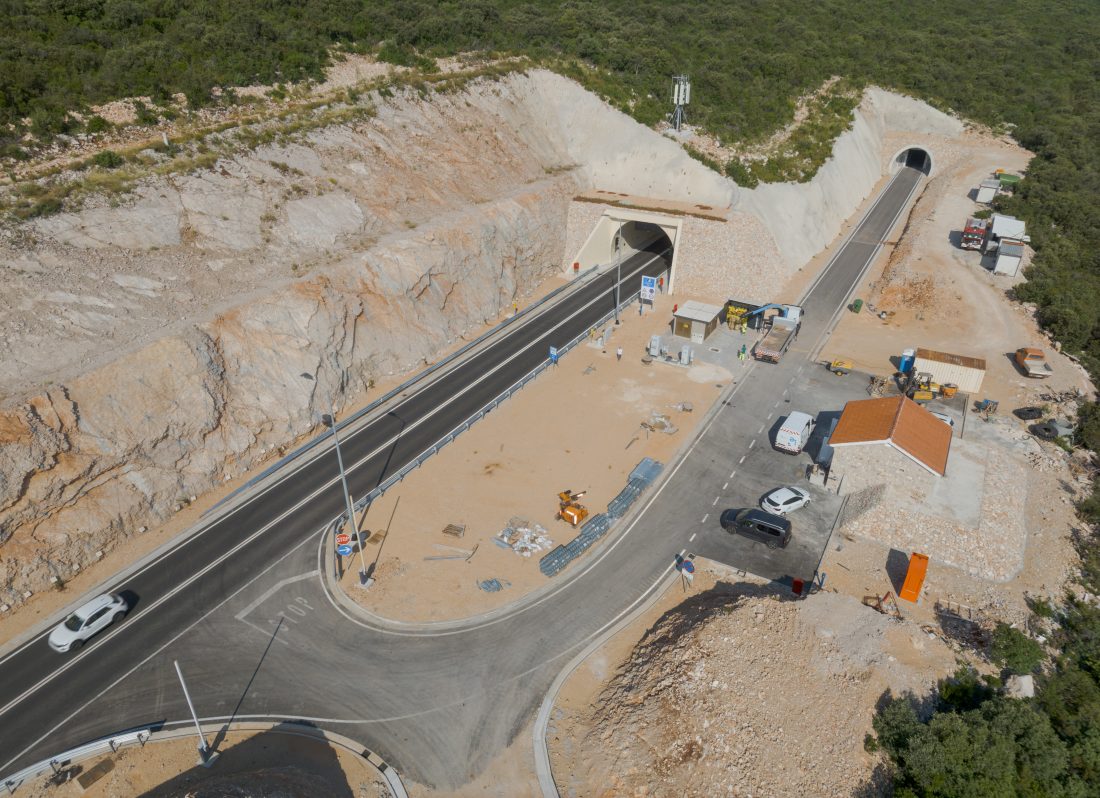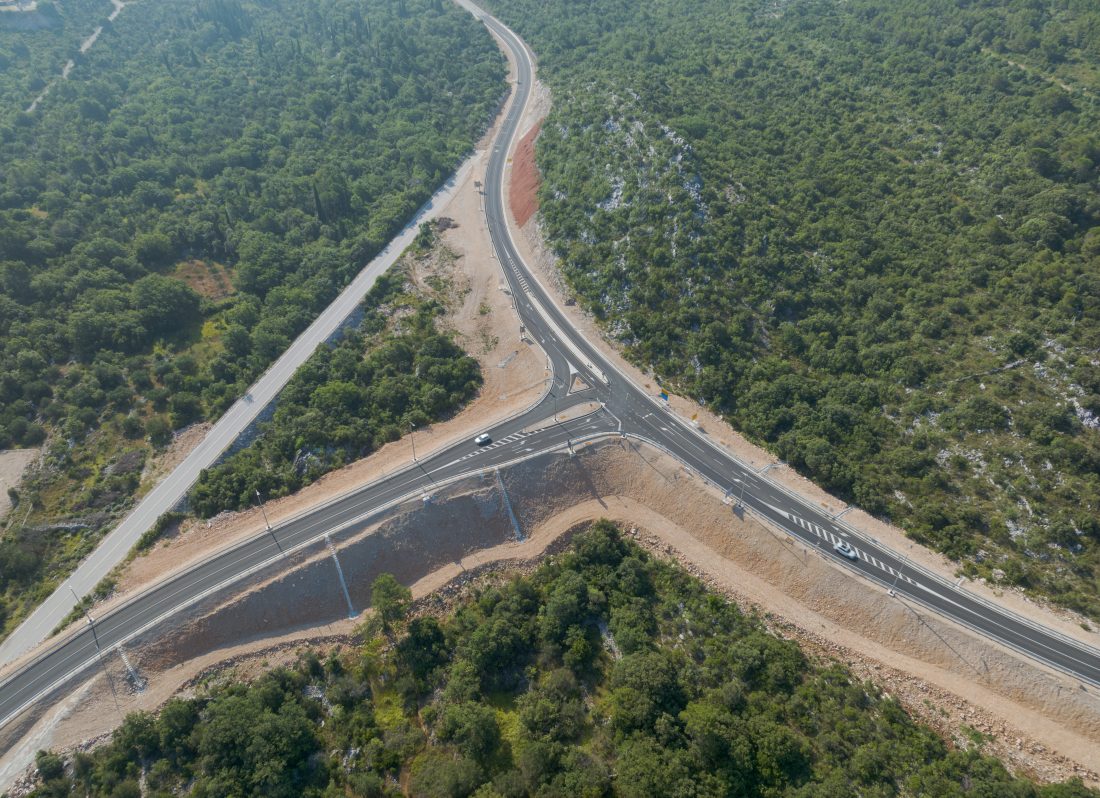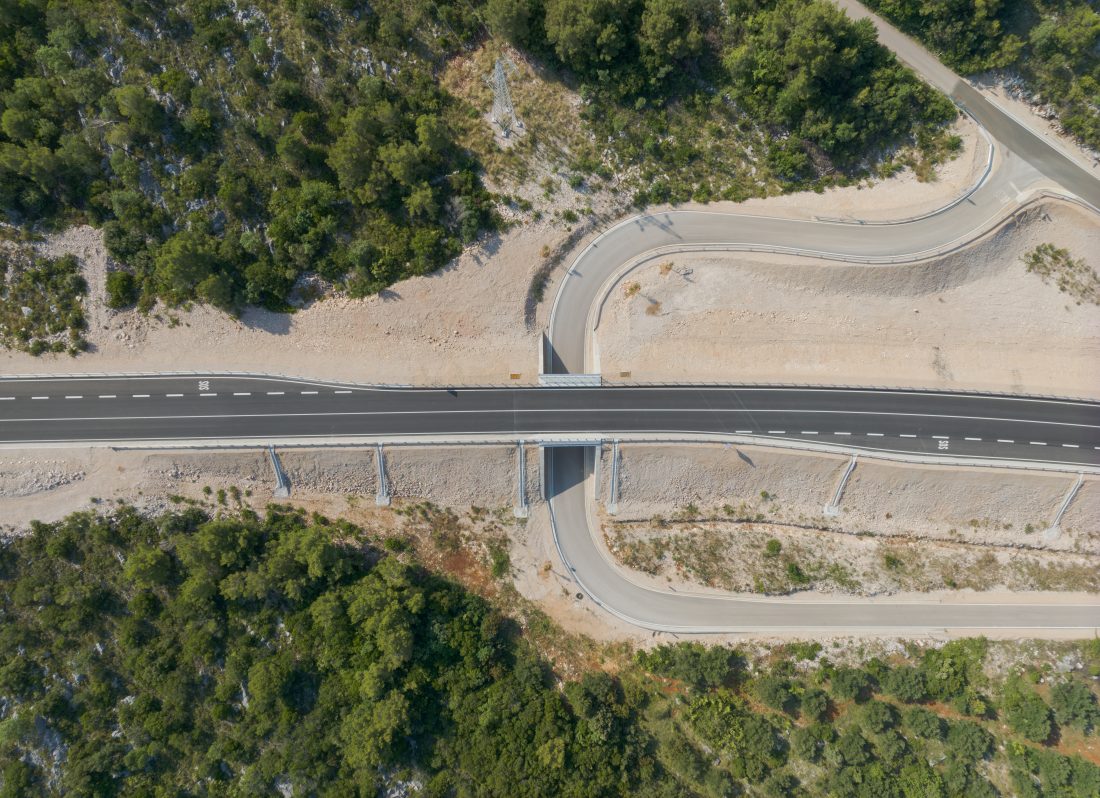Project summary
The project envisages construction of new roads in the length of 32,5 km. The core part of the project is the construction of a 2,5 km long bridge which represents a direct road connection between the greater part of Croatia and the South Dalmatia, which is separated from the rest of Croatia by the Neum Corridor (approximate width 10 km).
Furthermore, the project includes construction of a connecting road to the main road on Pelješac, upgrade of the existing roads on Pelješac and construction of the Ston bypass, which is a link to the highway in the direction of Dubrovnik and Montenegro.
The project is divided into three phases of construction:
1st Phase: Construction of a 2,5 km long bridge with a connecting road across the Pelješac peninsula to the D8 in Đonta Doli – a connecting road from junction Komarna to the bridge and a connecting road from the bridge to the junction with the field road on the Pelješac peninsula;
2nd Phase: Construction of an access road to the bridge – from the junction with the field road to the state road 414 on Zaradeže location (Duboka – Sparagovići/Zaradeže);
3rd Phase: Ston bypass (from junction Prapratno to junction Doli on State road D8) and a road from junction Sparagovići/Zaradeže to junction Prapratno (including the junction).
The key problem, which stems from the fact that there is a lack of the territorial land connectivity of the southern part of the Republic of Croatia with the rest of the country, will be solved by implementing the project “The Road Connectivity of South Dalmatia”. The access to the Dubrovnik-Neretva County requires crossing the territory of Bosnia and Herzegovina (BiH) in the length of 9,25 km; this creates the obligation of crossing the state and the EU border twice (upon leaving and entering the territory of the Republic of Croatia and the EU territory). The establishment of a full Schengen border control regime in the coming years will oblige the Republic of Croatia to implement strict rules when crossing the border with BiH. This implies that all passengers would be required to undergo Schengen controls twice in a very short period of time, which would further reduce the accessibility and connectivity of the Republic of Croatia, and cause congestion and bottlenecks at the border crossings, which are already infrastructurally ill-equipped to accommodate a large number of freight and other vehicles. The consequences would include the economic, socio-economic and touristic isolation of the regional center in Metković as well as an increase in harmful emissions. The increased duration of travel would further contribute to the isolation of the regional centers, Metković and Dubrovnik. The previously mentioned consequences would have a negative impact on the economy, the environment and the demographics of the region.
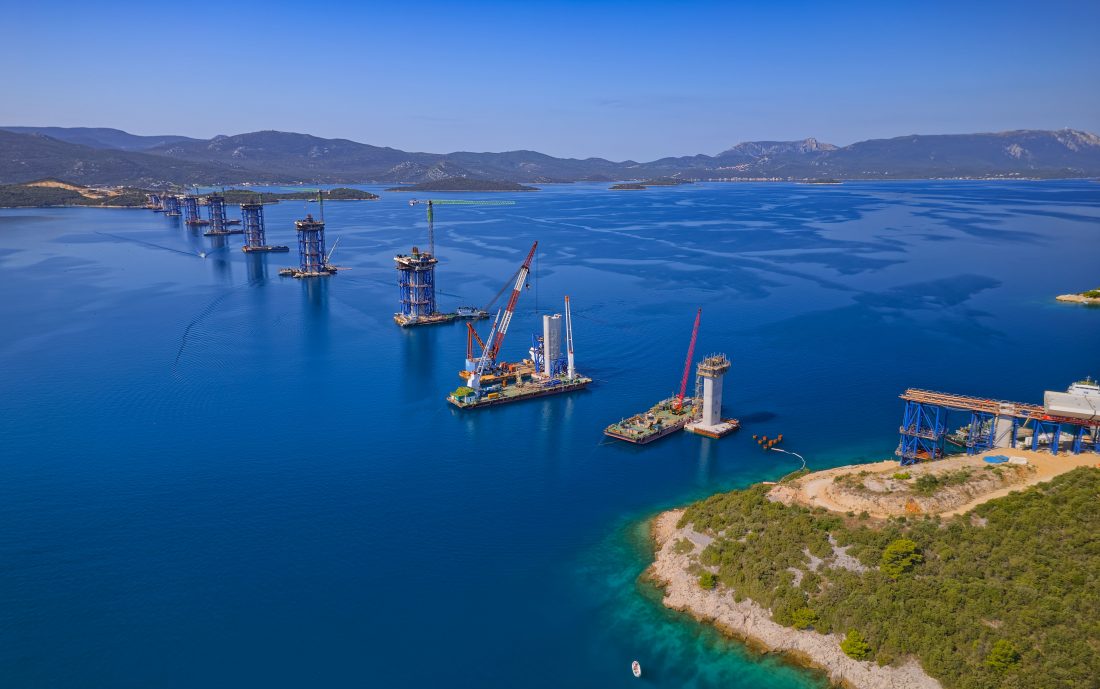
The implementation of the project is divided into 9 elements:
EP1: Construction of the Pelješac bridge
The construction of a 2.4 km long mainland – Pelješac peninsula bridge and construction site supervision services will be contracted.
EP2: Construction of access roads Duboka (D8) – Sparagovići / Zaradeže (D414)
Works on the construction of access roads to the Pelješac bridge on the mainland and Pelješac sides, 12.04 km long, and other services will be contracted.
EP3: Construction of Ston bypass (D414) – subsection Sparagovići / Zaradeže – Prapratno
Works on the construction of a 10.2 km long sub-section and other services will be contracted.
EP4: Construction of the Ston bypass (D414) – subsection Prapratno – Doli
Works on the construction of a 7.89 km long sub-section and other services will be contracted.
EP5: Land acquisition
Land will be purchased at the project implementation site.
EP6: Price adjustment
The funds are used for the purpose of price adjustment (so-called sliding scale).
EP7: Reserve
It will be used to finance unforeseen project costs.
EP8 (V) Publicity and visibility
Marking the location with temporary and permanent billboards and promotion of the project related to the start of the construction, opening ceremony, as well as all other promotional activities relevant to a project of this scale.
EP9 (PM) Project management and administration
Activities needed to monitor the implementation of the project, measure achievement, implement dynamics and measures of avoiding / mitigating the risks as identified in the implementation phase.
The project is aligned with the relevant strategic documents, in particular with the OPCC 2014-2020, the Investment Priority “7a1 – To improve the TEN-T Road Network and Access to the TEN-T Road Network” and the Transport Development Strategy of the Republic of Croatia 2014 – 2030, where it is listed as a strategic project and identified within multimodal Objective 2: Improvement of Passengers’ Long Distance Accessibility inside Croatia. Finally, the implementation of the project will result in reducing time to travel, from 101 to 35 minutes, and building 32.53 km of new roads.
Objective of the project
The objective of the project “The Road Connectivity of South Dalmatia” is to reduce the negative consequences, which arise from the implementation of the Schengen rules, for the Republic of Croatia and strengthen the connection of territories and functional regional centers by constructing the Pelješac Bridge, access roads and the road across Pelješac, also known as the Ston bypass, in the 2016 to 2022 period.
Strategic project objectives are the following:
- Improvement of TEN-T network components along the Adriatic coast
- Enhancement of the competitiveness of the region
- Connecting the separated territory of the South Dalmatia with the rest of the Republic of Croatia
- Increasing the reliability of the transport system
- Minimizing the impact of climate change
- Minimizing the project’s environmental impact
Specific project objectives obtained by detailed analyses in the project preparation phase:
- Increasing the level of service of the transport system
- Increasing traffic safety
- Increasing reliability of regional supply
- Shortening time of travel between Split and Dubrovnik, Split and the Pelješac peninsula and the island of Korčula, and Dubrovnik and the Pelješac peninsula and the island of Korčula
- Providing access to the region when adverse weather conditions, e.g. strong wind, do not allow regular access by air and sea
- Reducing the impact of traffic on the environment by shortening time of travel
- Reducing the impact on cultural heritage, the town of Ston in particular
The implementation of this project will have a positive effect on projects outside the transport sector. This applies especially to the ICT sector in which the development of projects related to installation of fiber-optic and other infrastructures will be enabled due to pipes that will be laid in this project. It will also provide an impetus to business infrastructure development projects in the area where this project takes place. Finally, the local communities shall benefit from this project.




![HDR created and tone mapped with easyHDR 3.16: [1] DJI_0519_D.tif, [2] DJI_0517_D.tif, [3] DJI_0516_D.tif, [4] DJI_0518_D.tif, [5] DJI_0520_D.tif](https://povezanahrvatska.eu/wp-content/uploads/2020/05/DJI_0516_D_17_D_18_D_19_D_20_D_easyHDR-Edit-1100x798.jpg)

